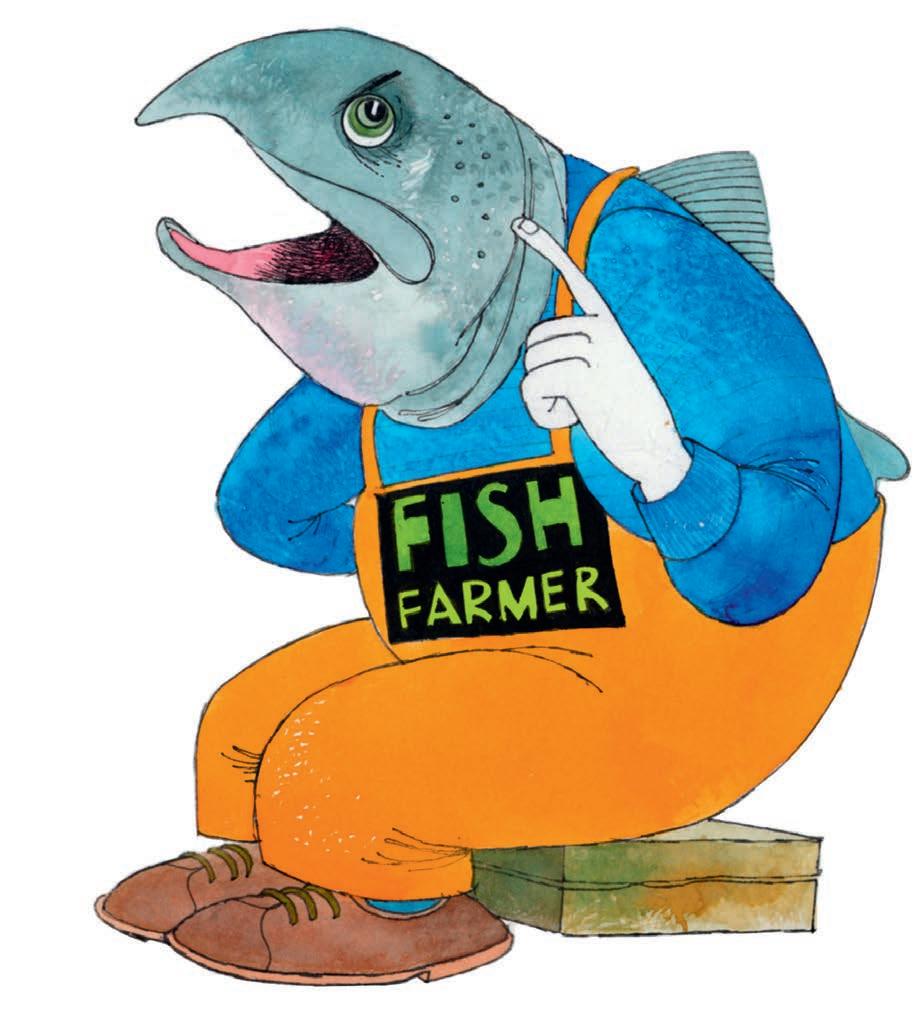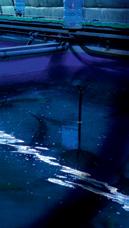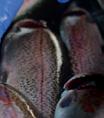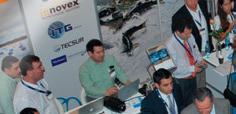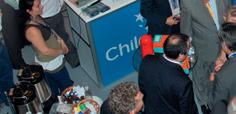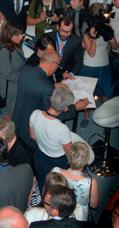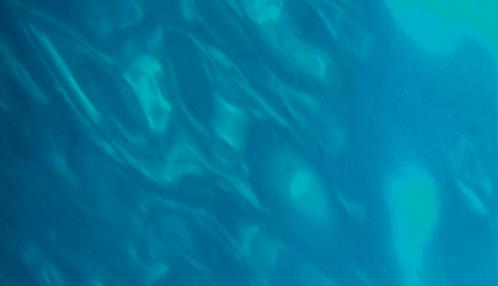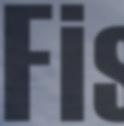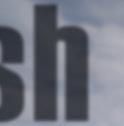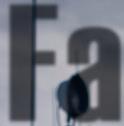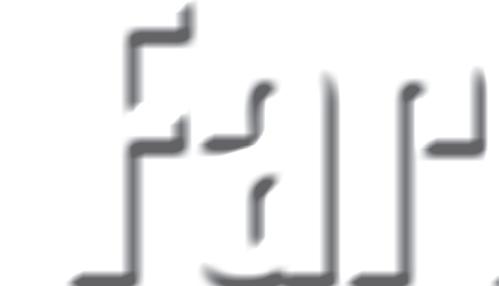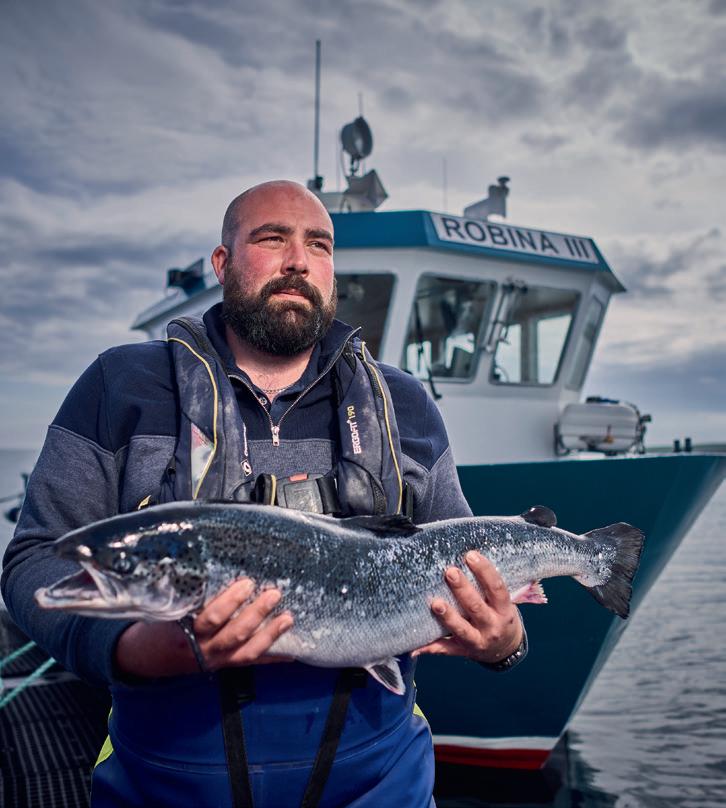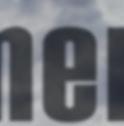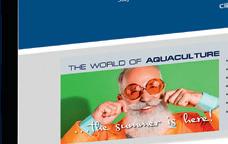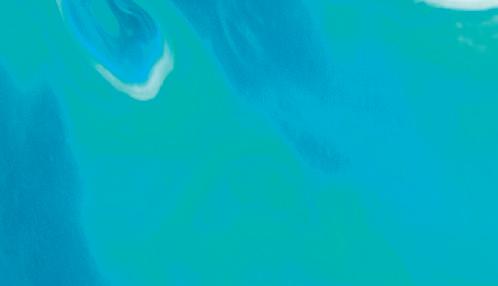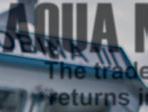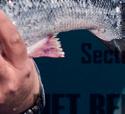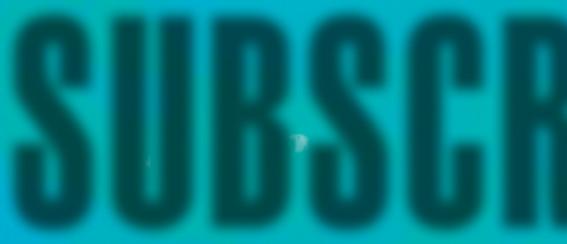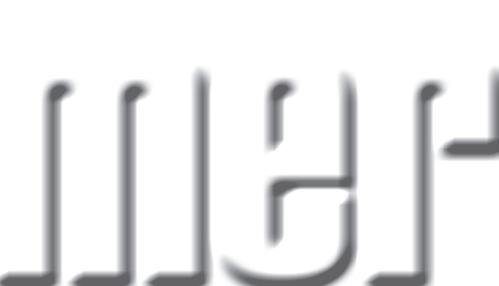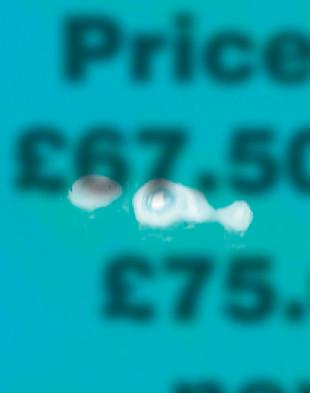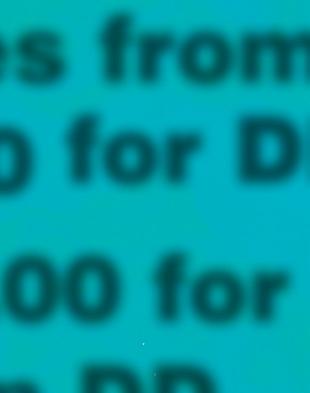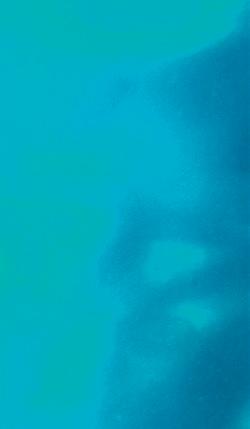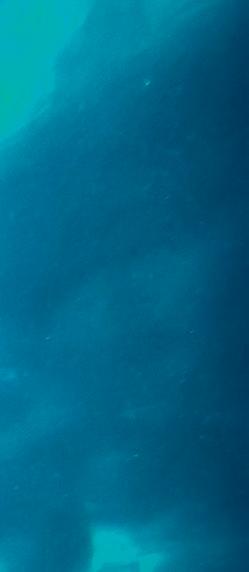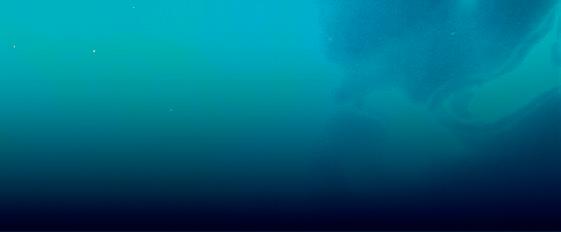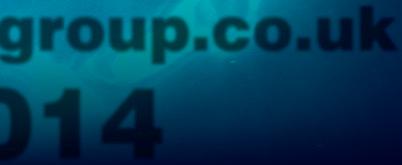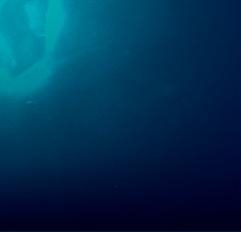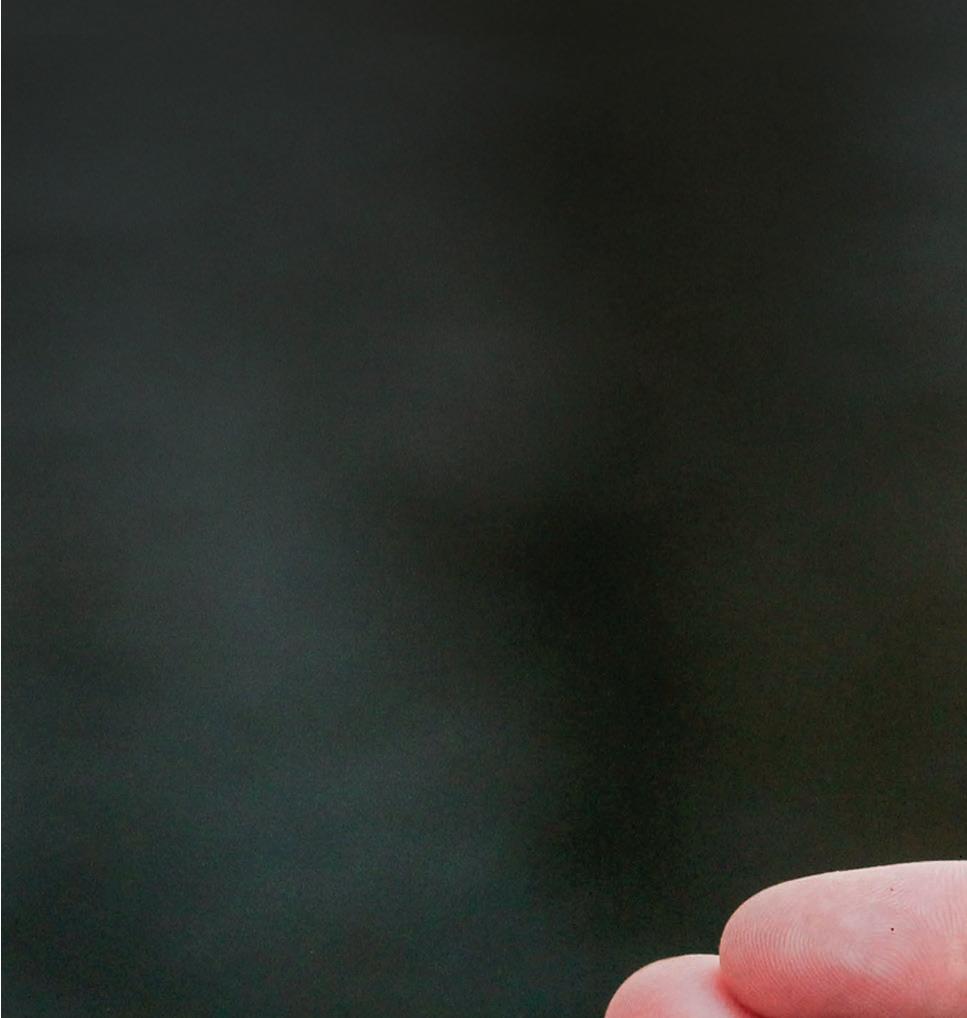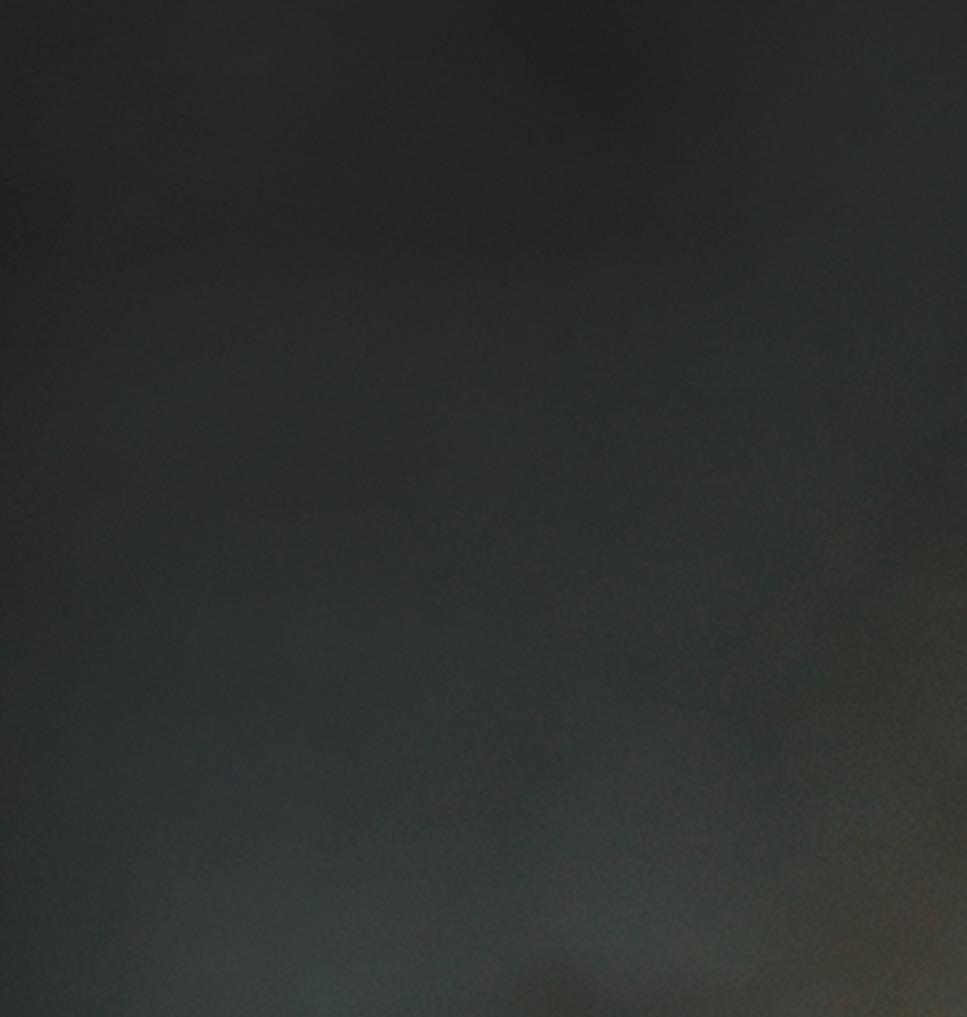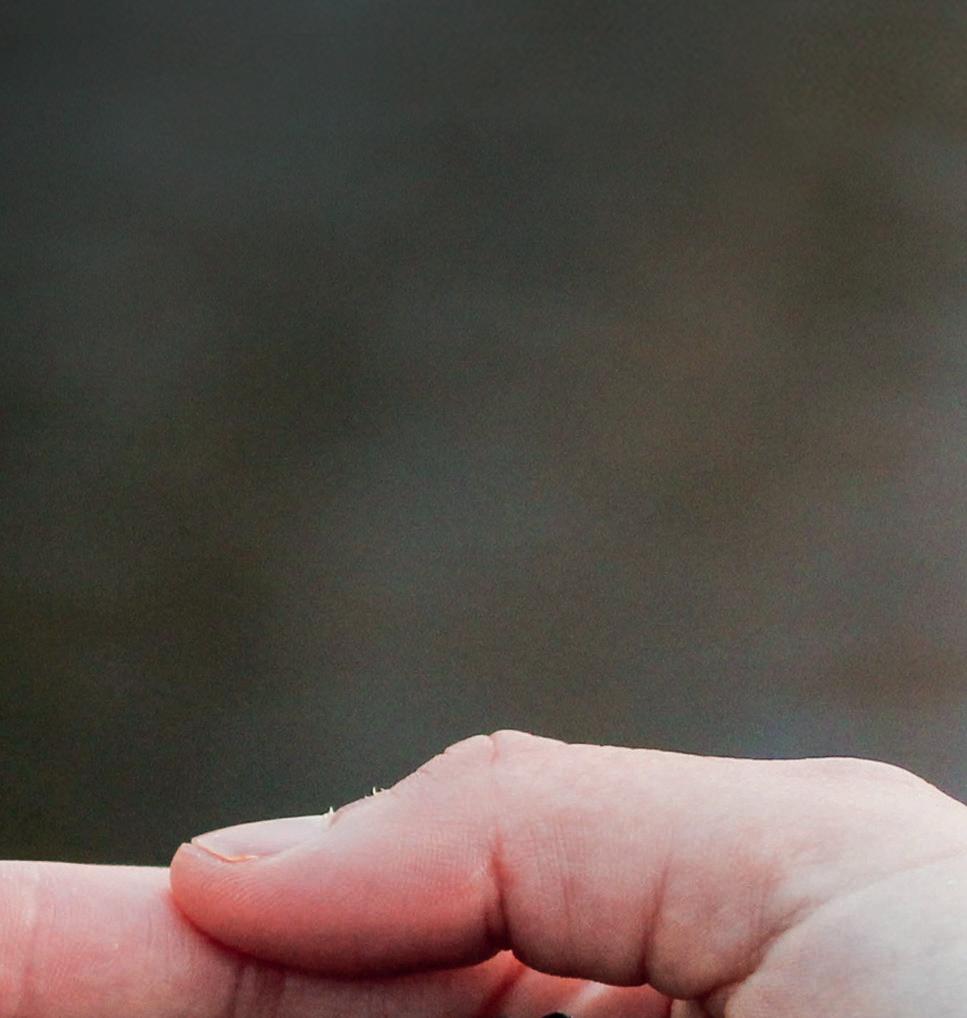
















Report from the TriNations 2024 event
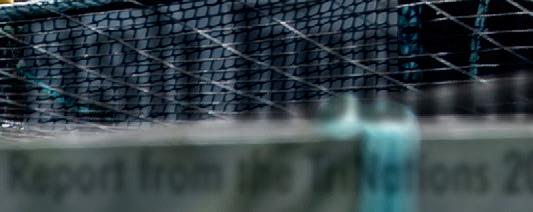


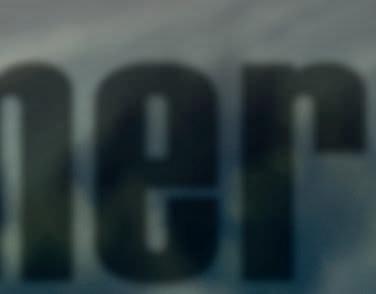

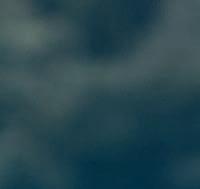




A different approach to raising salmon
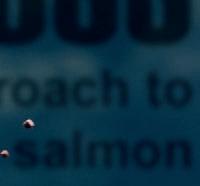
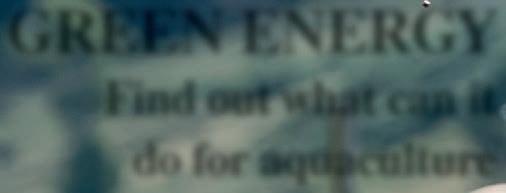
Find out what can it do for aquaculture


West Africa: unethical source of aquafeed?



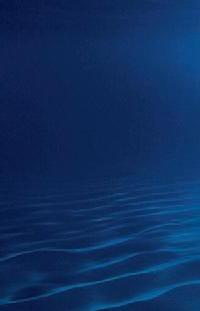

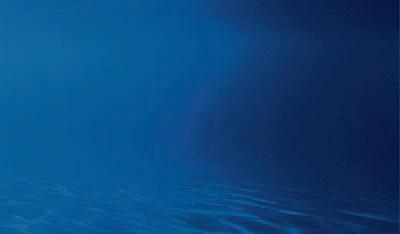


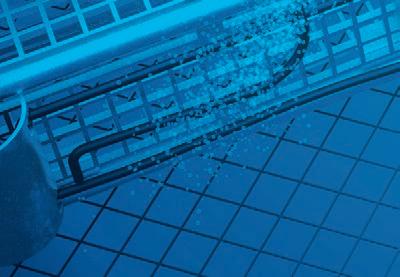
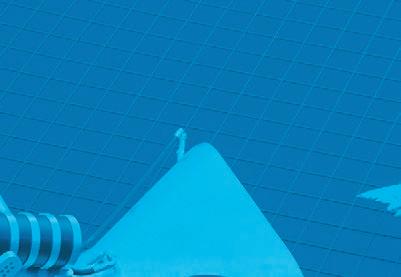
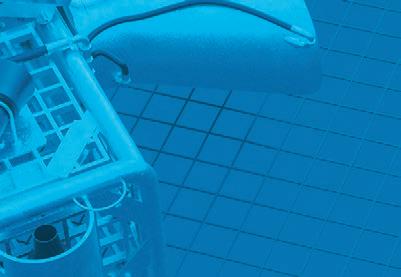

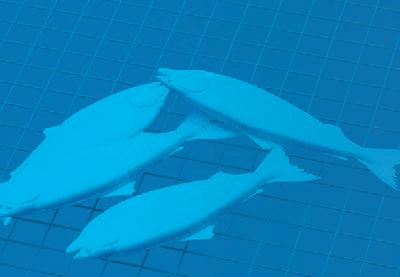
Combines a fully independent ROV (multiple ROV platforms can be utilised) with our patented mort collection system. Powered by an inspection class ROV, this system is very manoeuvrable and able to cope with challenging environments. The ROV can be detached and used to undertake inspection work or other underwater tasks with our range of tools, such as net repairs, rope cutting or attaching.

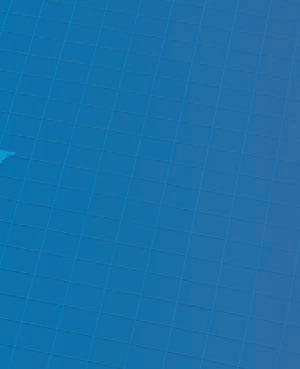
This in-house designed mort collector is powered by water jets, making it robust, simple to operate and the more cost effective method for mort removal. There is limited moving parts, resulting in low maintenance and this system too can cope with the harshest environments found in salmon and trout farms.
Both systems come with a variety of collection basket sizes.
Our F90 basket has a 90 litre capacity, which can be used for the recovery of small fish such as sea bass and sea bream farmed in the Mediterranean Sea or even be used to collect salmon smolts or juvenile fish.


The F600 basket (600 litre capacity) can be used for harvest sized salmon and trout and can even be used to collect brood stock. The F440, is our standard size and provides a good balance of footprint and capacity.
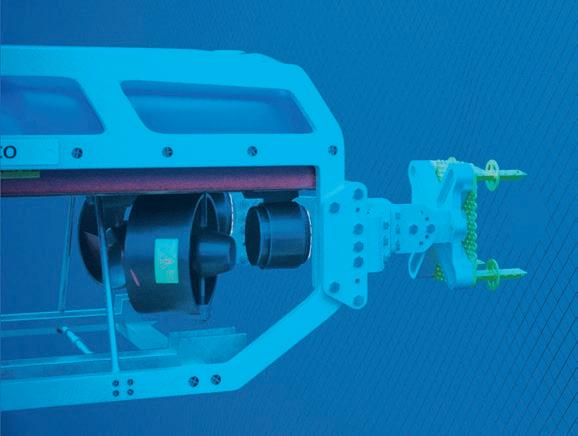

The NetFix repair system uses a patch to cover small holes in fish pens. Deployed with an ROV following an inspection, the temporary patch can be placed easily, ensuring full containment of your stock.
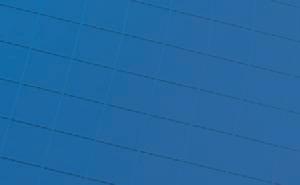
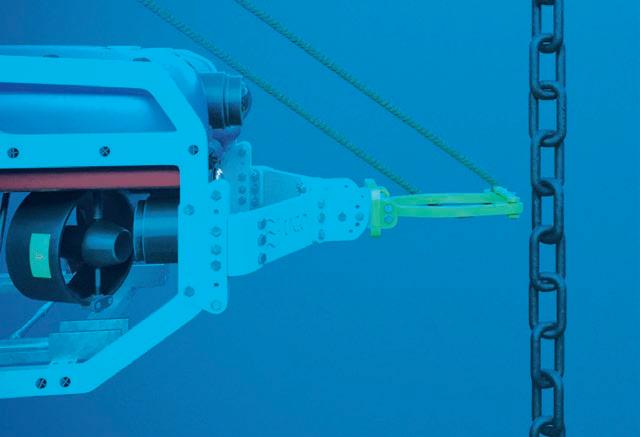

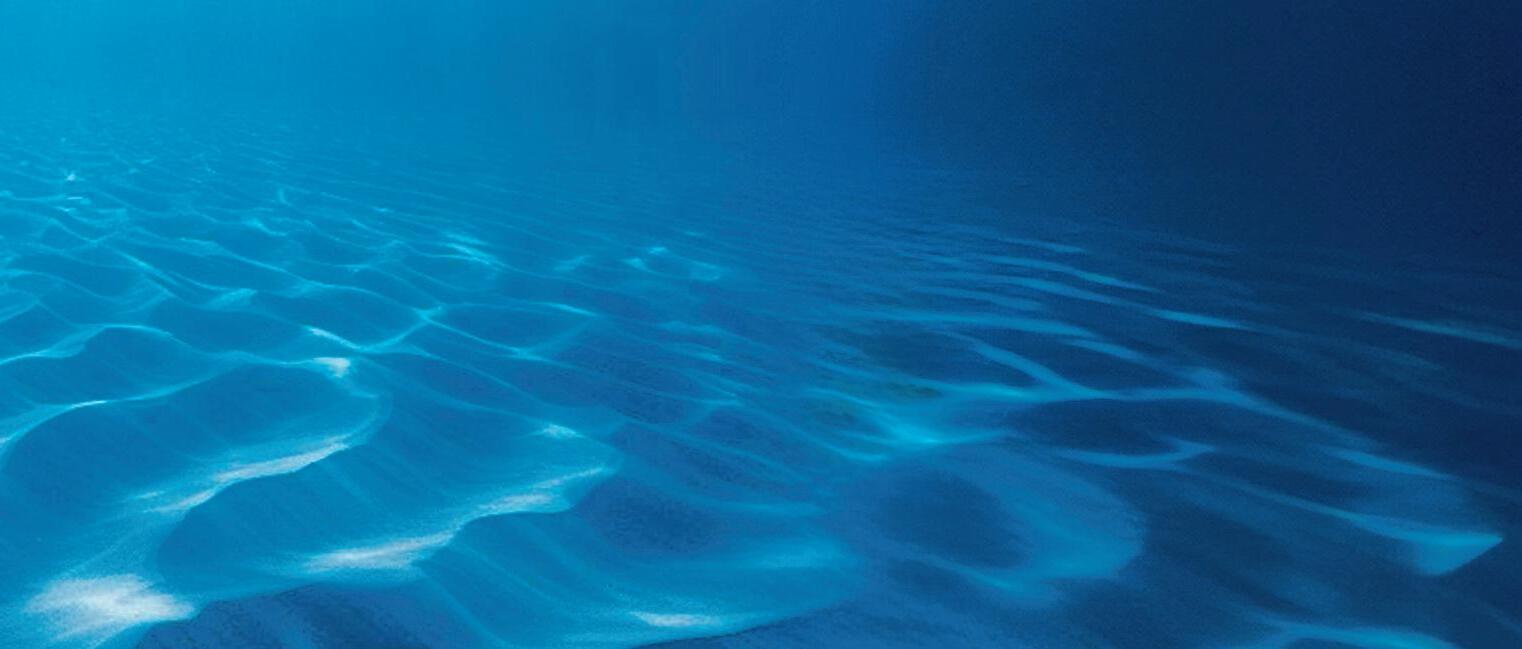
Our range of tools can be used to turn your ROV into a more useful underwater tool, with the ability to loop ropes, attach a carabiner hook or cut ropes. The tools fit into the same frame used for the NetFix repair system.
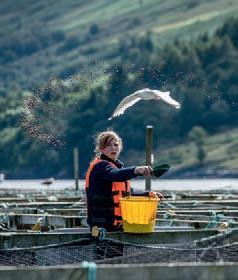












HANGE is pretty much a constant these days, but sometimes it takes effect in a particularly dramatic form. Just like that, the UK has a new government.
What does it all mean for aquaculture? It’s safe bet that fish farming will feature pretty low on new PM Keir Starmer’s priorities, but even so the Labour government’s strategic aims will have an impact, from a willingness to improve relations with our European neighbours and the UK’s devolved governments to a commitment to clean up Britain’s waterways and coastlines. Our article on the new political scene suggests what’s next.
And as Salmon Scotland’s Tavish Scott writes in his column this month, the salmon industry is taking its message not only to a new UK leadership but to a (relatively) new First Minister in Scotland.
For Wester Ross Fisheries, change came suddenly two years ago when it emerged that the company, formerly one of Scotland’s few remaining independent salmon farmers, had been acquired by Mowi, the world’s biggest player in this industry.
Wester Ross has a very distinctive approach to rearing salmon, with smaller pens and hand feeding wherever possible. There was a lot of speculation, therefore, over how the Wester Ross way might change under Mowi’s ownership.
Fish Farmer visited Wester Ross to ask that question – you can see what we found out in our cover story this month.
Meanwhile, the August issue also features Sandy Neil’s article on “green energy” and how it could be deployed effectively in aquaculture. Vince McDonagh examines the impact (so far) of Norway’s “salmon tax” and at a couple of projects that are setting out to find out more about the jellyfish threat; and Nick Joy looks back at a quarter-century for Loch Duart, the business he co-founded.
It’s not all salmon – we also focus on a study showing how shrimp farming can benefit from a combined approach including seaweed and shellfish, and on the winning student projects at the University of Swansea, which raise interesting questions for tilapia and shrimp welfare.
Read all this and more in our packed August issue!
Best wishes Robert Outram
Meet the team
Editorial advisory board: Steve Bracken, Hervé Migaud, Jim Treasurer, Chris Mitchell and Jason Cleaversmith
Editor: Robert Outram
Designer: Andrew Balahura
Commercial Manager: Janice Johnston ohnston fishfarmermaga ine com
Office Administrator: Fiona Robertson frobertson fishfarmermaga ine com
Publisher: lister Benne
@fishfarmermagazine
www.fishfarmermagazine.com
Fish Farmer Volume 47, number 08
Contact us
Tel: +44(0)131 551 1000
Fax: +44(0)131 551 7901
Email: editor fishfarmermaga ine com
Head office: Special ublica�ons Fe es ark 496 Ferry Road, Edinburgh EH5 2DL
Subscrip�ons address: Fish Farmer maga ine subscrip�ons arners roup ublica�ons plc The al�ngs est Street Bourne Lincolnshire PE10 9PH
Tel: +44(0)177 839 2014
UK subscrip�ons: £75 a year OW subscrip�ons: £95 a year including postage all air mail
Nicki


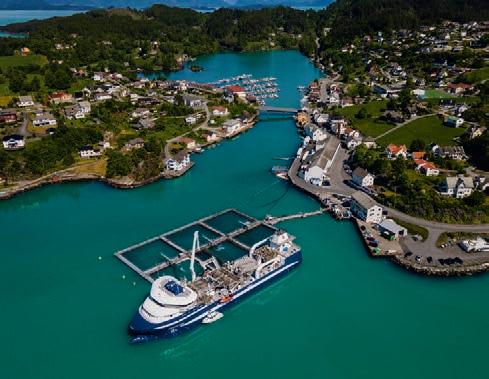






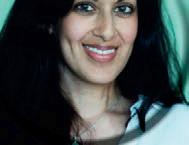






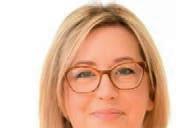

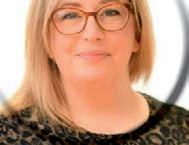
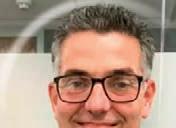
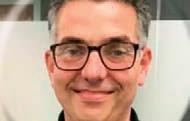
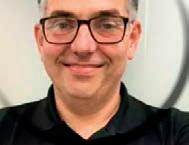



THE Scottish Government has defended its decision to allow a four-year implementation period for new regulations which will reduce the permitted limits for a key sea lice treatment. Environmental campaigners have expressed concern that the new limits will not be imposed sooner.
reduce the number of treatments that can be made in a cycle.
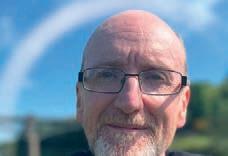

The consultation on a new environmental quality standard (EQS) for emamectin benzoate (EmBz), marketed commercially as Slice, ran from April to July last year. The EQS will see the limit of 763 nanograms (ng)/kg of sediment wet weight reduced to 272ng/kg dry weight.
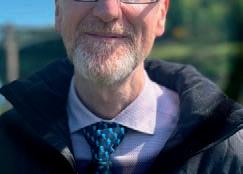
“Emamectin benzoate is persistent in the environment, breaking down slowly, therefore, to avoid exceeding the environmental standard, sufficient breakdown is necessary before more can be accommodated or increased waste capture is required.”
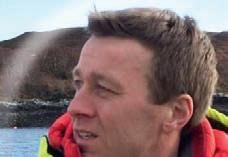
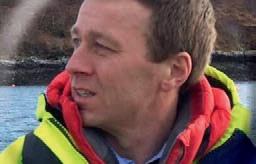

The Scottish Environment Protection Agency (SEPA) said that tighter limits were being introduced following scientific evidence that EmBz is harmful to crustaceans in the areas it is used, as well as the sea lice which it targets.
Views in the consultation ranged from resistance on the part of some producers, and scepticism over the scientific basis for the change, to calls from environmental lobby groups for a complete ban.
While the new limits for EmBz are already being applied to applications for new or increased discharges, the Scottish Government stated: “Taking into account sector concerns and the need to safeguard the environment, Scottish Ministers will direct SEPA to implement the EQS within a 48-month timeframe.”
The statement went on: “Scottish Government acknowledges that the application of the new EQS is likely to
The time allowed to implement the change acknowledges concerns that fish farmers will need to change their lice treatment plans, especially for younger, smaller fish that will less easily withstand handling in mechanical or freshwater treatments.
The grace period was not universally welcomed, however. John Aitchison, Chair of the Friends of the Sound of Jura, posted on X (formerly Twitter): “By 2028, the Scottish Government will have allowed salmon farms to discharge the pesticide emamectin benzoate into the sea for 12 years, at levels that it knew were killing wild crustaceans far away from the farms. Scottish Ministers should be ashamed.”
Peter Pollard, Head of Ecology at the Scottish Environment Protection Agency, said: “As Scotland’s principal environmental regulator, we’re clear in our role around safeguarding our marine environment.The development of the new environmental standard for emamectin benzoate (EmBz) in marine sediments was led by the UK Technical Advisory Group.
“The standard was derived following
internationally agreed methodology for setting environmental standards and using the best available scientific evidence on the toxicity of the medicine to aquatic life.We remain confident in the approach undertaken by UKTAG and the Scottish Government, which is led by scientific evidence and understanding in accordance with a procedure set in law and EU-wide guidance.
“SEPA have been applying the new environmental standard when determining applications for proposed new, or increased, discharges of EmBz since March 2023. This updated interim environmental safety limits that we had been applying since 2017 to regulate all proposed new, or increased, discharges of EmBz.
“Following Scottish Government’s decision on the application of the new environmental standard to all discharges, including those authorised prior to our application of interim safety limits in 2017, we have begun work to calculate updated licence conditions. These will reduce the quantities of EmBz that can be discharged and enable the progressive recovery of the environment from the effects of past discharges. We will ensure these new conditions come into force, and are complied with, in accordance with the timetable set by Scottish Government.”
Dr Iain Berrill, Head of Technical at industry body Salmon Scotland, said: “Scotland’s salmon farmers take their responsibilities to the environment very seriously and provide world-leading standards of animal health and welfare that are independently verified by government and third-party certification bodies.
“We have engaged fully in the process to establish a scientifically robust standard which is based on the most up-to-date and rigorous evidence available, adheres to European guidelines, and includes a high margin of safety to protect the marine environment.”
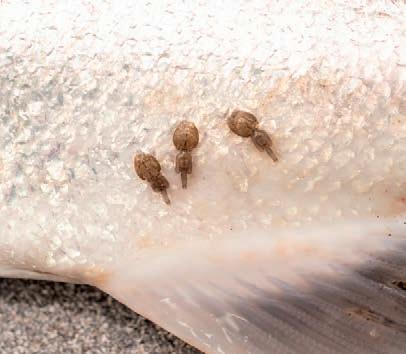
THE first of five fully refurbished Sea-Cap barges (pictured below) has been delivered to Mowi Scotland at Loch Etive.
The move is part of a project to reduce the number of farms from four to three while ensuring that all operations and the visual appearance of the sites meets the highest standards.
Three barges will be used in Loch Etive and will feed remotely from the shore base, reducing marine traffic on the loch and vessel emissions, while two barges will be available for Mowi’s operations in Ireland.
Mowi said that the upcycling of redundant concrete barge hulls into low profile energy-efficient hybrid barges will provide sustainability benefits and cost savings of around £4m relative to purchasing new feed barges.
A consultation exercise was held with residents in the Loch Etive area. The sites have been part of Mowi since it acquired them from Dawnfresh in 2022.

Area Manager Clara MacGhee said: “Upon consultation to gauge the views of the communities surrounding Loch Etive, residents were largely supportive of the changes to lower profile equipment and hybrid battery barges.”
Some, however, said that farming operations could be tidier, so this shift is an important step to reduce the impact on the surrounding area, she added.
Dougie Gibson, who is a specialist in vessel and barge engineering, said: “The refurbishment and re-use of these redundant barges is a great use of resources with a positive outcome for the environment. All five barges have been fitted with sound proofing and designed to lessen the height and visual profile, reducing emissions and noise.”
Stewart Graham, Gael Force Group Managing Director, commented: “With the advances in technology and barges now being able to be remotely operated from feed control centres, it became clear that there was a potential large sustainability and economic upside to upcycling the barges... it is a superb example of low environmental impact and low-cost repurposing of an existing asset which, due to the hybrid system fitted, will now also run with very significant energy savings too and we congratulate Mowi for its vision and commitment to this ongoing upcycling project.”

Harvest has seen its application to open two new marine farms off Skye knocked back for a second time.
The company, which raises organic salmon certified by the Soil Association, is looking to operate two sites at Flodigarry and Balmaqueen, on the north-east coast of Skye. It says the expansion is necessary because its two existing farms at Culnacnoc and Invertote, also on the Skye coast, are by themselves not economically viable. Previously, applications for larger farms on the same proposed sites were rejected because their presence would, Highland Council ruled, spoil the visual amenity of the area.The sites are overlooked by footpaths although these are not heavily used. This time, planning officers had recommended the planning applications be approved, but they were overruled by a majority vote in the North Planning Applications Committee.
At the time of writing, the company was believed to be considering its next steps.
AQUACULTURE services business Inverlussa has acquired its rst e t e esse ic s een ren e Isaac McKinnon i e r in it s n r ucer i n t e est c st f c t n
n er uss re er tes r ts f r t e s n in ustr n t e iti n f t e c n s rst e t i rin its t t fleet t
The Isaac McKinnon icture ri t s en t f n
e c cit f 3 t s re tte n u r e t t e s
e i r in r ere it s ri in ui t
en i s n n er uss s n in irect r s i is is er e citin ti e f r t e c n es ite it ein n tur r ressi n fr ur current er ti ns it is sti i ste f r r f r us
n er uss ins er s nu er f se e t er t rs e c n s s it s re recruite e erience cre int e r es n u s i e s e f its current r f rce
in t t e future t e s n t ttr ct ne t ent int t e in ustr i t eir recent nn unce ets i r r e
ri r t t in fleet
n er uss s s c issi ne ne ri r t fr
c uff i r s e ne ri iese e ectric r t
i e etres n n er te it cre f si t i
e e ui e it u r e cr ne c cities n ec e ui ent
inc u in r er t in n e ut inc es esi ne t ift n t e ects suc s fee r es is s eci ise e ui ent i en nce t e r s s n f r rin ri
n in c i ities n net iftin c cit

nten e t ser ice r er sites er tin in ee er re e se n re te ffs re c ti ns t e esse s esi n e sises nce se ee in c i ities t r i e st e tf r in r u se s
t i s fe ture e ensuite c ins it si ni c nt f cus n n ise re ucti n es eci en c n uctin ur er ti ns t en nce cre c f rt n i in c n iti ns r
c t n s e ut irst inister te r es e c e t e nn unce ent s s e itnesse t e c ntr ct si nin t c uff r ur
e s i n er uss s test esse i rin re i u it
s t c t n i e rnessin reen tec n ies t su rt ur net er iti ns
t is cruci t t e c ntinue t e r ce inn ti n in u cu ture r ctices s t t t e sect r c n ec e resi ient t t e ressin c en es se c i te c n e
eafish launches sur e on ear end-o -li e issues
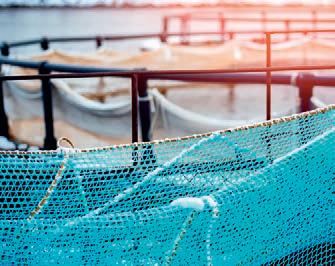
SEAFISH, the public body which supports the UK seafood industry, has launched endof-life fishing and aquaculture gear surveys to help minimise waste and encourage greater recycling. Seafish’s researchers
will interview supply chain stakeholders to glean important insights, including where gear is manufactured and assembled, the types of materials used, the average lifespan and what happens once the gear reaches the end of its useable life. Seafish has invited anyone involved in fish or aquaculture, or with expertise on this issues, to take part in the survey by contacting . survey seafish.co.uk and Seafish researchers will be visiting sites around the in August and September.
TH- AST Scotland-based engineering specialist Brimmond has reported a increase in turnover for the - financial year.The company saw revenues hit . m, far exceeding its target of m.
The business has won a number of high-value contracts across multiple sectors, including a five-year service contract with British Antarctic Survey BAS for crane servicing and engineering support on the oyal esearch Ship S Sir David Attenborough.The company’s largest service contract to date will see Brimmond become the main hydraulic contractor for refit periods, working across the ship’s osyth and Harwich bases.
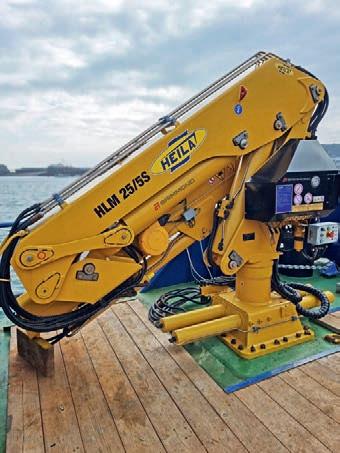
I’S Inchmore Hatchery, south of Inverness, is undergoing a major transformation into a unique visitor experience. The Scottish visitor centre will showcase how the industry is helping to feed an everincreasing world population in a sustainable way, continually adapting and evolving to

improve itself and the end product. reative agency Dynams are leading the project, developing a concept that will appeal to key stakeholders including politicians, investors, buyers customers, community groups and those interested in careers in the industry. The transformation makes use of bold static graphics and unique sensory displays, as well as interactive digital touchscreens featuring a series of short films that delve deeper into the owi story.
A CONSORTIUM of researchers from Scotland, Norway and the Faroe Islands are working on a project aimed at creating a better model for the dispersion of sea lice in water.
The project, known as SAVED – Sustainable Aquaculture: Validating Ectoparasite Dispersal (Models) – recently received a funding boost from the Sustainable Aquaculture Innovation Centre (SAIC).The aim is to create a new system to validate the results of existing dispersion models.
Project partners include the University of Strathclyde; Mowi Scotland; Scottish Sea Farms; Bakkafrost Scotland; the Scottish Government’s Marine Directorate; the Norwegian Institute of Marine Research; Firum, Aquaculture Research Station of the Faroes,The NW Edge, and Scottish Environment Protection Agency (SEPA), as an observer.
Sea lice modelling has become a key element in planning consent f r s f r s in uris icti ns i e r n re recent Scotland.There is no universal consensus, however, regarding whether the models currently used to predict sea lice dispersion reflect re it in t e rine en ir n ent
A variety of dispersal modelling tools are already available. However, each model works with a different set of underlying assumptions, meaning they tend to return different results. A new, universally accepted tool for cross-comparison between models and data could lead to a more robust, standardised approach to model evaluation, the researchers say, leading to more accurate predictions of tenti ris t i s
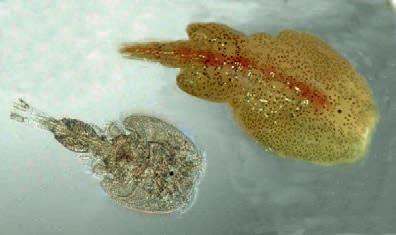
SCOTTISH-based Seaweed nter rises is r isin n nce t build the UK’s largest multispecies seaweed processing hub – and has rolled out a new brand identity for its products.
The company’s new brand is “House of Seaweed” and its plan is to unlock the European bottleneck curtailing growth by stabilising seaweed at scale and producing quality bulk ingredients. Its plans include development to be the UK’s rst u ti se ee r cess r accredited under the BRCGS food safety standard scheme and able to handle any seaweed species by enhancing production capabilities and supporting its own journey to net zero targets.
Pete Higgins, Co-Founder and CEO of House of Seaweed, commented: “We are thrilled to unveil House of Seaweed, a name that embodies our commitment to excellence,
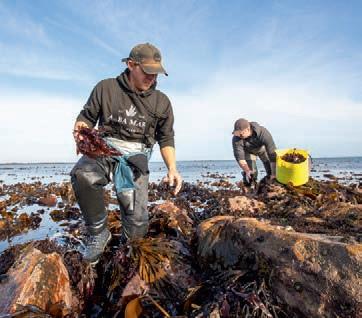
sustainability, and innovation. ur ne i entit reflects n celebrates the brilliance of the raw material we work with and tells the story of who we are, what we do, and the future impact we hope to have.
“We are driven by the environmental and societal impact we can make through our hero ingredient, together as a team alongside our partners, suppliers and customers."
In August last year, Seaweed Enterprises acquired the assets of Fife-based Mara Seaweed.
AQUACULTURE
features prominently in a new report setting out research priorities for the UK’s animal-based food sector.
Governmentsupported body the UK AgriTech Centre has published a report, Livestock and Aquaculture Innovation: Shaping the Next Ten Years, based on input from more than 150 stakeholders in the livestock and aquaculture industries.
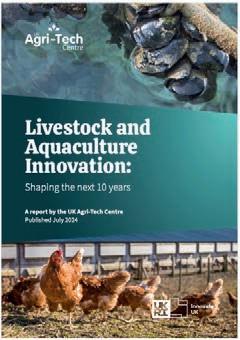
The Agri-Tech Centre was created in April this year with core funding from Innovate UK, following the merger of three existing Agri-Tech Centres. The report sets out 11 thematic priorities, which all fall within the Agri-Tech Centre’s strategic themes.The 11 priorities are:
• Animal Health
• Animal Welfare
• Food Safety, Quality and Nutritional Content
• Climate-Smart Solutions
• Productivity
• Optimised Diets
• Ecosystems and Biodiversity Improvement
• Optimised Land Performance
• Optimised System
• Data Asset
• Technology
Phil Bicknell, UK Agri-Tech Centre CEO, said: “Agri-tech inn ti n s si ni c nt potential to support sustainable and resilient livestock and aquaculture systems, but to do so, we must get ahead of the curve and anticipate tomorrow’s challenges today."
MOWI has reported a second quarter trading EBIT or operational profit of €230m (£195m) with Scotland continuing to improve. This is slightly lower than what some analysts had been forecasting, however.
The world’s largest Atlantic salmon farmer produced a total harvest of 110,500 tonnes, 3,000 tonnes higher than a year ago.
The Scottish harvest was 19,500 tonnes against 18,000 tonnes last year. The Scotland EBIT per kg was slightly lower at €2.20 (£1.88), but it was the second highest in the group.
Mowi said the operational EBIT for the group was approximately €230m (£197m) in Q2 2024. The blended farming cost was €5.84 (£4.99) per kg in the quarter which represented an improvement of €0.21 (£0.17) per kg from €6.05 (£6.15) per kg in the first quarter.
The harvest breakdown in gutted weight equivalents is as follows:
• Farming Norway 59,500 tonnes
• Farming Scotland 19,500 tonnes
• Farming Chile 14,500 tonnes
• Farming Canada 9,500 tonnes
• Farming Ireland 3,500 tonnes
• Farming Faroes 2,500 tonnes
• Farming Iceland 1,500 tonnes (Arctic Fish)
Total 110,500 tonnes
The operational EBIT in consumer products was €25m (£21m) while the operational EBITDA in feed was €11m (£9m).
The reported financial net interest-bearing debt (NIBD) for the group was approximately €1.88bn (£1.6bn) at the end of the quarter (excluding IFRS 16 effects).




























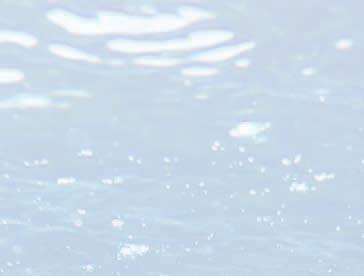

















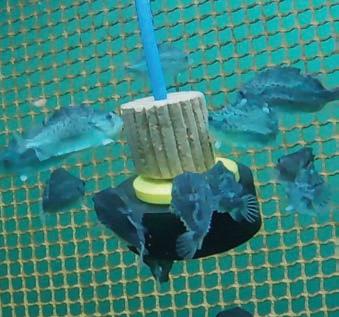
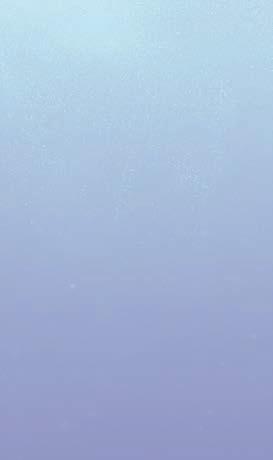

created to detect harmful plankton has analysed around 38 million i es in its rst e r f er ti n t
s f r site in et n e in t t uses a combination of lasers and cameras to detect and photograph microscopic, single-celled phytoplankton in the water, before uploading data for specialist analysis, detection and monitoring. It was deployed by a research team from UHI partners Scottish Association f r rine cience n Shetland, with help from Scottish Sea r s ic er tes t e e ee
s f r in et n t is t e rst ti e
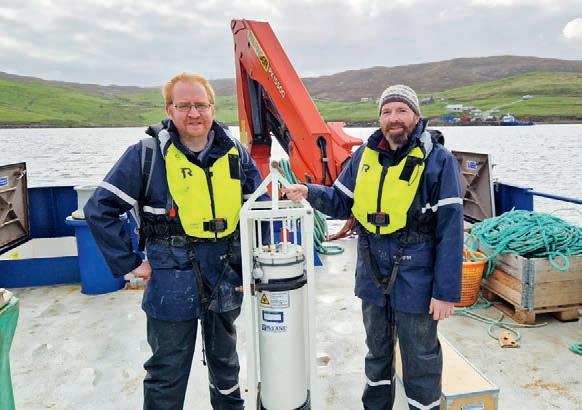
t t n s een e e t r in s f r n ere in ur e
t n t n re critic rt f t e ce n ec s ste ut en t e re c r e nu ers r s t e c n cre te t ins ic re n er us t u ns e tin s e s t t e s r e
t e e s c n s e r fu t f r e s n t n because of the toxins but because they use up dissolved oxygen in
the area, creating a health problem. ince enterin t e ter t e ee in s rin t e s photographed phytoplankton around t e c c t inute inter s n s re i enti e tren s in t e presence of phytoplankton from more than 38 million images taken so far.Thanks to funding from the Sustainable Aquaculture Innovation entre rese rc ers e observations will help them to better understand seasonal trends in harmful phytoplankton blooms. r ect e er r f eit i s n f s i t is n t ri us if cu t to predict when an algal bloom will occur, given the various environmental factors involved in its formation.The more warning e c n i e s n s e s f r ers t e etter t e c nce t e have of mitigating the impact.
it t e e e irtu t n ist n ut r un t e clock, identifying potential risks before a scientist has even looked down a microscope."
SEAFOOD consumption in Britain is continuing to decline, a new survey by the industry body Seafish has found. Cost inflation, which reached its peak last year, is one of the main reasons, but the study says other factors are also in play.
The report says that seafood consumption in the UK fell 22% between 2006 and 2022, but post-Covid the decline has accelerated,

and is now equivalent to a fall of 30% every 10 years.
Seafood retail sales have fallen by 13.6% since the peak in 2021. For foodservice, servings of seafood remain flat, hovering around 20% lower than before the pandemic. Servings are down 18% compared with 2019.
There are a few positives such as farmed fish (presumably salmon) and convenience meals, but the overall picture is not great.
Seafish says: “As with other parts of the food sector, the seafood industry is facing severe challenges but also the prospect of substantial opportunity.
“We’re exploring how seafood consumption in the UK is changing and how key drivers are generating opportunities and threats now and into the future. “
The Fish as Food review concludes that in the wider world, major changes are afoot, driven by economic and food security prospects, and climate change.Major changes are underway in food expectations with possible changes in production.
“Seafood could struggle under tough conditions in the next five years,” it warns.
The review continues: “There are immediate challenges such as inflation, costof-living, and the Russia - Ukraine conflict. These challenges, and others, could lead to significant structural change for the industry.
“However, in the face of these changes, seafood has a window of opportunity.
Seafood’s position in the market will be strengthened if it is promoted as a highquality protein that is value for money."
WORK is underway to recover a Scottish Sea Farms landing craft that sank in July.
The Julie-Anne was at its mooring at the Fiunary salmon farm, in the Sound of Mull off Scotland’s west coast when the incident occurred.
So far there is no clear explanation of why the boat, which had no-one on board at the time, sank. At the time this magazine went to press, it was hoped that the deployment of a larger salvage vessel u succee in refl tin t e JulieAnne. When the incident occurred, Scottish Sea farms immediately n ti e t e riti e n st u r enc rine n ineers
ertif in ut rit
c ttis n ir n ent r tecti n enc n rine cci ent Investigation Branch.
n t e ice f t e t e c n s en iste t e assistance of environmental services specialists Briggs Marine. s es ers n f r t e c ttis n ir n ent r tecti n enc s i t t e ti e recei e re rts f sunken vessel at a Scottish Sea Farms site near Fiunary from the coastguard and operator on Thursday 4 July.

e er t r ce s in t e ter t c nt in n potential pollution and prevent dispersal, and divers have been monitoring the vessel to check for and plug leaks.While a small fuel leakage was initially observed, this has been contained and no further pollution has been recorded.The operator will continue to apply mitigation measures before the vessel is recovered.
"Members of the public can report environmental impacts online at sepa. org.uk/report.”
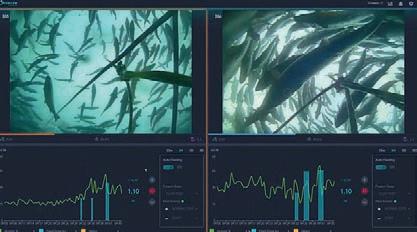
AKVA group has taken full ownership of the UK aquaculture related rti ci inte i ence business Observe Technologies.
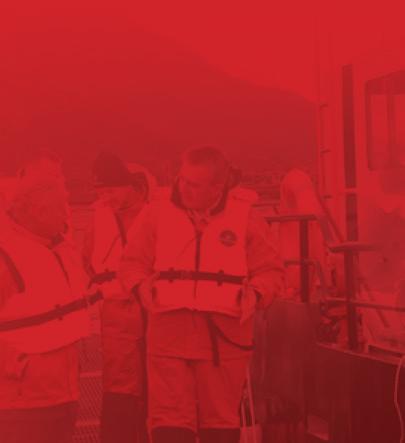
AKVA, the world’s largest supplier of aquaculture solutions and services, has had a one-third stake in the business since February 2021.
Based in southern England, Observe Technologies has sold rti ci inte i ence fee in s uti ns t re t n s f r sites r i e
Knut Nesse, CEO of AKVA, said: “The acquisition of 100% shares in ser e is f re t str te ic i rt nce t n i furt er e e n c e ent ur i it fferin s t t e r et
Following the transaction, AKVA will be the sole shareholder of Observe and own 100% of the shares.
e ini u urc se rice f r t e f t e s res f s rt een sett e c s c nsi er ti n n rt
f se ers cre it t t i e sett e in inst ents t e i over the next three years.
n iti n c nsi er ti n n e rn ut u t i u t t urc se rice f i e i if cert in c n iti ns re et

Loch Duart Ltd saw a big drop in profits for the year to 31 March 2024 – but the company says this reflects the cost of its plans for growth.
Turnover for the Scottish-based company was £43.08m (2023: £52.5m) and operating profit was down to £1.29m from the previous year’s £4.67m.
The company’s accounting profit was £710,457 compared with £3.39m in 2023. The company said in its annual report that this was an anticipated decrease “…as a consequence of the plan to revise site structures in support of future growth”.
Interest payable and similar expenses went up to £284,585

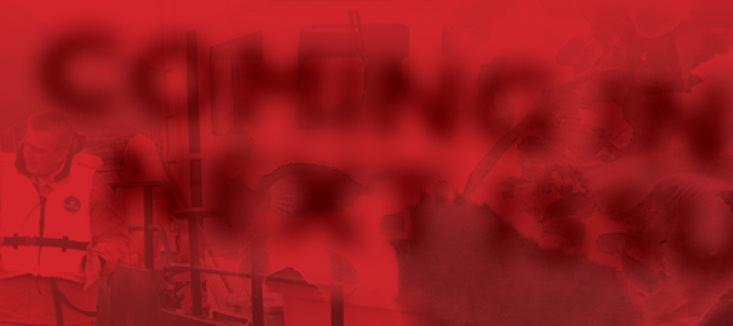

(2023: £157,944). Group net assets were also up, from £38.3m in 2023 to £46.7m this year.
Directors’ remuneration was up to £786,687 (2023: £513,722) and the highest paid director received £320,404 not including pension contributions.
The directors said: “Focus on the year has been addressing the increasing biological challenges created by raising water temperatures and the company’s approach to farming, particularly farm size, allows it to apply less intensive solutions which put less strain on fish.
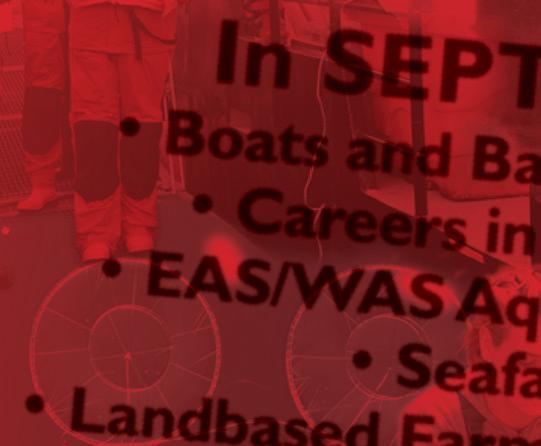
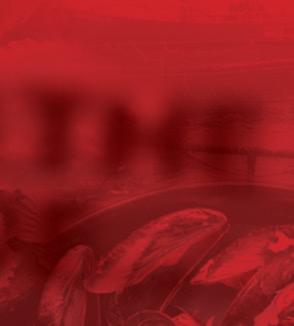

• Boats and Barges - Net Zero
• Careers in Aquaculture
• EAS/WAS Aqua 2024 Review
• Seafarming

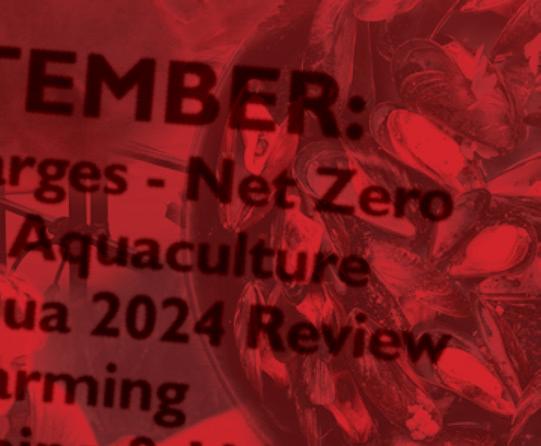
• Landbased Farming & Hatcheries
• Shellfish
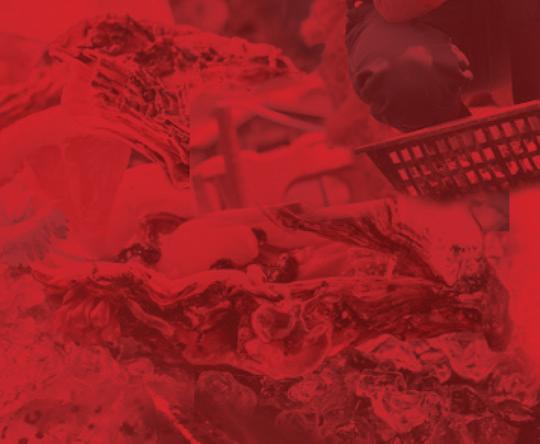
• Processing News
• Featured Species
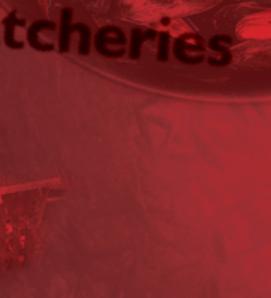
For more information on opportunities for advertising with editorial content around these subjects please contact: Janice Johnston 0044 (0) 131 551 7925
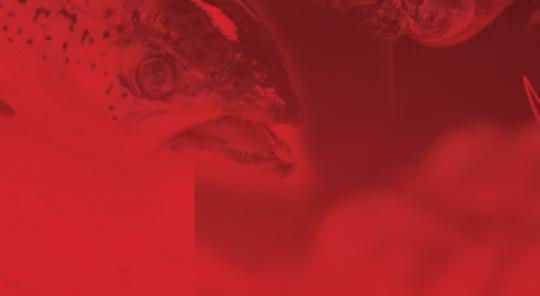
nst n s f r er ine c
Copy deadline - Friday 30 August

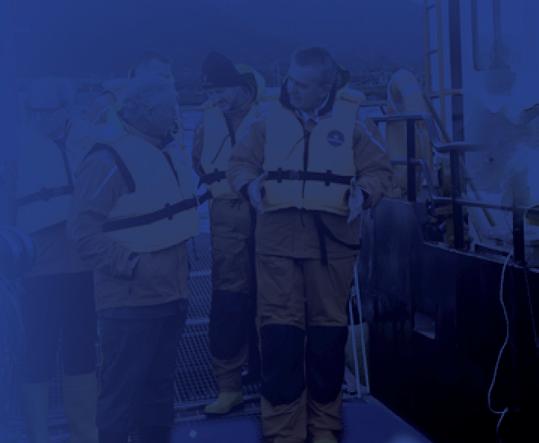
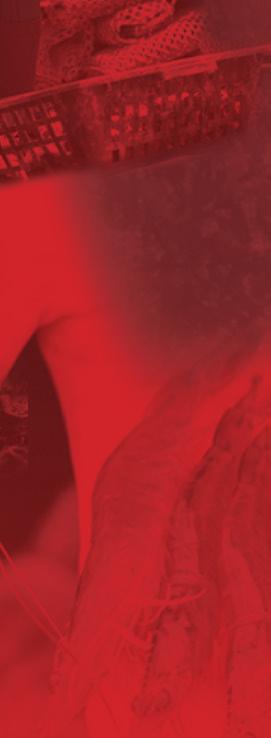
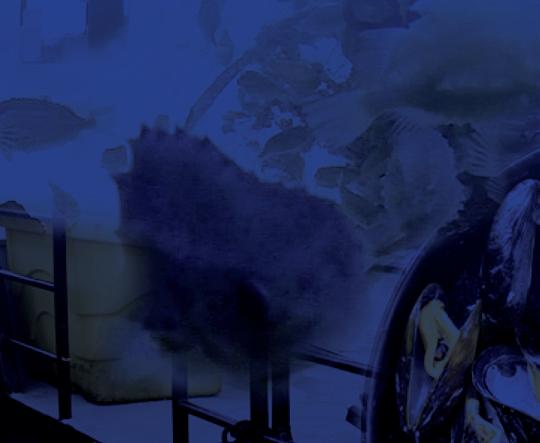
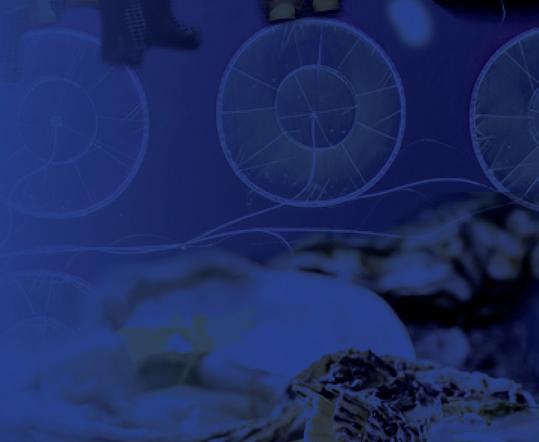
“The company continues to work on increasing production through new sites and to develop the potential of existing sites. Investments in infrastructure and operational capacity were made during the year and following the year end.”
Loch Duart is also “exploring” the potential for reopening operations in Canada. The company had planned to open three salmon farming sites in Canada more than 10 years ago, but its proposals were blocked by the Canadian government.
Post your vacancy on s f r er ine c


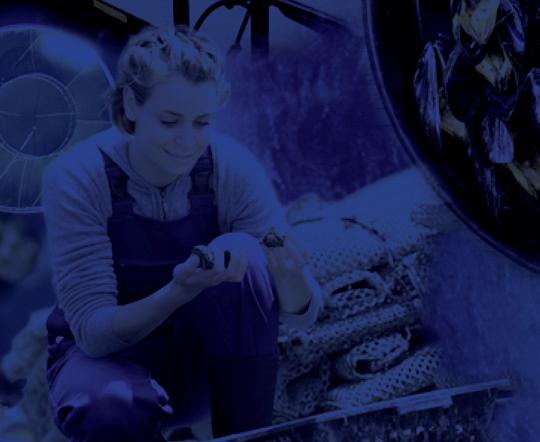

Contact Janice Johnston 0044 (0) 131 551 7925
nst n s f r er ine c for only £225 (+vat) per job posting.
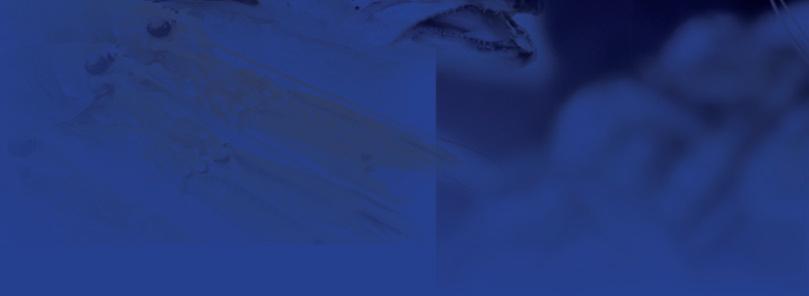


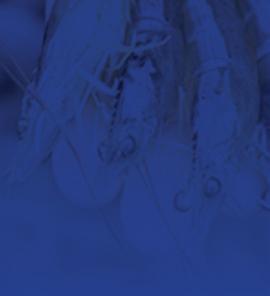

NORWAY’S farmed salmon are less pink than they used to be – and this could partly be due to sea lice treatments.
These are among the conclusions of a study by ofima, the orwegian food research institute.
The findings are based on questionnaires answered by orwegian industry actors in , data on fillet colour from commercial productions between and , and from ofima’s D licences. H
orwegian Seafood esearch und has funded the study, which has been carried out by ofima Senior Scientist Trine Ytrestøyl and her colleagues.
“There is a high degree of correlation between what the fish farmers report in the questionnaire and what we observe affecting pigmentation in the data analysis, so there is reason to believe it provides a realistic picture of the situation, says Ytrestøyl.
Historical data show that the colour intensity of orwegian salmon has decreased somewhat from to , with a slight increase after this period.There is also more variation in fillet colour now than in the past, which supports the results of the questionnaire: some fish farmers struggle more with pigmentation than others.
The researchers believe the investigation reveals the negative effect that repeated mechanical delousing has on fillet colour.This effect has not been documented before and could be caused by several factors. It may be due to increased consumption of an antioxidant
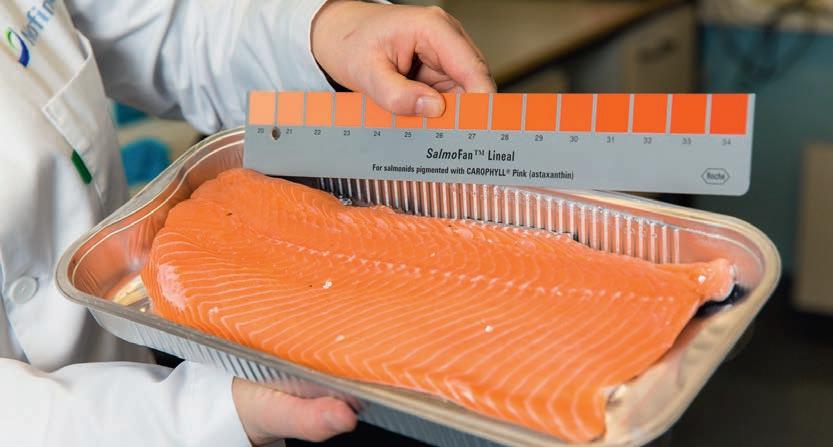
like astaxanthin when the fish are stressed.
However, it could also be that reduced feed intake results in lower slaughter weight, which is of great importance in relation to fillet colour. If fish are slaughtered at a lower weight to avoid more delousing, this will have a further negative effect on colour.
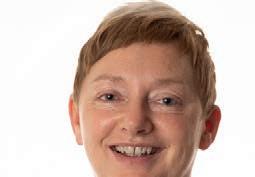
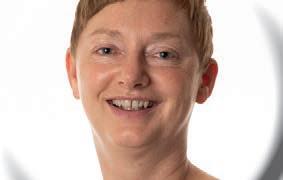

Almost all respondents had taken measures to improve pigmentation. There is more astaxanthin in the feed (50-70 mg per kg) than before and some fish farmers also have more of the omega- fatty acids A and DHA as well as vitamins in the feed.
Ytrestøyl explains: “This has had a positive effect, but it is expensive, and we have tried to find out what leads to inadequate pigmentation.
There are seasonal variations in pigmentation, and this can be taken into account when planning production.Very rapid growth resulted in poorer pigmentation, while the colour increased with greater slaughter weight.There was also a clear negative effect from many mechanical delousing treatments.
This has not been shown before, although it has been mentioned as a possible cause of poor fillet colour. hat surprised the scientists was the significant difference in colour at slaughter between suppliers of hatchery fish.
ow, they are looking to investigate this further to determine what impact the hatchery phase has on pigmentation levels when the fish are slaughtered.

AN explosion in the oxygen supply has led to the death of around 200,000 hatchery fish at a farming facility in Norway. The regional newspaper Bladet Vesterålen
reports that Trond Geir Reinsnes, the owner of the Sigerfjord Fisk site, described the incident as a “nightmare”. The company, which is based in the Sortland
region, is Norway’s largest supplier of Arctic char and also farms some trout.
Reinsnes said: “Mostly these things are a false alarm, but I saw that it concerned a cone that adds oxygen to the water. Then I became more worried, a mistake there is almost a disaster.
“Most of the fish were lost due to a lack of oxygen, although the rescue effort managed to save half the fry.”
The paper reports that one of the cones that produces pressurised oxygen had exploded. This meant the fish did not get enough oxygen-rich water.
Reinsnes said that losing almost a third of the 650,000 fish at the facility was not a total crisis, saying that the situation would have been worse if there had been fewer hatchlings. They would have been ready for slaughter in two years’ time.
The incident is now being investigated and he told the newspaper that the company would be seeking compensation. The CEO said that the company now has around 450,000 fish left from that generation which should lead to the production of around 320 tonnes.
FISH farming now accounts for more than a third of all fresh cod being exported from Norway.
While Norwegian aquaculture news continues to be in te s n n tr ut ite s f r in is t in on a growing importance, the latest information from the Norwegian Seafood Council shows.
In July Norway exported 2,384 tonnes of fresh cod to a value of NOK 137m (almost £10m).
While overseas sales of trawler-caught fresh cod have been declining (the volume fell by 19% last month), farmed cod exports have been rising at an impressive rate.
n u t e t t s u t t nnes n it s set to go on rising.
The value of farmed cod exports rose by 185% to NOK 58m i e t t ure is sti er s en set inst s n it s s t t ite s u cu ture is in its r
Farmed cod is popular because supplies are guaranteed un i e i c u t c ic is ften su ect t e t er related interruptions, especially in winter.
r ts fr c f r in re in e usi e e er e recently reported losses of NOK 93m (£6.6m) last year, mainly due to the cost of large-scale investment in future growth. The company is still in a build-up phase, where investments in biomass growth are greater than income.
It said the build-up phase will continue this year before the c n st rts t ener te siti e c s fl t r s t e end of next year.
The Seafood Council says that while most of Norway’s wild c is e rte t en r t e et er n s is n t e largest destination country for farmed cod.
t f t ese estin ti ns re tr nsit r ets st f t e s es n fr t e et er n s t t e r e fres r ets e se ere in ur e t s e s n r cesse
i in st i re n e f n st t t e e f Council, said: “The decline in the export of fresh cod is expected, with lower quotas resulting in fewer landings and a lower volume.
t t e s e ti e e see t t t e e rt f f r e c is stable at approximately 1,000 tonnes per month.”
Norway’s largest wild cod source, the Barents Sea, is expected to see substantially reduced quotas next year.
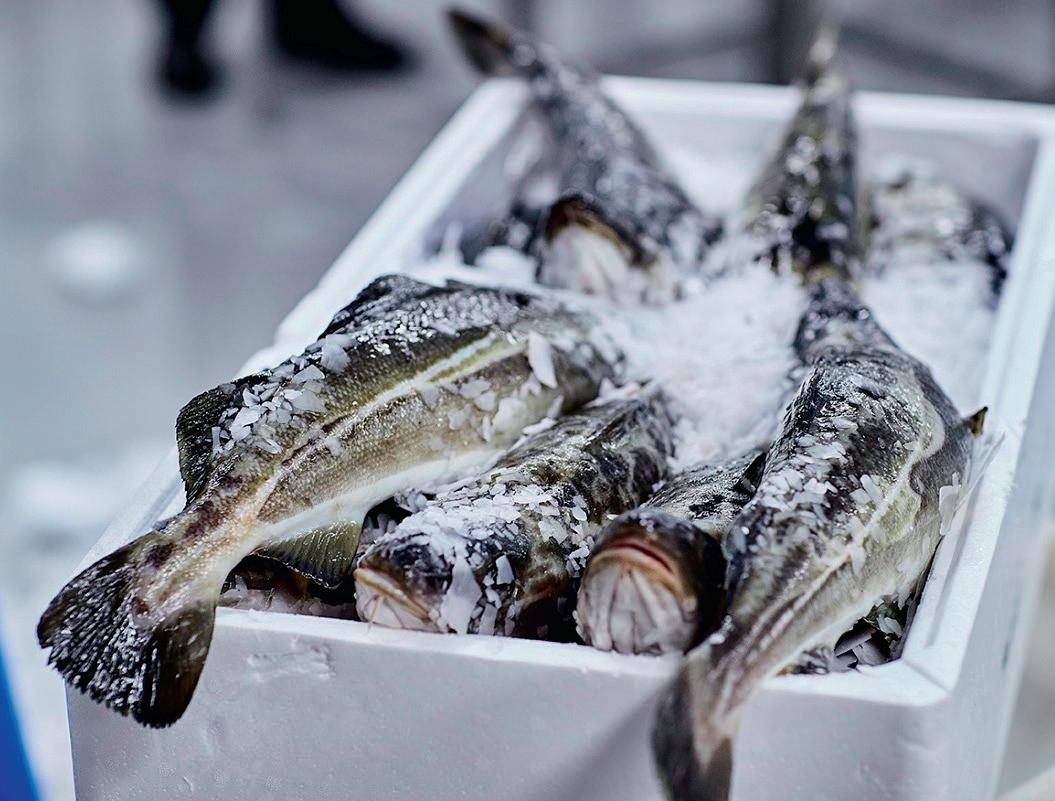

The Hydrotech Drum Filter Value series focuses on reduced maintenance, increased component quality and simplified operation – all to give your plant maximum filtration performance at a minimum operational cost.
Contact us!
Call +46 (0)40 42 95 30 or visit www.hydrotech.se
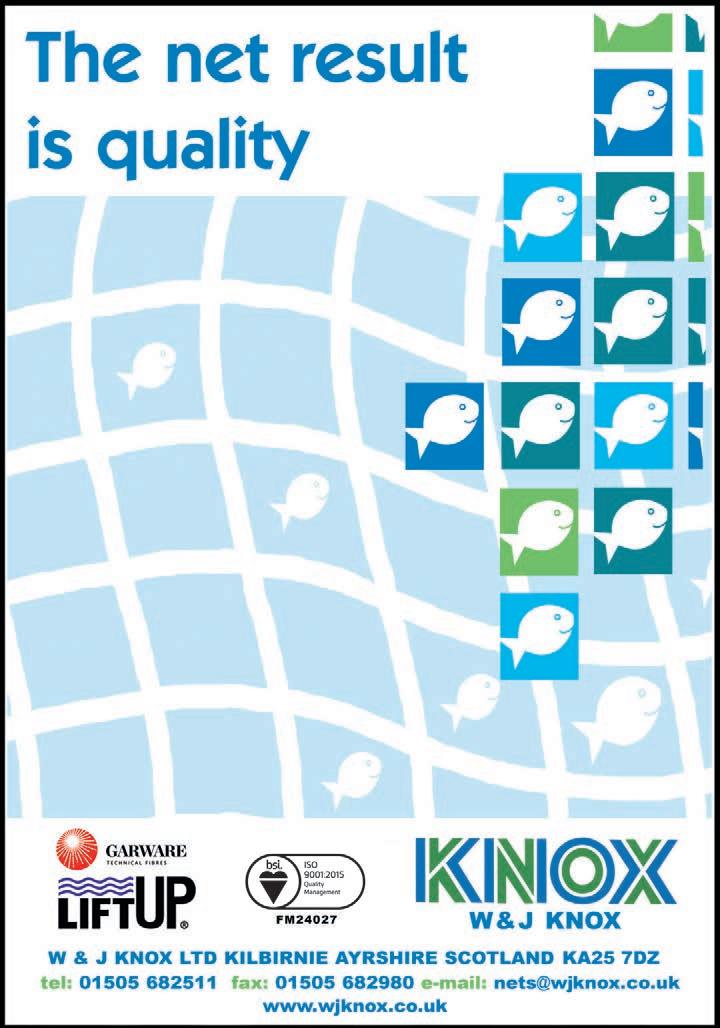
• Fish Cage Nets
– Nylon & HDPE
• Predator Solutions
• Net Service Plant
• Antifoulant
• Net interface system
• Net recycling routes
• Supplier of LIFT-UP
THE restaurant at the Salmon Eye aquaculture display centre in Norway has been voted by TimeMagazine as one of the best places in the world to visit. The futuristic oating centre is in the heart of Hardangerfjord in south-
west Norway and opened two years ago. The project is the brainchild of the fish farming company Eide Fjordbruk. It has been a passion project for the brothers Sondre and Erlend Eide, the third generation in the family’s aquaculture business.

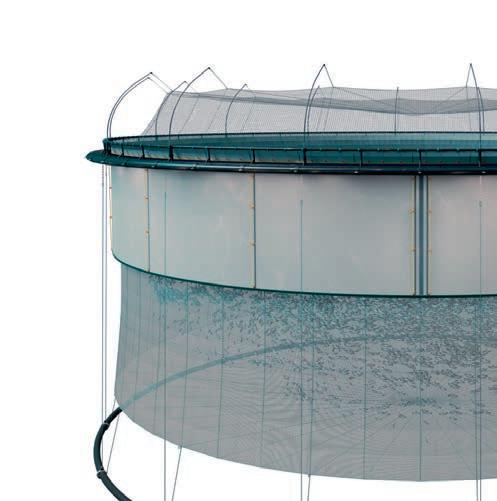

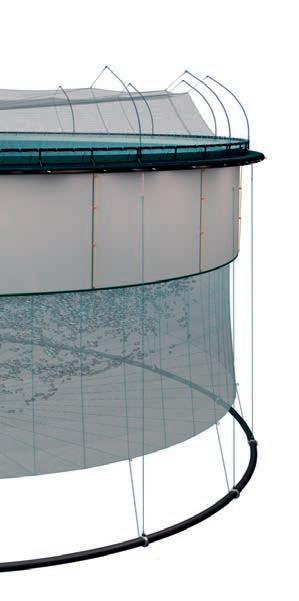
ATLANTIC krill harvesting company Aker BioMarine has unveiled a 6% increase in its second quarter revenues to US $94m (£73m). Adjusted BITDA or operating profit increased by year on year to S $29m (£22m). Aker BioMarine announced in July that it has entered into an agreement with the US buyout fund American Industrial Partners to sell ownership in its feed ingredients business. The deal is based on an enterprise valuation of S m m . The acquiring party will be a newly established company, as yet unnamed, owned by American Industrial artners and by Aker apital.
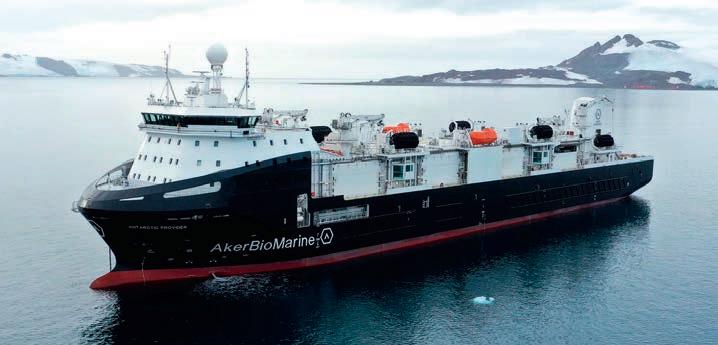
INFECTIOUS salmon anaemia is suspected at a SalMar location in Norway, in what appears to be a growing number of cases across the country this year. The Norwegian Food Safety Authority said the location is in Trondelag County and is operated by Salmar Oppdrett AS and Salmar Farming

AS. The authority said it was planning an immediate inspection of the plant to take follow-up samples so that the Veterinary Institute can possibly confirm the disease. Restrictions were been imposed on the site, including a ban on moving fish, ova and milk without special permission.


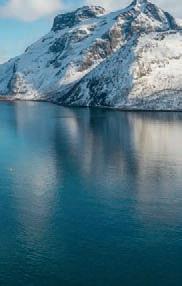
NORWAY-based fish farm cage manufacturer FiiZK is selling its lice skirt production business to Iceland’s Hampidjan Group.
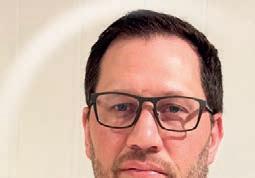
Under the agreement, Hampidjan will take over FiiZK Protection AS, the lice skirt business, which is located at Valsneset in Ørland municipality, north-west of Trondheim, Norway. The lice skirt business delivered revenue of approximately million . m in .

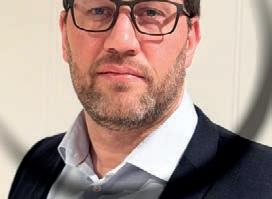
“Ecomerden” and Starfish . In addition, the company has recently launched “FiiZK FlekZii Cage”, which is a semi-closed cage solution that aims to reduce lice infestation.
FiiZK Group’s largest shareholders are Nekkar ASA (39%) and BEWI Invest (41%).
FiiZK Protection AS is a leader in the production and sale of salmon lice skirts for the aquaculture sector and has about market share in Norway. Following the sale, the number of employees in the company will be around , located primarily at Valsneset.
The parties have agreed to not disclose the financial details of the transaction, which is expected to be completed next month (September). FiiZK Protection AS will be renamed following the completion of the transaction.
FiiZK said the sale is part of a streamlining of its business. In future the intention is to focus on “unconventional” farming methods including closed and semi-closed cages for fish farming. The first step of this strategy was announced on 26 June, when FiiZK announced the sale of FiiZK Digital AS to seafood investor Bluefront.
The new approach includes FiiZK’s new closed cage, “Protectus”, which is based on the best solutions from the company’s three previous models: “Certus”,
“The aquaculture industry is increasingly recognising the biological and commercial benefits that closed and semi-closed cages bring. To date, FiiZK’s cage products have successfully completed more than production cycles, demonstrating strong fish growth and no problems with lice and escapes. We aim to build on this success,” said Jan Erik Kvingedal, Managing Director of FiiZK.
The FiiZK Mjåtveit facility
The FiiZK Protection AS facility at Mjåtveit, outside Bergen, West Norway, is not part of the transaction. This business, which manufactures technical textiles including canvas for closed and semi-closed fish cages, will be transferred to the FiiZK group company FiiZK Industries AS prior to execution of the share purchase.
Approximately people are employed at the Mjåtveit facility.
“Our facility at Mjåtveit plays a key role in manufacturing materials for our semi-closed and closed fish cages. eeping this business therefore supports FiiZK’s strategic direction,” said Ole Falk Hansen, chairman of FiiZK and CEO of Nekkar ASA.
NORWEGIAN seafood exports to Britain last month, including salmon, showed the highest increase in value, the Norwegian Seafood Council has reported.
Overall, July seafood exports were worth NOK 13 billion (around £900,000) which was 6% higher on the same month last year, mainly due to a continuing decline in the value of the krone.
Seafood Council Managing Director Christian Chramer said: “The reason behind the increase in the export value for July is a weakened Norwegian krone against both the euro and the dollar.
“We see that a fairly sharp price drop for salmon was compensated by an increase in volume, and in the end it is the currency that gives value increase.”
The British market saw the greatest increase in value, with an increase in export value of NOK 381 million (£26m), or 64% compared to the same month last year.
The export volume to the UK ended at 19,092 tonnes, which is 117% higher than the same month last year.
Victoria Braathen, the Seafood Council’s UK Envoy, said: “A large increase in July harmonises well with total exports to
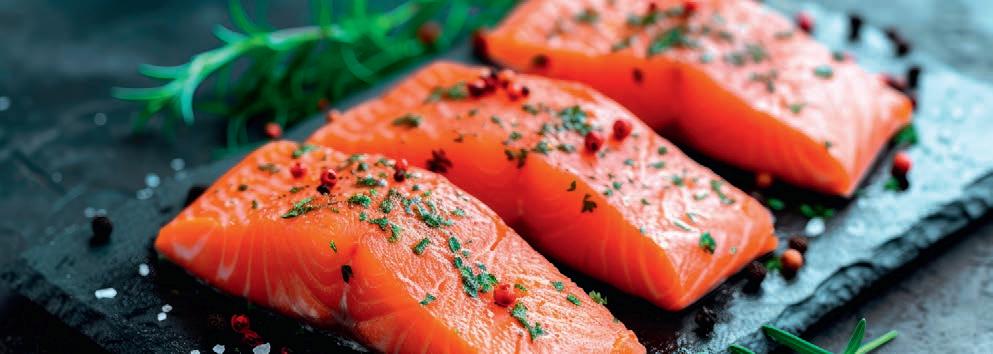
Great Britain so far this year, which show a value increase of 8% in Norwegian krone and a volume increase of 12%.
“Beyond a positive development for salmon and trout, the other growth is in ue t t e e rt f s e n s i
She added: “Frozen whole cod has an overall volume growth of 3% and continues to take a larger share of Norwegian exports.
e is si ni c nt r et f r Norwegian haddock. It is positive to see a clear increase for both frozen and fresh whole haddock for the market in July.”
The continuing devaluation of the krone
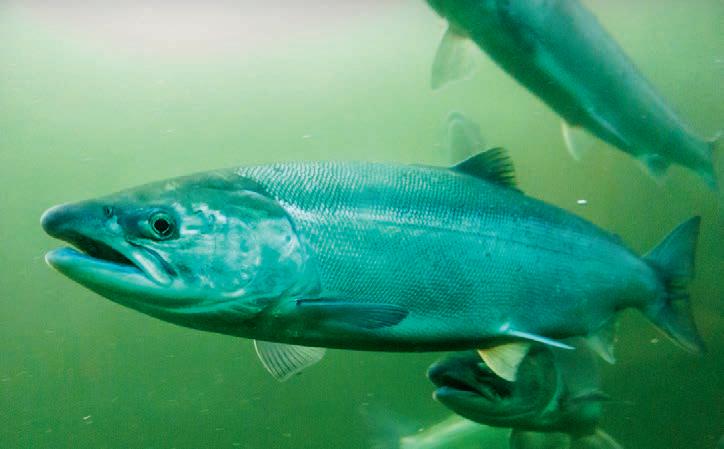
AN alert was sounded for a suspected outbreak of bacterial kidney disease (BKD) at a site in the Norwegian south-west region of Møre and Romsdal.
BKD is a serious problem for salmon farmers and can lead to heavy mortality among both farmed and wild salmon with outbreaks resulting in major financial losses.
The potential infection was found at a location where Hofseth Sea Farming and Ewos Innovation
cultivate salmon and rainbow trout.
Anyone who travels in the area and carries out activities related to fish farming will now have to show the necessary care so that the spread of any disease can be avoided.
Facilities in the area must have a particular focus on BKD at all health checks. It is important to prevent further spread between facilities or to wild fish through fish, equipment and boats.
led to a return of an increase in the value of salmon.
Norway exported 107,442 tonnes of salmon during July to a value of NOK 9.6 billion (£675,000) in July – a 3% rise in value and a 13% increase in volume. Poland, the Netherlands and the United States were the main markets for salmon.
Germany had the largest increase in value in July, with an increase in export value of NOK 142 million (£10m), or 46%.
The increase in the popularity of farmed trout continues with the July value increasing by 36% to NOK 698 million (£49m) and the volume up by 38% to just over 8,000 tonnes.


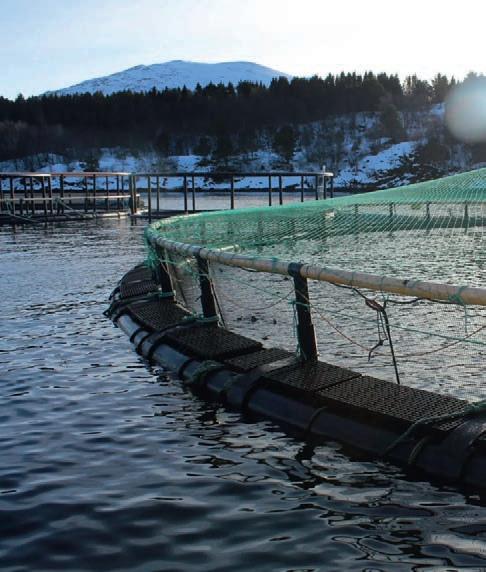
WHITE fish farmer Nordic Halibut has reported earnings of almost NOK 20 million (£1.43m) during the second quarter this year, thanks to the willingness of buyers in Britain and elsewhere to pay high prices for this popular prime fish – even at smaller sizes.
The company, based in western Norway, says the April to June period demonstrated a sustained upward trend in sales prices. Increases were realised for halibut sold in the 1-3 kg category, with a 12% rise in the 3-5 kg category, with a 14% price increase, and the 5-7 kg category, with a 5% price increase, compared to the same period in 2023.
Nordic Halibut said: “This trend demonstrates the strong willingness to pay and established high price levels for quality farmed halibut products in high-end markets even for smaller sizes exported to the United Kingdom and the EU.”
As planned, the company experienced a decline in harvest weight, averaging 4.5 kg (4.1 kg HOG), compared to Q2 2023’s average harvest weight of 5.2 kg (4.7 kg HOG).
Reduction in average harvest weight resulted in an average sales price of 153 NOK/kg in Q2 2024, reflecting a year-onyear (YoY) decrease of 1.2%.
Total revenue for Q2 amounted to NOK 19.1 million (£1.3m), with harvest volumes reaching 140 tonnes (125 tonnes HOG).
Nordic Halibut said it expects increased volumes and higher average harvest weights in the second part of this year. It also remains confident in its pricing strategy and market positioning.
Its growth plan is to expand production volumes to 4,500 tonnes (HOG) by 2026 and to 10,350 tonnes by 2031.
FARMED salmon has jumped into second place in the list of Iceland’s most valuable seafood exports, the latest official figures show. But it is still running a long way behind cod.
Salmon exports are now worth ISK 37bn m and the figure is rising fast year on year as Iceland’s aquaculture sector expands. This is the highest figure so far recorded. od, by comparison, almost all of it wild caught, earned the country IS bn m , says the industry organisation adar (also known as the Association of Iceland ompanies in the aritime Industry . Radar said that salmon is now expected to remain in second place for some years to come as there was no other fish species likely to challenge that position. The adar figures

are based on exports for the first five months of this year which show that the export value of salmon on its own accounted for of the export value of fish and of the value of all products, both seafood and industrial.

BI D Aquaculture, the Danish company specialising in design and start-up services for land-based fish farms, is reported to have filed for bankruptcy.
The company said in a statement on riday that there was no basis for further operation and would therefore be submitting a winding up petition.
It had taken a hit during the pandemic and this was followed up by the kraine ar.
Billund’s Chairman Jon Refsnes said the decision was taken with deep regret , adding there was no real alternative.
CEO Kristoffer Lund added that Billund had had good operations over the past year. But there had been too many challenges from previous activities, which made it difficult to find sufficient capital for further operations.
Despite good operational progress, the company’s efforts to secure its capital needs were ultimately hampered by disputes from
before the changes.
Based on this, the board concluded that there is no basis for further operation. fforts will now be made to find the best possible solutions for all employees, customers and creditors.
Billund was born in Denmark as an offshoot of an eel producer, but was founded in , back when AS was a practically unknown technology. It became a pioneer in the development of sustainable aquaculture all over the world.
In the s, the company ramped up its activities in Taiwan, Korea, Thailand and China due to the eel production boom.
This lasted for around seven years before moving into the salmon sector through a recirculation fish farm in hile.
ith offices in Denmark, hile and Australia, Billund Aquaculture then became a pioneer in the development of RAS technology worldwide.
THE company behind an ambitious seaweed farm in the North Sea says it will be the world’s first offshore facility of its kind on a commercial scale.
North Sea Farmers plans to open a seaweed farm this autumn, co-located with the Hollandse Kust Zuid (HKZ) wind farm, about 18 kilometres off the coast of Scheveningen in the orth Sea. HKZ is owned by Vattenfall, BASF, and Allianz, and consists of 139 turbines. It generates electricity equivalent to the typical consumption of 1.5 million Dutch households.
orth Sea arm , created by orth Sea armers with funding from Ama on’s ight ow limate und, is a oating farm located between wind turbines where seaweed cultivation can be tested and improved. Scientific research will also be conducted on site into the potential of seaweed farms to capture carbon.
By locating the farm in previously empty space between turbines, the company says, the project will be able to expand seaweed cultivation in the otherwise heavily used waters of the orth Sea.
There is more than enough space in the current and future planned wind farms in the North Sea, North Sea Farmers estimates, to scale up production to one million tons of fresh seaweed per year by 2040. This is expected to contribute to the capture and avoidance of millions of tons of 2.
The project will be led by North Sea Farmers (NSF) and executed by a consortium of scientific researchers and partners from the seaweed industry. The expectation is that the seaweed farm will be operational by the end of this year. The consortium hopes that North Sea Farm will serve as a replicable commercial model for offshore seaweed cultivation worldwide.
orth Sea arm is thus intended to be the catalyst for scaling up the seaweed sector. hen complete, the farm will span five hectares, and is expected to produce at least , kg of fresh seaweed in the first year. This seaweed will be processed into inspiring applications for Europe.
ef Brouwers, eneral anager of orth Sea armers, said e are particularly pleased to receive the world’s first permit for a seaweed farm within a wind farm. Hollandse Kust Zuid is one of the newest wind farms in the orth Sea and at the same time relatively close to the coast, about two hours’ sailing. e hope that, with this project, people will become further convinced of the scaling opportunities of seaweed in the North Sea, but also of other forms of co-use such as solar, wave energy and nature restoration.
The scientific consortium includes researchers from lymouth arine aboratory , Deltares, and Silvestrum limate Associates, seaweed extract manufacturer Algaia, project developer Simply Blue roup, and maritime contractors Van ord and Doggerland ffshore.
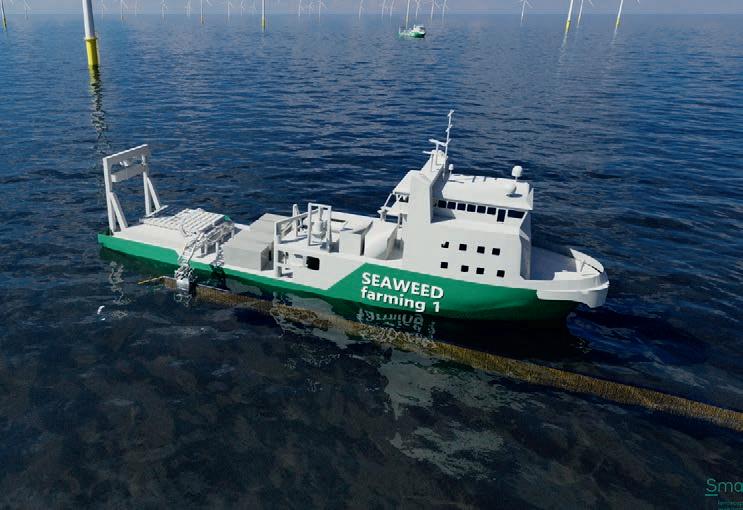

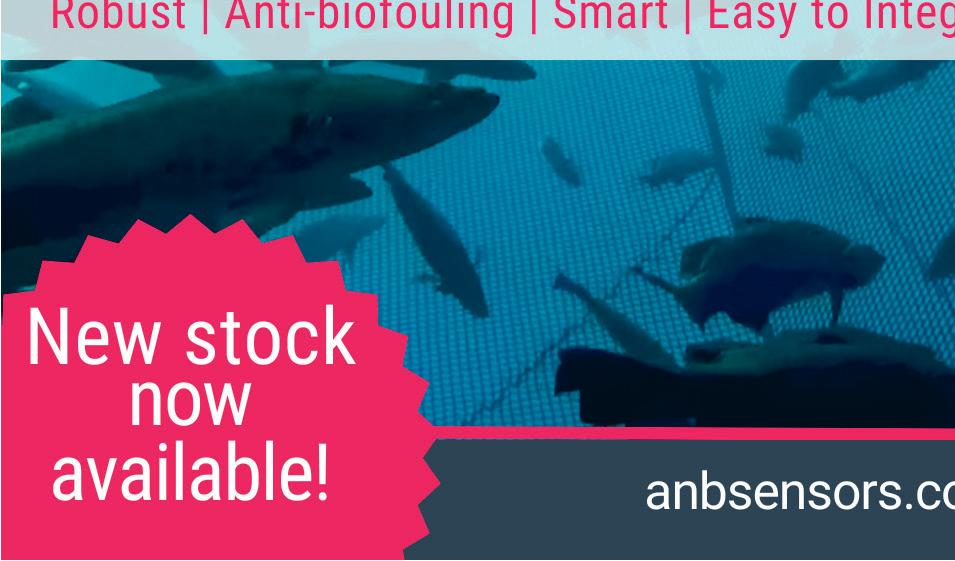

MORE than 100 stakeholders have already signed up to SalMar’s Salmon Living Lab project since its launch a few months ago, Frode Arntsen, Executive Director of the salmon giant, has disclosed.
Speaking at a Norwegian Seafood Council conference in Bergen recently, Arntsen said the project will contribute to providing healthier and more sustainable seafood.
SalMar, in collaboration with Cargill, announced the NOK 500m (£35m) plan back in March. The Living Lab will foster a collaborative approach across the salmon industry to tackle biological issues.

The conference was told that while global demand for salmon had increased in the last three to four years, production in Norway had stagnated.
Arntsen said: “Salmon production has become a high-tech industry that
has succeeded with a number of good solutions and brought us forward.
“There are, however, other factors that have developed in the wrong direction. The feed factor, the proportion of damaged fish and the mortality rate have increased.
“Now is the time to acknowledge the challenges and increase knowledge about salmon biology,” he added.
SalMar launched the Salmon Living Lab initiative to help increase that knowledge.
Arntsen said: “The Living Lab will close knowledge gaps, search for new insights and attract partners with leading industry expertise. ow we are working to find out how to organise ourselves.”
Some of the results will be public, while some will be more companyspecific, he explained.
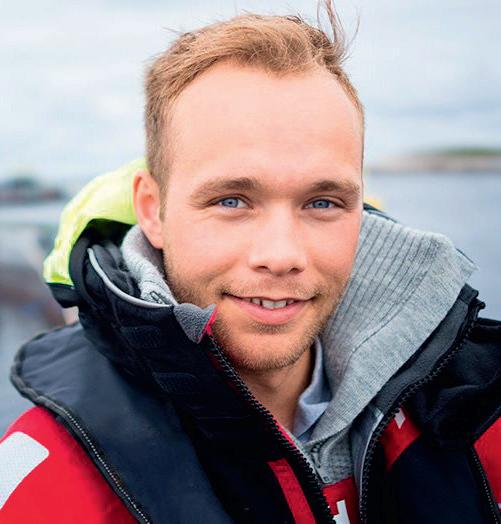
BIOFISH says it has entered into an agreement with a recognised industry player for the delivery of approximately 170,000 –180,000 post-smolt of 250-300 grams.
The contract has been secured under market terms, with delivery scheduled for the second half of September.
Biofish CEO Sondre Hagerup Johnsrud said: “This agreement is another recognition of our solid track record of consistently delivering robust, high-quality smolt and post-smolt to satisfied customers.
“The agreement is with a new customer to BioFish and includes an intention between the parties to develop a long-term collaboration.”
This is Biofish’s second major deal
in just over a month. Back in June the company secured an agreement, also with a recognised industry player, for the delivery of between 170,000 and 180,000 post-smolt of 500 grams.
The company has a post-smolt RAS production facility in Ljones close to the Hardangerfjord on the west coast of Norway. Almost 40% of Norwegian fish farming sites are located within one day of transport.
Biofish, which was established in 2016, said in its annual report a few weeks ago that last year had seen the delivery of 450 tonnes of smolt and post-smolt with a strong biological performance. It also reported revenues of NOK 48m (£3.5m), more than double that of 2022.
THE integrated salmon farming company Hofseth Aqua is facing the prospect of a heavy fine following the accidental death of an employee just over a year ago.
A 25-year-old man, Perry Emil Johansen, died in an explosion in June last year at a company site in Sunnmøre in western Norway.
Now the Norwegian Labour Inspection Authority has ruled that the company breached the Working Environment Act on several matters at a silage plant, which it says, had a number of weaknesses. These included a lack of risk assessment and training on matters such as explosion hazards.
Hofseth Aqua says it has worked to correct these deviations and is co-operating with the Norwegian Occupational Safety and Health Administration.
The company has accepted responsibility, saying it has fully cooperated with the various authorities and has worked to correct any issues.
The public prosecutor has already imposed a corporate penalty of NOK 4m (£287,000) on the company, but further penalties including compensation, are expected.
Hofseth Aqua said: “We think it is absolutely terrible that this accident
happened at our facility and have done everything we can to ensure that nothing similar happens again.
“It is important for us to use the experience from the tragic incident to increase knowledge about this throughout the industry,”
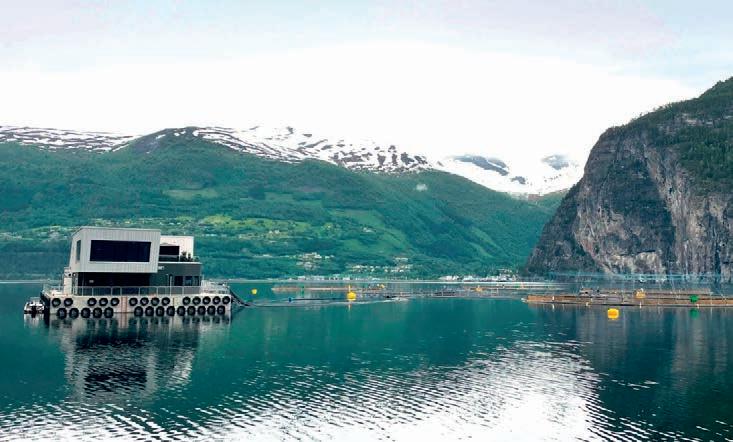
LAND-based fish farmer The ingfish ompany saw its sales volume leap by more than a third, year on year, in the second quarter of this year.
In its latest trading update, the company, which is listed on the slo Stock xchange, said revenue for was up by to . m . m . m, or . m . The volume sold was up to tonnes tons .
Standing biomass doubled to , tonnes tons . et biomass growth was tonnes tonnes and the company also recorded strong harvest volume growth of to tonnes tonnes evenue per kg was . . per kg . . per kg .
The ingfish ompany produces yellowtail kingfish in a AS recirculating aquaculture systems facility in eeland, etherlands, and is also moving ahead with a second site in aine, in the S.
The latest update states This growth is a result of focused efforts to penetrate key markets and expand into new territories, driving our revenue to . million, a increase from . The additional investment in commercial activities has begun to yield results, resulting in market growth
for The ingfish ompany’s main product yellowtail kingfish, in the professional and retail sectors.
The biological performance of the farm was impressive, with the biomass growth in the quarter being tons. ompared to , the standing biomass more than
doubled to , tons at the end of , . ith the AS systems functioning optimally, the company continues to prove its capability in producing high-quality fish in a reliable, consistent, and sustainable manner.
The company will release its interim and H financial results on September.
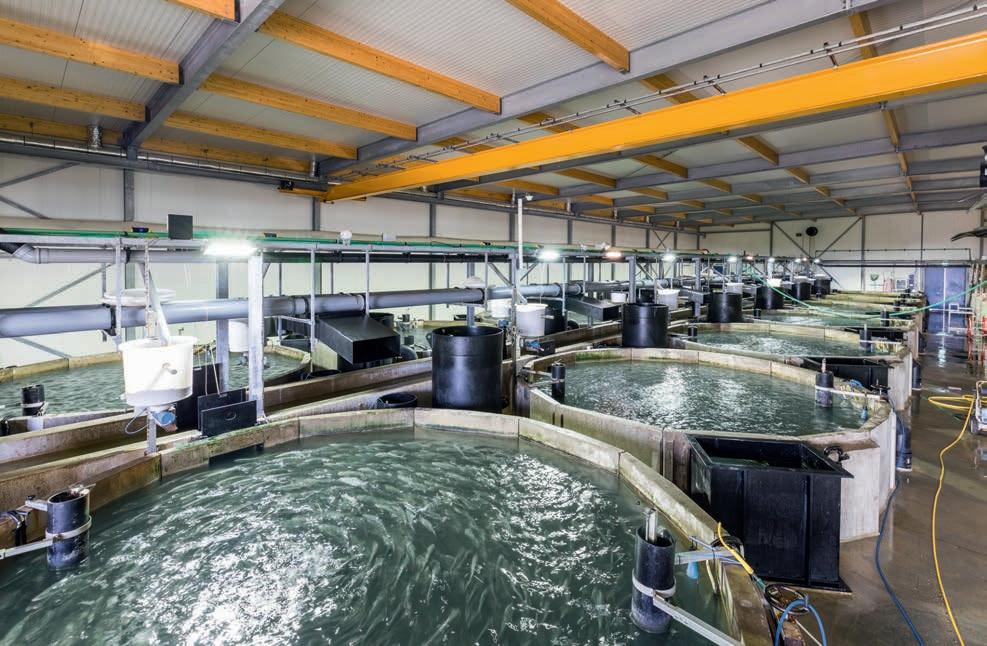
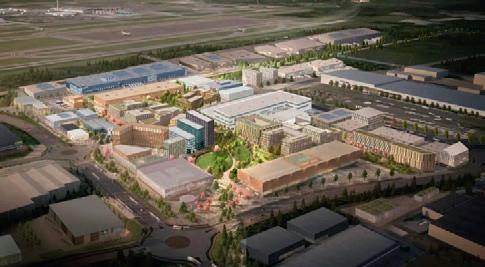
THE former Chief Executive and Co-founder of the Icelandic salmon company Arnarlax has been appointed as General Manager of Grieg Seafood’s new processing plant at Gardermoen, near Oslo.
Kristian B. Matthiasson brings a wealth of experience to the new role, said the company.
His more recent experience as the managing director of Leines Seafood, a processing company that primarily produced frozen portions for the supermarket chain Aldi, has equipped him with the necessary skills and knowledge to lead our upcoming processing plant at Gardermoen, it added.
In this pivotal role, the company said Matthiasson will develop Grieg’s organisation and optimise operations to drive excellence.
Grieg said: “Focusing on strategic goals, he
will be a crucial catalyst for identifying and implementing initiatives to contribute to our factory’s success.”
Matthiasson said: “I look forward to starting as General Manager at Grieg’s stateof-the-art processing plant at Gardermoen.
“The production of salmon has always been close to my heart, and I look forward to becoming part of the Grieg family.
“At the new factory in Gardermoen, we should have every opportunity to produce safe and high-quality products in a sustainable, efficient, and reliable manner. There is much to be done before we receive our first fish in the fall of 2025, and I am excited to take on this work.”
Matthiasson started Arnarlax with his father, Matthias Gardarsson, in 2014 before stepping back some five years later. Arnarlax was acquired and is now part of the SalMar group.
The Gardermoen VAP (value added processing) centre is set to commence operations in the autumn of 2025, marking a significant milestone for Grieg Seafood, the company said.
its commitment to bringing the value chain closer to the end consumer and enhancing Grieg Seafood’s value creation.
Grieg’s Chief Commercial Officer, Erik Holvik, said: “I am thrilled that Kristian, with his extensive expertise and valuable experience in the seafood industry, will be a crucial player in our VAP project.
“His leadership and vision will be instrumental in the project’s success, and we are excited to have him on board.
The company said it plans to establish the processing factory in a new and energyefficient facility at the airport. It will have an annual processing capacity of 10,000 – 12,000 tonnes (HOG equivalent), with an option of increasing the capacity to 20,000 tonnes if needed at a later stage.
The project will create up to 60 new jobs at the plant.
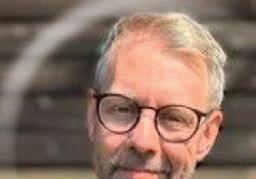
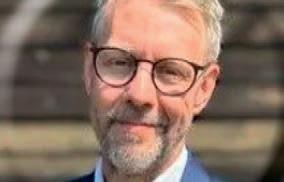
Grieg said expanding its processing capacity is a testament to

The location makes it possible to process Grieg Seafood’s salmon from its Northern region Finnmark as well as its Southern region in Norway, Rogaland. It is optimally placed, Grieg said, for smooth logistics to the markets by truck, boat, train or air freight.
SALMON farmers in British Columbia have expressed disappointment and concern after being told that a draft Transition Framework from the Canadian Department of Fisheries and Oceans (DFO) has been delayed.
Salmon farming licence holders were informed of the delay at the end of July. No new release date was announced.
However, the licence holders were told the delay could push the release into next month.

Brian Kingzett, Executive Director of the BC Salmon Farmers Association, said: “The rural coastal communities and employees who rely on salmon farming have been in a constant state of uncertainty since 2019 when the transition commitment was first announced.
He added: “The ongoing delays and decisions made by the federal government continue to cause concern and stress on these families and
communities as they do not know what the future holds for them.
The association says that “the unrealistic timeline for full transition announced by the Department of Fisheries and Oceans Canada (DFO) in June undermines the federal government’s commitment to sciencebased decision-making, restoration of wild salmon populations, support for UNDRIP and rural coastal communities, growth of Canada’s blue economy,
increased food security, and support for young Canadians.
Kingzett added: “Our sector has worked tirelessly over the past few years and submitted thousands of pages of documentation to the federal government to show our commitment to this process.
“The federal government knew that the five-year timeline to transition to closed containment or land-based was unrealistic, and the delay in releasing the draft Transition Framework will further inhibit our sector’s ability to meet the already demanding timeline set by D .
The association said that despite this ongoing challenge, the sector will persist in fighting for its communities and finding a responsible, realistic and achievable path forward, concluding: “The BC salmon farmers remain hopeful the federal government’s draft Transition Framework will provide that opportunity.
A MEMBER of the US House of Representatives has brought forward legislation aimed at slamming the brakes on the growth of offshore fish farming.
Mary Sattler Peltola, an Alaskan Democrat, is seeking to ensure that no applications for offshore fish farms in US Federal waters are approved without the explicit authorisation of Congress.
Her bill, the Domestic Seafood Production Act (DSPA), would also encourage research on the effects of finfish aquaculture on the ecosystem and potential offshore locations “that may be least impactful to the marine environment and commercially important fish stocks”.
NOAA (the National Oceanic and Atmospheric Administration) would be barred from awarding financial assistance of any kind for the purposes of facilitating offshore aquaculture.
The document explaining the bill refers to “floating factory farms” and states: “Industrial offshore fish farming causes ecological and economic harm to our coastal communities.”
The legislation would also seek to boost local employment opportunities by ensuring that processing seafood in US waters is carried out in the United States and overseas. Currently, much of America’s catch is processed in
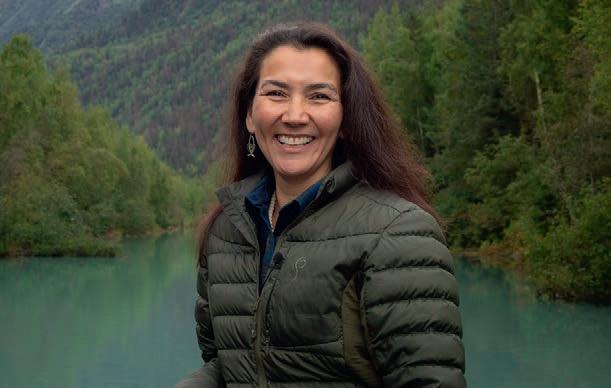
countries like China where labour is cheaper.
She said: “In Alaska, so many communities rely on fish and seafood production both for subsistence and goodpaying jobs. My bill would support our local fishing and maritime communities while strengthening our domestic seafood supply chain.”
Congress is currently considering bipartisan legislation which is intended to encourage the development of offshore aquaculture, in order to make the United States more selfsufficient in seafood.
SALMONES Camanchaca, one of Chile’s largest salmon farming companies, slaughtered 11,643 tonnes of Atlantic salmon in the second quarter of this year – almost double the figure for the same period last year.
The Q2 figure for 2022 was just 6,400 tonnes.
The average weight of harvested fish increased from 4.4 kilos in the first three months of this year to five kilos in Q2, while the ex-cage cost decreased to US $4.99 (£3.90) per kg from US $5.28 (£4.14) per kg in the first quarter.
Sales in Q2 2024 totalled approximately 11,000 tons of Atlantic salmon and 2,100 tons of coho. The coho inventory was reduced by approximately 50% by the end of Q2 compared to the end of the first quarter in 2024.
Salmones Camanchaca estimates a total harvest of between 46,000 and 48,000 tons of Atlantic salmon for 2024, up from 44,100 tonnes in 2023.
For coho, the company projects a harvest of 4,000 to 5,000 tons, compared to 11,400 tons in 2023.
The company, which employs almost 2,000 people, currently has its main overseas markets in the United States and Mexico.

LAND-based salmon farmer Nordic Aqua Partners has said it expects to lose around 190 tonnes in the current quarter after detecting a high concentration of the off- avour compound geosmin at its Chinese facility.
Although it is harmless to both fish and humans, geosmin, which is a naturally occurring compound, can, in elevated concentrations, negatively affect the taste of the fish.
Detection of off- avour was discovered at the company’s ingbo production facility. Nordic Aqua artners said the problem was due to the overloading of the purging unit.
A specialist team had identified the root causes and was implementing both immediate and long-term solutions to prevent future occurrences, including enhancing the water filtration and management processes.
Andreas Thorud, anaging Director at ordic Aqua ingbo , said ur Atlantic salmon has, since its launch in April, received very good feedback in the market

However, following recent quality checks, elevated levels of geosmin were identified in specific production sections.
As a result, the affected salmon, metric tonnes, heads on gutted, will not be sold for human consumption but thus at a substantially lower price.
He added ordic Aqua does not compromise on quality and we relentlessly seek premium development of land-based salmon farming, and learning and minor surprises is a part of such development.
TH second half of this year promises better times for aquaculture producers worldwide, with rising consumer demand and falling feed costs.That’s the positive picture presented in the latest report from abobank’s research arm.
Global aquaculture update 2H 2024 says that demand for salmon and shrimp will begin to improve in the second half of , thanks to the recovery of Western economies.
eed costs are anticipated to decrease, thanks to a rebound in fish meal supply, providing a silver lining for the sector, the report says.
According to orjan ikolik, Senior lobal Seafood Specialist for abo esearch, the salmon market continues to face a tight supply, with prices expected to remain high through the latter half of . Seasonal patterns will in uence pricing, but the overall trend suggests that costs will stay above average.
orway and Scotland are poised for a supply recovery, although this remains tentative due to unresolved biological issues.The S and Asia are experiencing depressed demand, which has not allowed prices to offset the high costs resulting from weak biological performance. However, the anticipated reduction in feed costs should offer some relief to producers.
Another factor driving demand is the falling relative cost of salmon compared with other animal protein options, the report says.
Shrimp industry: tentative recovery with lower feed costs
In the shrimp sector, there are indications of a turnaround, particularly in estern markets where demand and prices are gradually increasing as in ation eases, said ikolik.
The industry is set to benefit from lower farming costs due to improved fish meal
supply. However, the recovery remains fragile, with hinese import demand expected to decline.The positive supply growth from cuador, India and Vietnam could potentially lead to an oversupply, casting doubt on the possibility of a price recovery in the second half of .The depressed profitability of shrimp farming continues to favour large, sophisticated operations, leading to increased industry consolidation.
Fishmeal prices to soften as supply increases
The key factor affecting aquafeed prices has been eru’s anchovy harvest. The first half of marked the end of a year-long l i o season part of the natural climate cycle in the acific which greatly reduced the anchoveta biomass and thus eruvian fishmeal and fish oil production.
By April , the report says, climatic conditions had normalised and the anchovy fisheries once again saw a high biomass, allowing the eruvian fishing regulators to grant a normal quota of , m tonnes.The subsequent catch rate and a high fish oil yield underlined a successful first season. xpectations, abobank says, are that in a i a conditions will develop, further cooling ocean waters, which is beneficial for the anchoveta biomass. The report adds onsequently, we expect that the second eruvian fishing season, starting in ovember , will be equally strong as the first. In addition, this should allow fishmeal prices to continue to correct, especially since the ratio with soybean meal remains high even after the recent price drops.
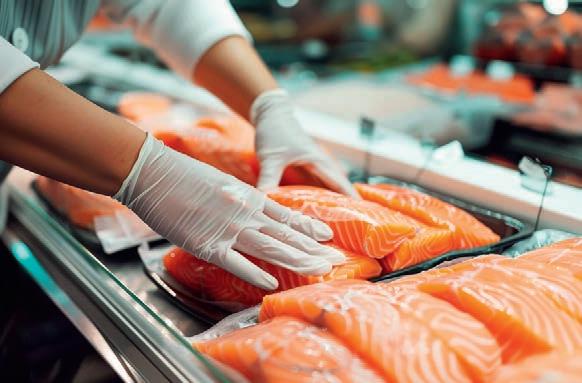
ven an expected reduction in fishmeal supply in urope in H should not materially alter the outlook for normalised fishmeal and fish oil supply globally in H , abobank says.
hi o u on trac or fish arm ro ect

JAPAN’S Shikoku Railway Company (trading as JR Shikoku) is to begin launching a trial land-based salmon project in
the Kumamoto Prefecture. The company operates non-rail businesses such as hotels and property and says that salmon farming is now an activity which shows considerable promise. The company says it is installing a number of tanks on its premises to cultivate king salmon juveniles. It will eventually select a permanent location, and plans to set up three main commercial operational sites.
in fish aine ro ect asses another obstacle
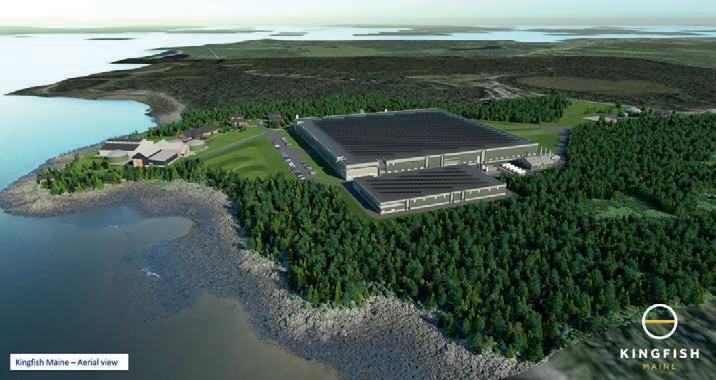
THE ingfish ompany has overcome a major hurdle against opponents trying to prevent the company building a yellowtail facility in Maine on the US East Coast. A group called Protect Downeast has in the past launched several appeals against the granting of municipal permits for the project. But the latest appeal attempt, held before aine’s Business and onsumer ourt, ended with the rejection of all the group’s arguments. The court found in favour of the town of onesport and ingfish aine and upheld the permits issued by the Planning Board.
government signs hosting a reement or uaculture rica
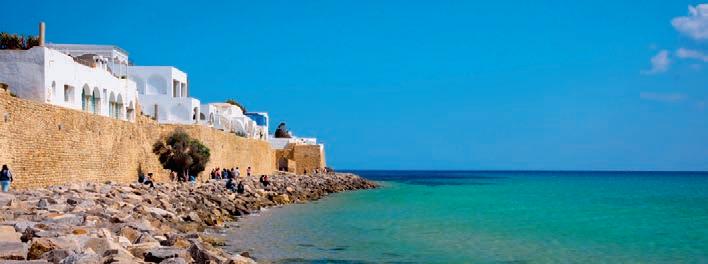
PREPARATIONS for the upcoming 3rd Annual International Conference and Exposition of the African Chapter of the World Aquaculture Society (AFRAQ2024) were given a boost last week following signature of the hosting agreement by the National Institute of Marine Sciences and Technologies (INSTM), on behalf of the Ministry of Agriculture, Water Resources and Fisheries, Tunisia. This special gesture means the Government of Tunisia and its associated institutions are fully committed to collaborate with WAS in ensuring smooth organisation of the event. AFRAQ24 takes place in Hammamet, Tunisia, on 19-22 November. Conference details will be updated on the event page on www.was.org/Meeting/ code/AFRAQ24.

THE Lerøy Seafood Group has announced a strategic investment in the US biotech company Salmonics.
The terms of the investment remain undisclosed, but the announcement said it will support Salmonics’ continued growth and cutting edge biotechnology, which uses fish blood to create healthcare products.
Based in Maine, in the north-eastern United States, Salmonics develops and markets innovative re-agents and biomedical products from the blood of salmon and other fish species.
It transforms this by-product into a valuable resource for research, and veterinary and human health applications.
Salmonics says its proteins and re-agents support a wide range of applications, including regenerative medicine, cell proliferation, clotting, wound care and pain treatment.
Henning Beltestad, CEO of Lerøy, said: “We are excited and pleased to support the work Salmonics has undertaken to advance cutting-edge biotechnological solutions utilising farmed fish, increasing value and meeting our sustainable development goals.
This investment re ects our commitment to innovative solutions that enhance the efficiency and potential of the seafood value chain while delivering positive benefits to healthcare.
er y’s investment marks a significant milestone for Salmonics, providing the company with the resources to accelerate its product development and market reach.
Cem Giray, President and CEO of Salmonics, said: “This collaboration between Salmonics and Lerøy will usher in new opportunities to expand the use of our fish blood-based biomedical products into the biotechnology and pharmaceutical space globally.
“Lerøy’s expertise and commitment to sustainability align perfectly with our mission to transform aquaculture and fisheries by-products into valuable biotechnology, pharmaceutical and research resources to improve patient care and outcomes while potentially lowering healthcare costs with a net positive environmental impact.

A COMPANY dedicated to restorative aquaculture through “ranching” sea urchins has announced deals with a major capital investor and the owners of one of Japan’s leading sushi chains.
Urchinomics was created to address the problem of growing urchin populations, which are turning kelp forests into “urchin barrens”. Its solution is to remove the urchins and farm them in less problematic locations.
Uni, often known as sea urchin “roe” although it is actually the urchin’s reproductive organs rather than eggs, is a particularly popular product.
Verdant Bloom, the parent company of Urchinomics, signed an agreement with Japanese shipping and logistics group NYK which will see NYK investing an undisclosed amount of capital in the aquaculture business.
Urchinomics
has also announced a collaboration deal with Food & Life Companies Ltd, which operates more than 1,100 restaurants under the brands “Sushiro,” “Kyotaru,” “Sushi Misaki,” and “Sugitama” in nine countries and regions, including Japan.
The partnership aims to create a stable supply of highquality, domestically farmed sea urchins, while contributing to the conservation of blue carbon ecosystems.
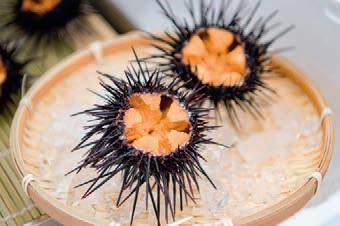
Koichi Mizutome, President and CEO of Food & Life, said: “Through collaboration with Urchinomics, I hope we will be able to establish planned manufacture and a secure stable procurement base of sea urchins... also I have high hopes to cause positive effects of restoring kelp forests, through the effective use of natural resources by utilising barren urchins, which have been difficult to consume as food.”
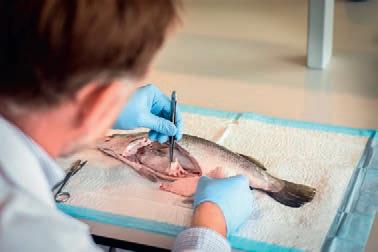
A SINGAPORE company has developed a vaccine which it believes can successfully combat a deadly disease.
The company, UVAXX, a leader in autogenous vaccines and a subsidiary of the Barramundi Group, said the development had been carried out in conjunction with the Agency For Science Technology and Research in Singapore. UVAXX has described the breakthrough against SDDV, which can cause serious losses, as a potential game-changer for the sector.
SDDV causes fish to shed scales, develop lesions and suffer major mortalities. The vaccine is a formulation designed to protect fish from SDDV. It is also known as scale drop disease virus and can kill up to 70% of a pen of Asian sea bass, or barramundi.
By combining specific parts of the virus known as epitopes that trigger immune responses, the vaccine aims to strengthen the fish’s natural defences against the virus.
Dr Sunita Awate, Research Director, UVAXX, said: “Through our 12 years of experience working with farmers to provide veterinary services and fish health solutions, we have witnessed first-hand the severity and devastation caused by SDDV. Asian sea bass farmers across the region need and want a solution. Having an efficacious SDDV vaccine can lead to a paradigm shift in aquaculture disease management, from a reactive to preventative approach, and transform farm production unit economics.”
Singapore-based newspaper the Straits Times said the development brings renewed hope for farming Asian sea bass, with the survivability rate of the fish, if infected, up by around 75%.
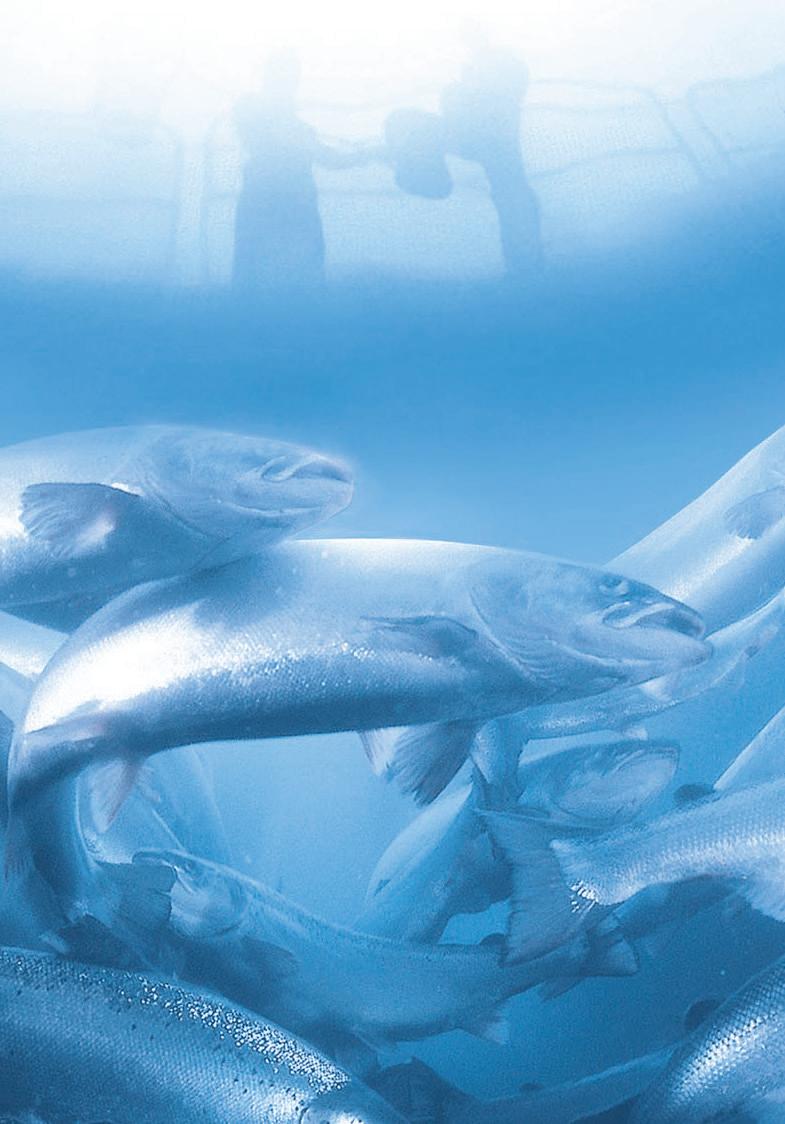





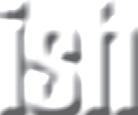




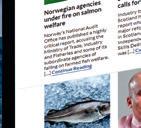

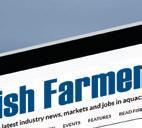

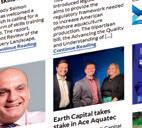


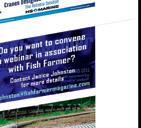


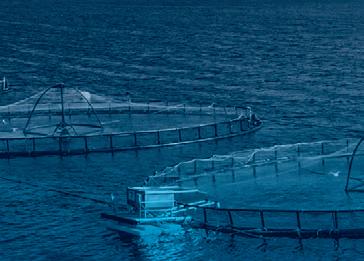




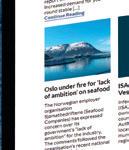
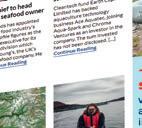

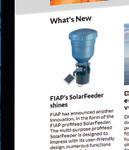
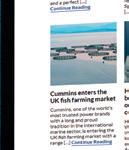
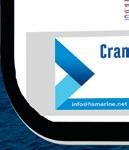


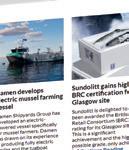
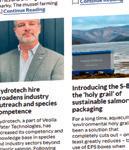
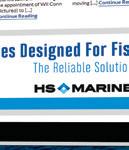

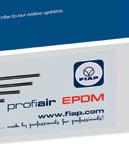
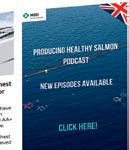

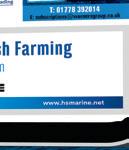
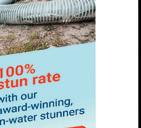

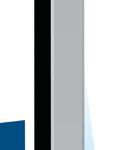


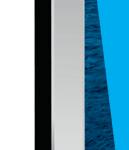
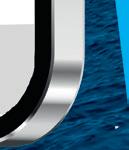
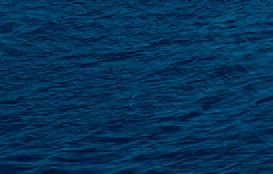
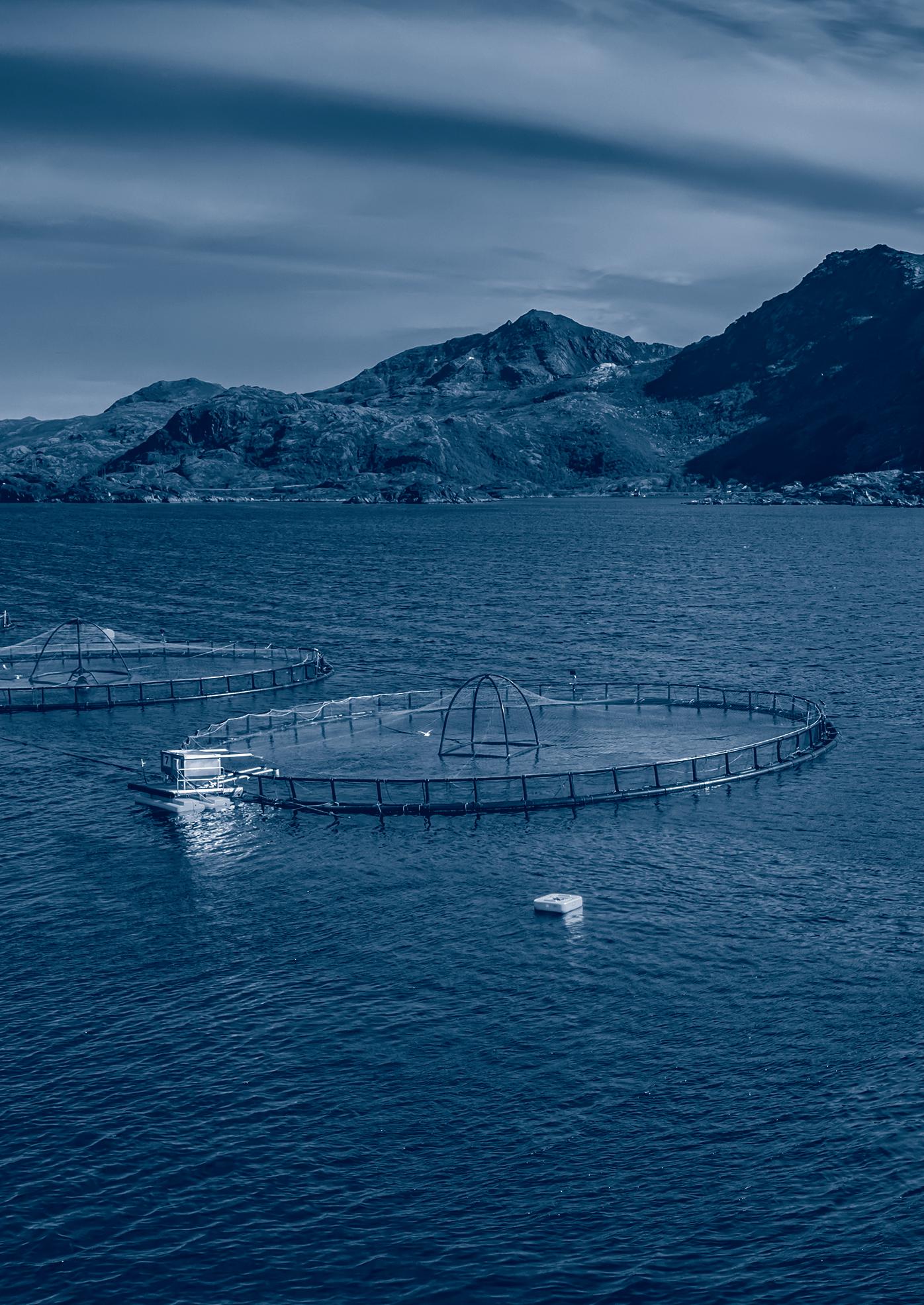

THE Leader of Comhairle nan Eilean Siar, the Western Isles Council, has expressed frustration that employees and the community were not alerted earlier over plans to shut down a Bakkafrost processing plant.
Faroes-owned Bakkafrost Scotland has extensive salmon farming operations in the Western Isles, but in July it announced that its processing plant and harvest station in Stornoway, Isle of Lewis, are likely to be mothballed for a period of time because there will not be enough production to sustain them.
The company said it would be consulting with the staff at the Marybank processing plant in Stornoway over redundancy proposals. Staff working on the company’s fish farms in the region are not thought to be affected. The sites affected are the processing facility, in Stornoway’s Marybank industrial estate, and the harvest station at Arnish.
The company said that there would be very little requirement for harvesting or processing over the next 18 months in its operations in the north of Scotland.
A spokesperson for Bakkafrost Scotland

said: “I can confirm we are considering a temporary, but extended, closure of our facilities at Marybank and Arnish in Stornoway, affecting around 80 jobs.
“As our communicated plans, the business has harvested the majority of our production in the first part of the year and there will be minimal harvesting activity over the next 18 months in the North, this is due to stocking timing and locations.
“Our board has been forced to consider extremely difficult scenarios in order to futureproof the business and secure our remaining staff across Scotland. One of the scenarios proposed is that we close the Arnish Harvest Station and the Marybank Processing Facility, for an extended period.

“We intend to start a period of collective consultation with those potentially affected and hope to complete this over the coming weeks.”
Output from the company’s Southern sites will continue to be processed at the Cairndow facility.
Representatives from Comhairle nan Eilean Siar met on 11 July with Ian Laister, Bakkafrost Managing Director for Scotland, and sought assurances from Bakkafrost on its plans for the impacted employees, the future of its operations in the Western Isles and the reasons for its decision.
Cllr Paul Steele, Leader of Comhairle nan Eilean Siar, said: “Our primary concern following this announcement is the wellbeing of the employees impacted by this decision and their families. Comhairle nan Eilean Siar will work alongside Skills Development Scotland and partners through the PACE programme to ensure employability support is available to all those impacted. This decision will also have a significant impact on local businesses who provided services to Bakkafrost.
“The Western Isles has made a significant and sustained contribution to aquaculture both in Scotland and globally. Our natural resources, the work of local businesses and the industry expertise of islanders have been crucial to the Scottish operations of Bakkafrost and other largescale producers. The decisions made by Bakkafrost have not been made overnight. Removing 77 jobs [the number working at Marybank] from the Western Isles is incredibly significant and notification of this move should have been provided at a much earlier stage.
”Comhairle nan Eilean Siar will continue to engage directly with Bakkafrost to seek clarity on its future plans for the islands, including opportunities for the resumption of processing activity as part of its longterm production strategy”
Local politicians representing the islands in Westminster and the Scottish parliament, Torcuil Crichton MP and Alasdair Allan MSP, have also expressed concern over the potential job losses.
“Our board has been forced to consider extremely difficult scenarios ”
KORAL, the Polish producer and distributor of branded salmon products, has been acquired by Indian seafood supply chain company Captain Fresh.
The Indian group signed an agreement with Abris Capital Partners and Koral’s founder, Boguslaw Kowalski, which gives it ownership of the company. The transac�on is subject to the Polish an�-monopoly office and other regulatory approvals.
Koral manufactures smoked salmon products that are sold across domes�c and interna�onal markets under the brand SuperFish. The company has 26 produc�on lines, processing 120 tons of fish daily. This marks Captain Fresh’s entry into the coveted salmon market, es�mated at US $33.5 billion (£26.4bn) in 2024.
“We are pleased to welcome Koral to the Captain Fresh group. This acquisi�on is a strategic milestone in our mission to become the leading tech-enabled mul�-species, mul�-origin global seafood conglomerate,” said Utham Gowda, Group Chief Execu�ve Officer, Captain Fresh.
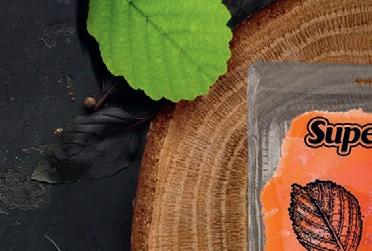



He added: “The European market is one of the most exci�ng VAP (value-added product) opportuni�es in seafood globally. Koral augments our earlier acquisi�on of France-based Senecrus, adding marquee Polish and German retailer brands to our por�olio of offerings. Koral’s ‘smoked’ format capability complements Senecrus’ ‘cooking’ format capability. We are also thrilled to mark our foray into the salmon value chain, which is one of the largest segments within the seafood industry. With seasoned leaders Boguslaw Kowalski and Justyna Frankowska leading our global salmon strategy, we are gearing up for the next phase of growth.”
Currently, a management board member, Justyna Frankowska, will take the role of Chief Execu�ve





Officer of Koral following the acquisi�on.











Kamil Gajdziński, Investment Manager at Abris, commented: “This acquisi�on of Koral by Captain Fresh is further evidence of the fantas�c poten�al of Central European businesses and the growing appe�te of interna�onal conglomerates for investment opportuni�es in the region. We are pleased that we have found the ideal capabili�es in Captain Fresh, which will drive interna�onal growth and further consolida�on in this sector.”
Prior to this, Captain Fresh completed the acquisi�on of CenSea, one of America’s largest importers of frozen seafood and Senecrus, a French shrimp cooker and distributor.
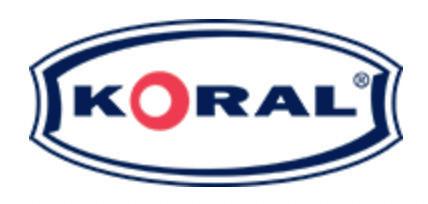
Indian group acquires Polish smoked salmon company Koral
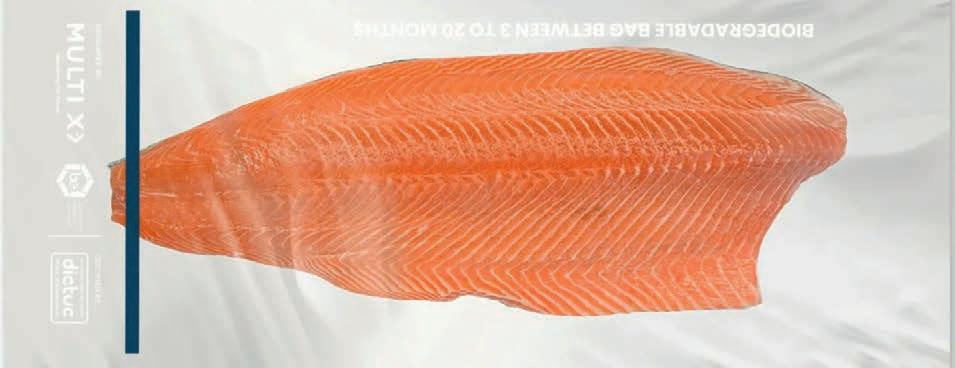
A LEADING Chilean salmon farmer is moving to 100% biodegradable packaging for its range of fillet products.
Multi X exports around 42,000 tonnes of salmon every year as fillets, much of it to the United States. Chilean packaging company Bioelements will produce more than 18 million bags every year from a novel material that decomposes within six to 20 months through consumption by fungi and micro-organisms, without the need for composting.
Fernando Perez, Chief Sales and Marketing Officer with Multi X, said: “The incorporation of these new packaging materials will have a
very positive impact on our production and on the environment, becoming a relevant milestone in our path towards carbon neutrality.”
Multi X and Bioelements have been discussing the deal for as long as two years, the companies disclosed. The switch to the new packaging takes place this month, August.
Founded in 2017, Bioelements now has a significant presence in six countries and supplies customers around the world.
A EUROPEAN initiative based in Portugal is aiming to find new uses for the parts of fish and other marine organisms that are usually discarded.
B2E CoLAB for Blue Bioeconomy seeks to create an intelligent platform for the valorisation of blue bioeconomy by-products, using advanced matchmaking algorithms to connect by-product generators, processors, and valorisation technologies.
The Fish Matter project, led by B2E CoLAB, is being developed in collaboration with CIIMAR, IPMA, ISEP, the University of Aveiro, and the University of Minho.
Maria Coelho, Coordinator of B2E CoLAB, said: “Fish Matter is a direct response to the underutilisation of raw materials and the urgent need to establish innovative and sustainable circular economy processes.”
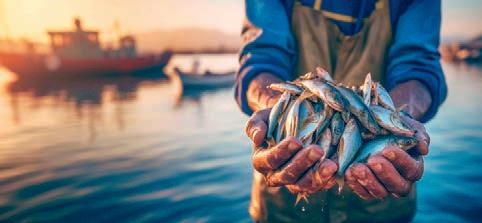
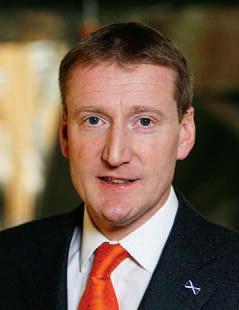
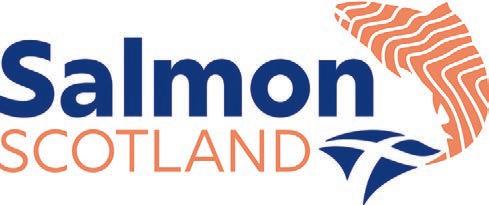
With a new government at Westminster, and new leadership at Holyrood, Salmon Scotland
Chief Executive Tavish Scott has been busy ensuring that aquaculture’s voice is heard at the heart of UK politics
NOT for the first time in recent years, there is change at the heart of British politics.
The good news, however, is that the change – so far, anyway – has been to provide the kind of stability the country needs, despite there being a new party in charge at Westminster.
It’s clear that Keir Starmer and Rachel Reeves have brought a serious, pragmatic approach to government. That’s something that business certainly welcomes. In the aftermath of Brexit, and the Liz Truss budget that sparked such economic chaos, a period of stability is very much needed.
Of course there are major challenges ahead for the Starmer administration, not least given the perilous state of the public finances. Reeves has not shied away from explaining just how dire things are.
And that makes it even more important that the circumstances are created for economic growth. Our sector is one that can deliver the growth required, provided that government builds the economic climate we need.
Scottish salmon is the UK’s largest food export, generating more than £760m in Gross Value Added (GVA) to the economy.
I am pleased to report that the new government has recognised the contribution of our sector in its first few weeks.
Just four days after Starmer returned to Downing Street as Prime Minister, I had the opportunity to meet the new Secretary
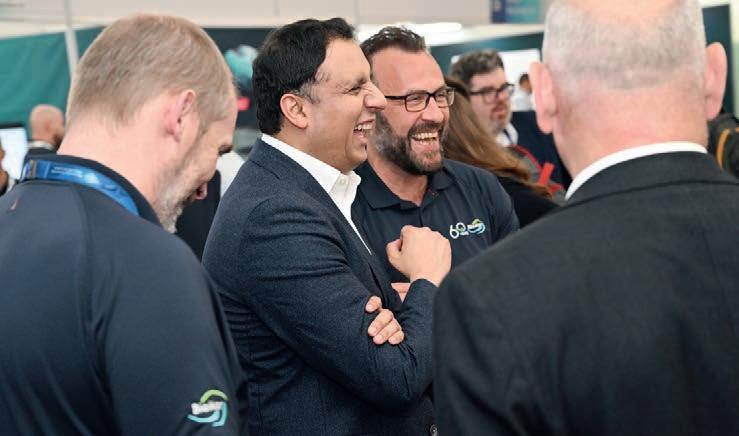
of State for Scotland, Ian Murray, in Westminster.
Ian came out to the Western Isles last year to see first-hand how salmon are raised, so he has a good understanding of our sector.
I also met with his deputy, Kirsty McNeill, who is a new Scotland Office minister, as well as Scottish Labour Leader Anas Sarwar who has one eye on the job of First Minister as the 2026 Holyrood election moves closer.
Both Ian and Anas took the time to recognise the importance of Scottish salmon when addressing an event for new Scottish MPs.
Since then I have also held formal talks with Ian, and I am confident that he will engage further with our member companies in the months ahead.
Talking to Holyrood
Our engagement with the Scottish Government also continues apace, and I was delighted to meet Deputy First Minister Kate Forbes in July when she witnessed a contract signing between Mull-based Inverlussa Marine Services, which has appointed Macduff Shipyards to design and build a 25-metre hybrid workboat.
signing (from le Ben ilson (Managing Director, Inverlussa Marine Services), Naomi Knight (Project Coordinator, Inverlussa Marine Services), ohn a anaging irector acdu Shipyards) and Deputy First Minister Kate Forbes MSP; Bakkafrost Scotland’s Loch Roag salmon farm on Lewis, during Ian Murray and Torcuil richton’s isit last year
There is potential for further responsible and sustainable growth of our sector

Kate really understands the importance of economic growth and wants to turn words into action for the Scottish Government.
New First Minister John Swinney did not have much time to get his feet under the desk before he was thrust into an election campaign, but I hope he fulfils his promise to focus on growth.
I have met with his top team this month to press the case for faster action from the Scottish civil service, and we eagerly await his first programme for government in September.
We will be setting out our asks of the Scottish Government in due course, with a focus on actually delivering the recommendations in the Griggs review of aquaculture, as well as measures to support innovation.
Back at the UK level, I have made clear in my correspondence with all new ministers that there is potential for further responsible and sustainable growth of our sector.
As everyone reading this knows, we have been adversely affected by Brexit.
So we need a serious, pragmatic approach to the UK’s relationship with the EU, with a clear focus on the nation’s export businesses which depend on a positive, professional relationship with France and the other countries of the EU.
I very much welcome the recent comments from the Secretary of State for Business and Trade, Jonathan Reynolds, who recognised this and outlined his desire to grow salmon exports.
As well as our engagement with both governments, we also have a crop of new MPs to speak to. I congratulate all those elected in the recent contest.
I have already had the opportunity to meet with some of those who represent our farming areas, including Torcuil Crichton who is the new Labour MP for Na h-Eileanan an Iar. Torcuil understands the importance of our sector, and aquaculture has a strong ally at Westminster in him.
There are, of course, also new MPs representing areas where we have a significant supply chain footprint, and I plan to spend some time in Westminster when it returns following the summer





recess to ensure they all understand the role we play in creating good, skilled jobs.
And finally, when Holyrood returns in September, the ongoing inquiry by the Rural Affairs and Islands Committee will continue. We look forward to welcoming MSPs to get their feet wet, so to speak, and see for themselves the reality of how salmon farms operate.
We will also continue to ensure that we provide politicians with the facts, and dispel the myths and outright lies that activists make who want to shut down our sector and make thousands of people unemployed.
Politics rarely stands still, but this is a particularly busy time.
As the sector’s trade body, our role is to ensure that our voice is heard at the heart of government – in both Edinburgh and Westminster – and we are certainly shouting loudly on behalf of our dedicated workforce.
Tavish Scott is Chief Executive of Salmon Scotland.

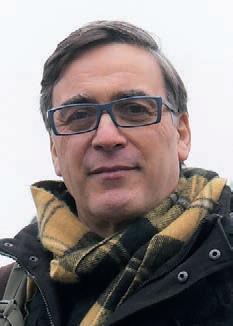
Norway’s Institute of Marine Research is highly critical of cod farming but its views are not backed by evidence, argues Dr Martin Jaffa
AROW is brewing in Norway over farmed cod. On one side is the new cod farming sector and on the other side are the northern representatives of the fishing industry. However, the real villains of this row are actually the scientists at the Norwegian Institute of Marine Research (IMR). Having used dubious science to malign salmon farmers, they are now adopting a similar approach to undermine Norway’s cod farmers.
An article appeared in a Norwegian newspaper in June that suggested that there has never been a better time to farm cod. This was the view of a Norwegian cod farming company, and the reason is because Norwegian and Russian scientists are asking for a cut of 31% in the cod quota for next year. It is expected prices will skyrocket on already high demand and boost the earnings of those farming cod in Norway.
The northern section of the fishing industry is unhappy that what is still a small cod farming industry could benefit against a background of a vulnerable cod population and a fishing fleet already on its knees.
Yet, a cut in the quota might mean smaller catches but prices could be much higher so it’s not all potentially bad news for catch fishing. The sad truth, however, is that if the fish are simply not there to catch, the fishing industry cannot catch them.
The fishing sector believes that what cod is available could be at risk from farmed cod, not just as competition inthe market but also in the sea. Salmon farmers will be not just familiar with, but also sick of hearing, the same misleading nonsense that the scientists from IMR and others spout about the so-called negative
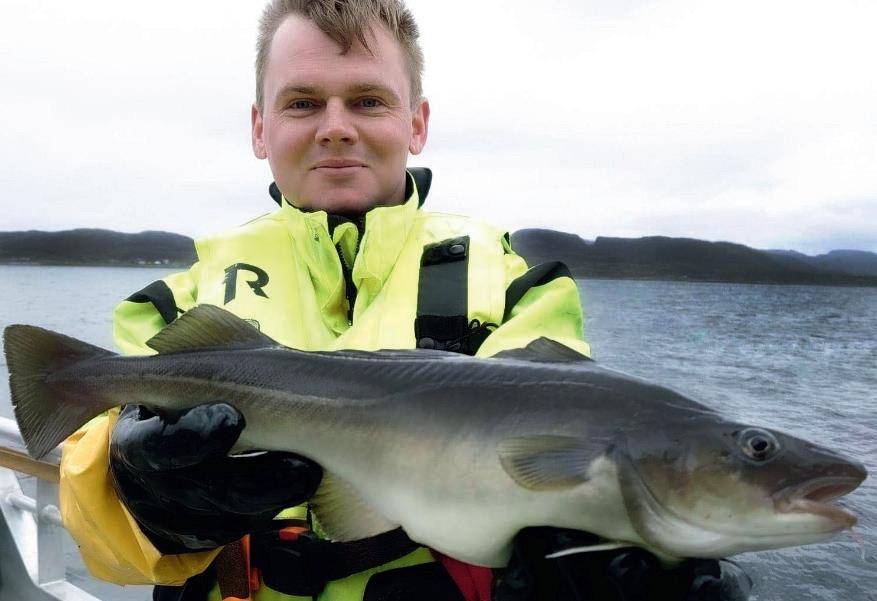
impacts of aquaculture on wild fish.
The alleged environmental risks of cod farming have been widely reported. IMR has rarely been as clear in its warnings as when describing the environmental risk of cod farming, and it says it has determined that cod farming can pose a real risk to wild cod stocks.
The greatest threat comes from escapes because the escape of farmed cod or the spawning of farmed cod in the pens can change the wild cod’s genetics and biological characteristics. IMR says that if this change occurs it is largely irreversible, and this will have the potential for adverse genetic influence on wild cod from farmed cod stocks.
It also says that the impact of genetic changes to wild cod is significantly greater than between farmed and wild salmon. The fishing industry representatives fear that farmed cod will eradicate coastal cod or replace it with a genetic hybrid.
One has to wonder how an imaginary threat perceived by some salmon anglers as a way of blaming salmon farming for decline in wild salmon numbers has so easily transferred to another sector of the aquaculture industry. In my opinion, it is the fault of scientists who have little understanding of aquaculture but see significant opportunities to benefit from long-term research projects.
The subject of genetic introgression arose because anglers wrongly believe that the fish they hunt in their river are genetically different from salmon in other rivers. This is despite the results of the £1m FASMOP (Focusing Atlantic Salmon Management on Populations) project in 2012 finding no genetic differences.
Anglers also appear to believe that farmed salmon are genetically different




from their wild counterparts. Yet, there is not a shred of evidence that escaped salmon have been responsible for the decline in wild fish numbers. That, however, is no reason why science cannot be used to encourage a “good” story against cod farming.
This has meant that the alleged narrative about the genetic differences between wild salmon in different rivers is now extended to farmed cod, especially now that stocks of wild cod are so low. It’s a puzzle how the scientists promoting the threat from farmed fish never seem to have heard of Darwinian evolution or the survival of the fittest. They also seem unaware that cod farming is a very recent development, beginning within the last 20 years. The original pioneers of farmed cod failed to make it work, so the companies operating now have only
The threat of reduced quotas… has prompted this attack on the farming sector
been in production for a handful of years. How different can the genetics of the fish really be in that short time?
In addition to escapes, IMR is also worried about transmission of disease, and surely it will not be long before the Institute starts to suggest that external parasites are also considered a threat.
The cod farming sector says that portraying it as the source of the problem facing the wild fish sector is an undignified and cowardly abdication of responsibility. They say that fishermen, researchers and the authorities must accept their rightful responsibility for the fact that stocks are currently weak, and it is up to them to improve the situation instead of blaming others.
The reality is that, for several years, more cod has been fished that the science it suggests it should have been. It is not just coastal cod, but also north-east Arctic cod that have been subjected to systematic and deliberate overfishing.
The threat of reduced quotas and the potential loss of environmental certifications has prompted this attack on the farming sector. It does not help that IMR is stoking the fire against the aquaculture sector with its misinformed science. It seems that it doesn’t matter what species its scientists “research”; it is only interested in maintaining a steady income of research funding rather than actually trying to understand why Norwegian coastal cod is now so threatened.
Of course, the story sounds so familiar to those engaged in farming salmon. The row between those representing wild and farmed salmon continues after over 30 years of similar scientific misrepresentation. Hopefully, the row over farmed cod can be resolved more quickly, but it is unlikely that the scientific community will be the ones to do so.





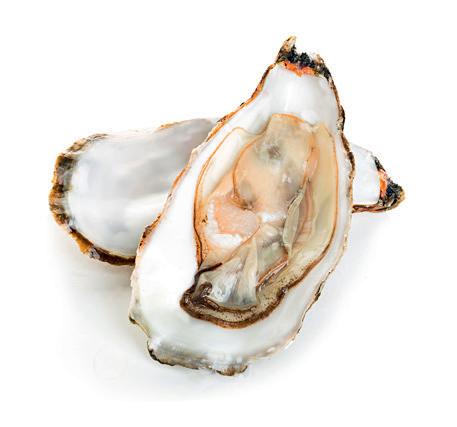
The path to achieving of the biggest native oyster restoration projects has not been easy, as Nicki Holmyard reports
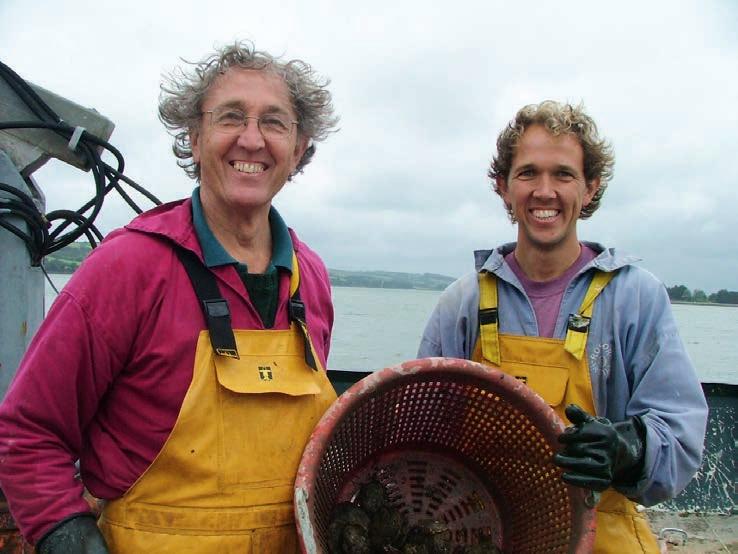
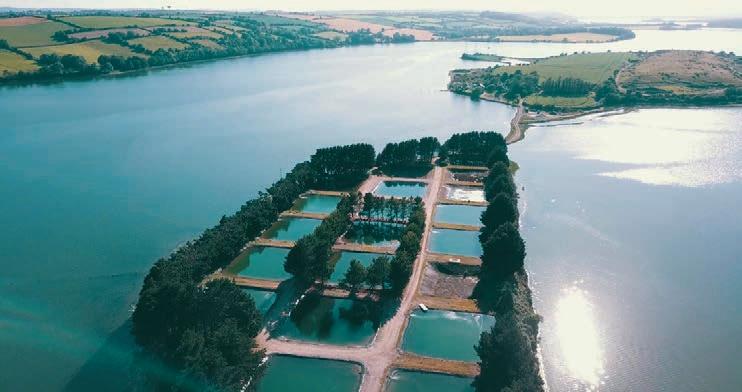
DAVID Hugh-Jones, of Rossmore Oysters, gave a fascinating talk at the Shellfish Association of Great Britain (SAGB) annual conference this year, in the members’ slot. He truly is a survivor of the oyster industry and gave me permission to use his story.
David’s interest in native oysters (Ostrea edulis) started in the mid-1960s, when he worked for the agricultural side of Shell. Excited by the potential of growing this species, he started his research and was pointed towards the MAFF (Ministry of Agriculture, Fisheries and Food, as it then was) shellfish laboratory in Burnham-on-Crouch, Essex.
There, he learned that most of the native oysters in England’s east coast rivers had died in the big freeze of 1963. He was also disconcerted to hear that severe winters had occurred on average,
every 14 years before then.
“I thought that was about the time needed for such a very slow-growing crop to just about break-even!” he says.
Seeking warmer waters, David headed west to Cornwall, where his plans stalled when he discovered that the Fal Estuary was a public fishery, and the Helford River was owned by the Duchy of Cornwall.
The was a solution, however, as David explains: “Then the penny dropped, there was still Ireland – a lot further west.
“I gave notice to Shell, learnt to dive, bought the gear, made myself a wetsuit, and left for Ireland in a van I could put a mattress in, which had I bought for 12 pounds 10 shillings!”
David received welcome advice from the Department of Fisheries and the Irish Sea Fisheries Board (BIM) and set off around the coast to find a suitable place to farm, donning snorkelling gear to investigate the seabed.
“When I swam in the North Channel in Cork, which was about one metre deep at low water, the bottom was thick with old oyster shell, and there were three oyster middens dating back thousands of years on the shore. This had to be the site,” he says.
David struck lucky when he met Eric Edwards, BIM Fisheries Development Officer, on secondment from MAFF in Burnham. Eric was later to become Chief Executive of the Shellfish Association of Great Britain (SAGB).
“He gave me a job for the summer on the Galway oyster bed and a very welcome salary of £5 a week. I learnt a lot there!”
David says.


Then the penny dropped, there was still Ireland
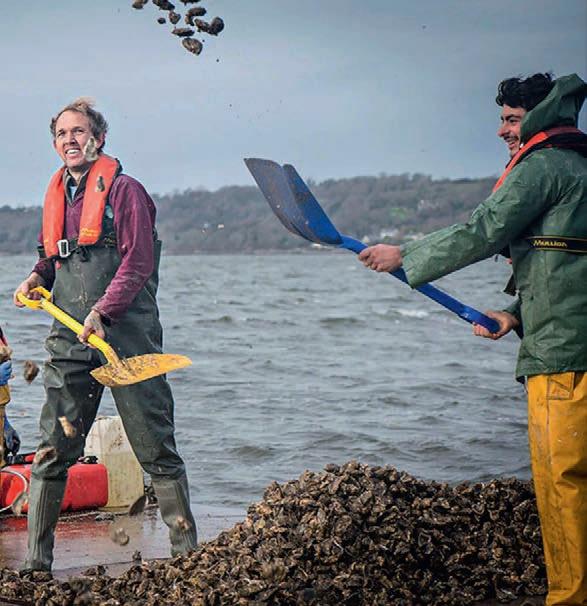
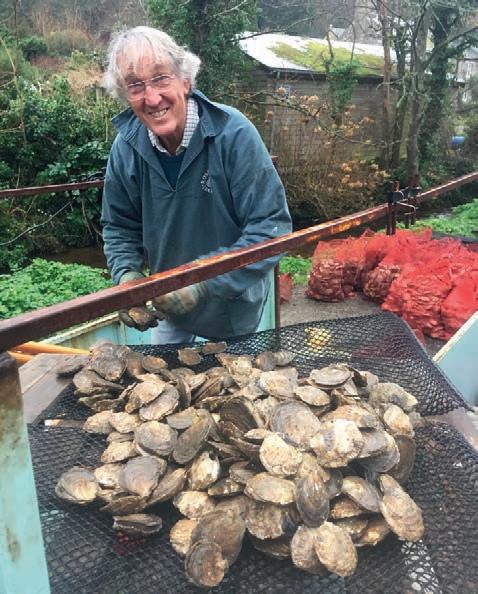
But how to restore his own oyster bed? It wasn’t possible to find enough mature oysters to seed it, and unlawful to remove small oysters from any public fishery in England, Scotland or Ireland.
Spawning tanks had to be the answer
David had come across the prewar work of Dr HA Cole on using the mussel-cleansing tanks, at the Fisheries Experiment Station Conway, as spatting tanks for native oysters. He also read up on the post-war work of Peter Walne, which paved the way for commercial oyster hatcheries, such as John Bayes’ pioneering Seasalter Hatchery at Whitstable. He says: “My gut feeling was that hatcheries were not the answer for our native oyster, but I went to see both scientists. Peter Walne thought I would be taking a retrograde step by using spatting tanks, but Dr Cole, by then the Chief Fisheries Scientist for MAFF in Whitehall, told me he didn’t see why ponds shouldn’t work on a commercial scale and suggested making use of butyl rubber liners, as concrete would be expensive.
“A few years later, I was pleased to take him a basket of pond-produced oysters, and he took me out to supper to celebrate!”
David also visited Yerseke, the centre of oyster-production in the Oosterschelde in the Netherlands. He met Professor Korringa, whose 1941 250-page publication was the acknowledged bible on the biology and farming of the flat oyster.
“He had records from 1870 to 1946 of sales, broodstock numbers left on the beds, water temperatures in July above the critical 19°C and, of most significance, the resulting spatfall on tiles and mussel shell. This was the blueprint I needed to develop a natural fishery and comparing the volume of the Oosterschelde to the North Channel, I reckoned I was going to need six million broodstock to get the old bed reproducing successfully again!” David says.
By early 1970, he had acquired an Oyster Fishery Order in the North Channel, which gave him oyster-farming rights for no rent and in perpetuity. He built a pond to breed oysters in and persuaded Paddy O’Keeffe, Editor of the Irish Farmers Journal, to back him with Irish farmers’ money and to become Chairman of the company.
“Paddy was a great support, and if ever I had to ask him if he knew anyone in a particular ministry, he would invariably ask: “Would the minister do?”
Wife Bridget came on the scene in 1970, and David had to persuade her that oysters came first. Any thoughts of luxury living were out!
“I spent six years examining water from the pond with a microscope, before we were able to develop 21 more ponds to undertake proper experiments, which involved buying a small island and shifting 100,000 tonnes of earth,” he says.
Ten years later, a diving survey of the beds by Cork University found 13 million oysters aged one year and older, which was more than twice the number David thought might be needed to get natural recruitment in his channel.
However, despite the oysters growing well, there was no sign of them spawning. The reason turned out to be persistent high levels of TBT (tributyltin) from anti-fouling paint in the sediments of Cork Harbour.
The next catastrophe came in the form of a deadly infection caused by the protozoan parasite Bonamia ostreae. David had inadvertently introduced this by buying oysters from the north-west of Ireland to boost sales and relaying any left unsold.
“Unknown to me, they contained oysters illegally imported from France, where Bonamia was rife, but the result was that we lost 98% of all the oysters on our densely stocked beds,” he said.
“We hired another boat and were landing 400 baskets a day to rescue just eight baskets of live oysters to sell. We were
devastated but couldn’t just give up!”
David knew that his company was the only one in Europe able to breed native oysters in any quantity, and specifically, from oysters where both parents had survived past their third-year spawning, which is when Bonamia kills them.
“If there was any chance that resistance to this infection could be bred into them, we had to go for it,” he said.
David had just enough broodstock for four ponds for the first two years but was back to the full 21 ponds for the second generation. After two generations, he had more oysters to sell than ever before. There were still losses, but the oysters were lasting longer, and he was soon able to breed from five-year-olds.
“What remarkable resilience our native oyster has, given a bit of help! We are now on to our ninth generation and fingers crossed, I think we dare to say that Bonamia is no longer a problem for us,” he said.
TBT levels in the local sediments have now sunk to a low-enough level to enable O. edulis oyster larvae to survive in the North Channel again, and David hopes that in a few more years, sons Tristan and Rupert may be able to claim the restoration of a native oyster bed in Europe.
The family have also looked after the native oyster fishery in Loch Ryan, Scotland, for the past 28 years, in partnership with the Wallace family, which was granted rights to the fishery in 1701.
David says the outlook is good: “A survey last year estimated a healthy stock of 23 million oysters in the loch, which is great news for the future of this fishery.”

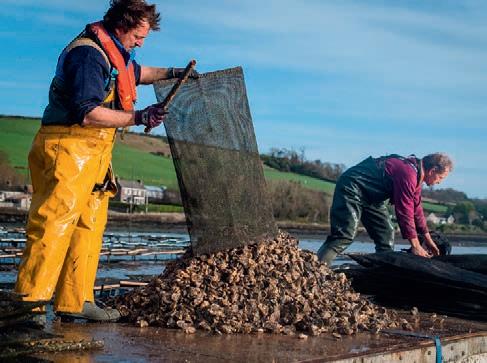
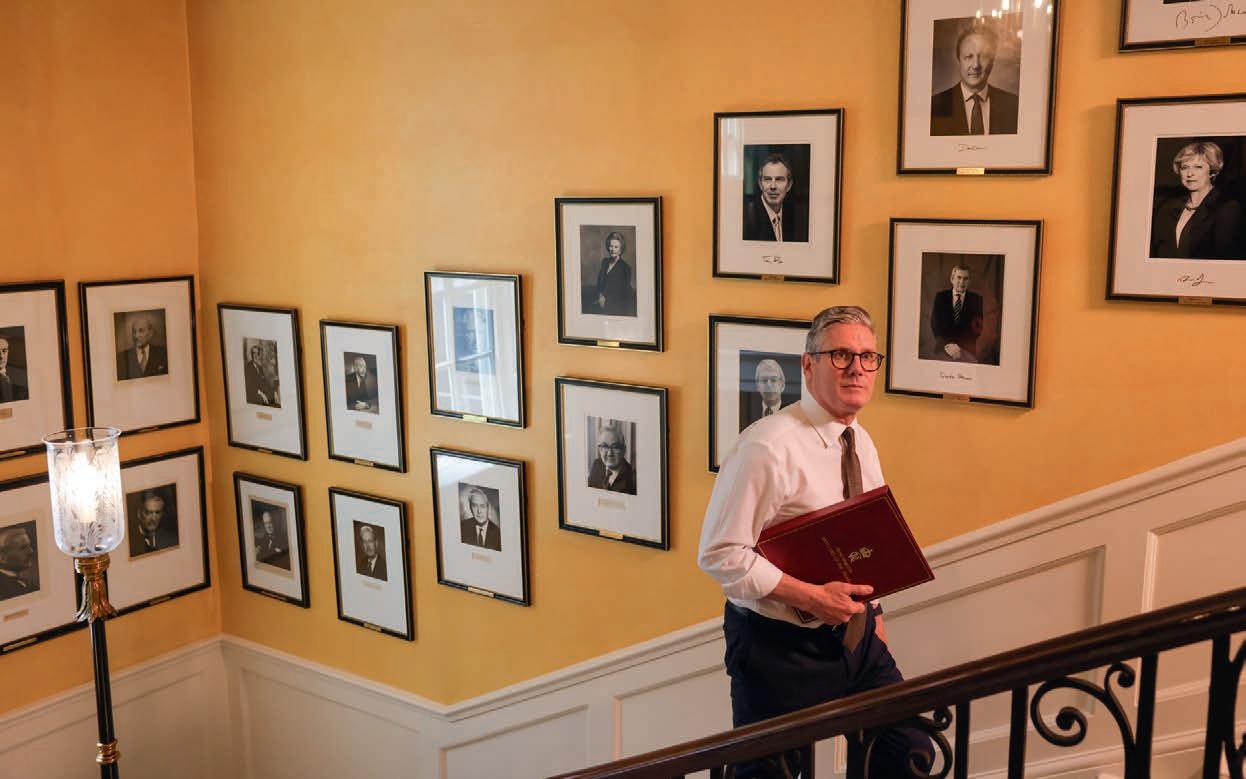
BRITAIN’S Labour Party swept to power last month on the strength of a one-word promise: “Change”.
There is no doubt that changes are underway, following a packed King’s Speech that set out a busy parliamentary agenda, to be enacted by a Parliament that gives Prime Minister Keir Starmer a hefty majority.
What, though, might the new government mean for the UK’s aquaculture sector? It would be misleading to pretend that the interests of the industry are high up on Labour’s list of priorities, with the National Health Service, the need for economic growth, the housing crisis and workers’ rights, to name just four, taking up a lot of attention.
Even so, it is fair to say that aquaculture is on the new government’s radar. The Labour Party’s manifesto gave a nod to the salmon industry’s role as an intrinsic part of “Brand Scotland”, pledging that the UK Government will take a more collaborative approach with the Scottish Government on international engagement.
The manifesto said: “Scotland has an enviable international reputation. Its culture, products and services are internationally
renowned – from whisky and salmon to computer game development, bioscience and financial services. Labour will champion ‘Brand Scotland’ across the world through the Scotland Office, and our diplomatic and trade networks.”



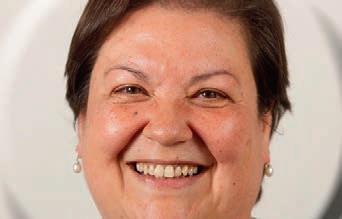
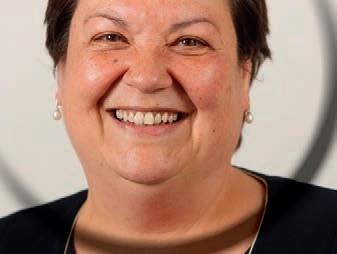
So far, the tone of the new administration’s relations with the devolved Scottish Government seems to suggest a more constructive atmosphere than has been the case in recent years.
The manifesto also committed to negotiating a new veterinary agreement with the European Union, which is something the salmon industry and, indeed, the seafood sector, has been lobbying for over the past few years.
Labour has resisted calls to reverse Brexit, but the manifesto said: “We will reset the relationship and seek to deepen ties with our European friends, neighbours and allies. That does not mean reopening the divisions of the past. There will be no return to the single market, the customs union, or freedom of movement.
“Instead, Labour will work to improve the UK’s trade and investment relationship with the EU, by tearing down unnecessary barriers to trade.”
This would include negotiating a new veterinary agreement “… to prevent unnecessary border checks and help tackle the cost of food.”
On hiring overseas workers – which has become an issue for the seafood industry post-Brexit – the manifesto was fairly vague
Labour will work to improve the UK’s trade and investment relationship with the EU
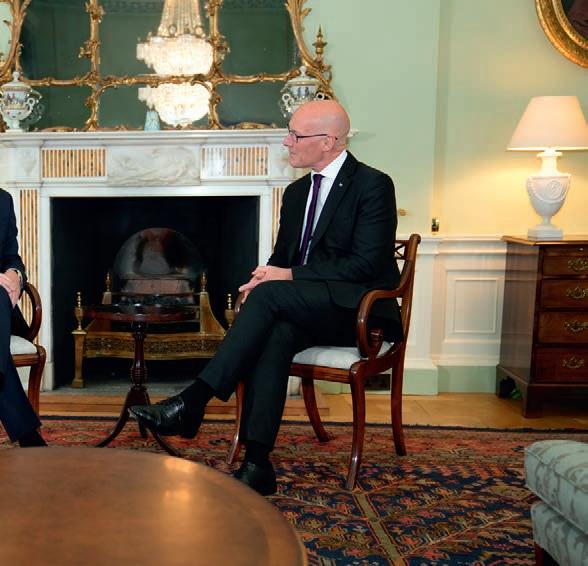
regarding Labour’s plans to manage legal migration, but it stressed there will be no return to free movement
It says net migration will be reduced and adds: “We will reform the pointsbased immigration system so that it is fair and properly managed, with appropriate restrictions on visas, and by linking immigration and skills policy.”
The manifesto promised to apply “joinedup thinking” so that an influx of skilled workers from overseas in a given sector is treated as a call to action to improve training UK workers in that field.
Tantalisingly, ahead of the General Election, Scottish Labour’s DeputyLeader, Jackie Baillie, hinted that a Labour government might look favourably on proposals for a “Scottish visa”. This would effectively be a work permit to allow foreign nationals to be employed in Scotland even if they could not use it elsewhere in the UK. This approach has been strongly advocated by the Scottish National Party. More recently, however, Scottish Labour Leader Anas Sarwar has poured cold water on the idea that Scotland might have a separate immigration policy.
On environmental policy, Labour has promised action to clean up Britain’s rivers and coasts, and a land-use framework to protect food security and the environment, but there is no mention of how Labour would manage marine protected areas (MPAs).

Planning looks like one of the areas in which Keir Starmer’s government is prepared to spend its political capital. This is often presented an argument about housebuilding and the “green belt” outside towns and cities that has previously been out of bounds for developers.
The planning agenda is about more than houses, however. Unlocking planning restrictions will also make it easier to overcome objections to a variety of developments.
One of the Bills outlined in the King’s Speech concerns reforms for the Crown Estate. The government promises: “This Bill will modernise the Crown Estate by removing outdated restrictions on its activities, widening its investment powers and giving it the powers to borrow in order to invest at a faster pace.
“These measures – which conform to our fiscal rules – will unlock significant investment in public infrastructure for the benefit of the nation.
“That includes vital marine investment needed to accelerate and quadruple offshore wind capacity by 2030 as part of the Government’s clean power mission.”
The Crown Estate has already been looking at ways to streamline the laborious process for gaining consent for shellfish and seaweed farm projects, so a faster consenting process for renewable energy could herald good news for aquaculture.
Of course, much of this is not relevant for the salmon industry, which in the UK operates exclusively in Scottish waters under the jurisdiction of Crown Estate Scotland. The same distinction applies to planning on land, which is a devolved matter. Even so, if planning reform is seen to boost economic growth for England and Wales, it will put pressure on the Scottish Government to follow suit.
Also, some of Labour’s infrastructure investment plans will have UK-wide implications. The proposed National Wealth Fund, for example, includes funding of £1.8bn to upgrade ports and build supply chains across the UK.
The run-up to the election saw Labour in Scotland reaching out to the fish farming industry on a number of occasions – not surprisingly, given that Scottish salmon is the UK’s biggest and most valuable food export, with international sales of around £600m to more than 50 countries annually, and directly employs more than 2,500 people.
Ian Murray, now Secretary of State for Scotland, and Torcuil Crichton, now Labour member for the Western Isles, visited Bakkafrost Scotland’s Loch Roag salmon farm on the Isle of Lewis in August last year. Murray said at the time: “It is the job of government to ensure the continued
success of Scottish salmon, facilitating sustainable growth with animal welfare remaining a top priority.”
More recently, Anas Sarwar dropped in on the Aquaculture UK trade show in May, meeting with industry body Salmon Scotland and the Young Aquaculture Society. He said: “The salmon in our waters are a key part of ‘Brand Scotland’, contributing to inward investment and exports.
“Food and drink should be viewed as an economic asset, and we need to build the right business environment in Scotland to help sectors like this thrive with responsible growth and high animal welfare standards.
“It’s vital that Scotland is seen as open for business, and a Labour government will prioritise economic growth so that we can deliver more high-skilled jobs, enable rural communities to flourish, and invest more in public services.”
Labour politicians have, from the industry’s point of view, been saying all the right things. Now they just have to deliver..
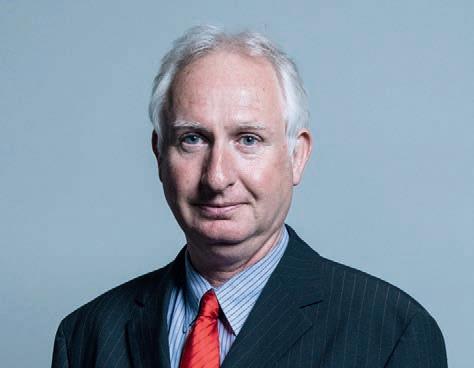
THE government appointments announced following Labour’s election victory largely followed the shape of Labour’s shadow roles in opposition, so it was no surprise that Daniel Zeichner, Shadow Minister of State at the Department for Environment, Food and Rural Affairs, was named as the new Minister for Farming, Food and Fisheries. He previously served as Shadow Environment Minister (2020-24), Shadow Transport Minister (2015-17), and was a member of the Petitions Committee, Transport Committee, and Science and Technology Committee. Daniel was first elected as the Labour MP for Cambridge in May 2015 and has been re-elected in the general elections of 2017, 2019, and 2024. Zeichner’s biography describes him as “a lifelong environmentalist with a sustained interest in agriculture and food issues”. He has been a vocal advocate for stronger environmental protections, challenging the previous Conservative Government’s targets on air and water quality in numerous debates on food security and broader environmental issues.
The
so-called “ground rent tax” on Norway’s fish farmers is taking its toll, Vince McDonagh finds
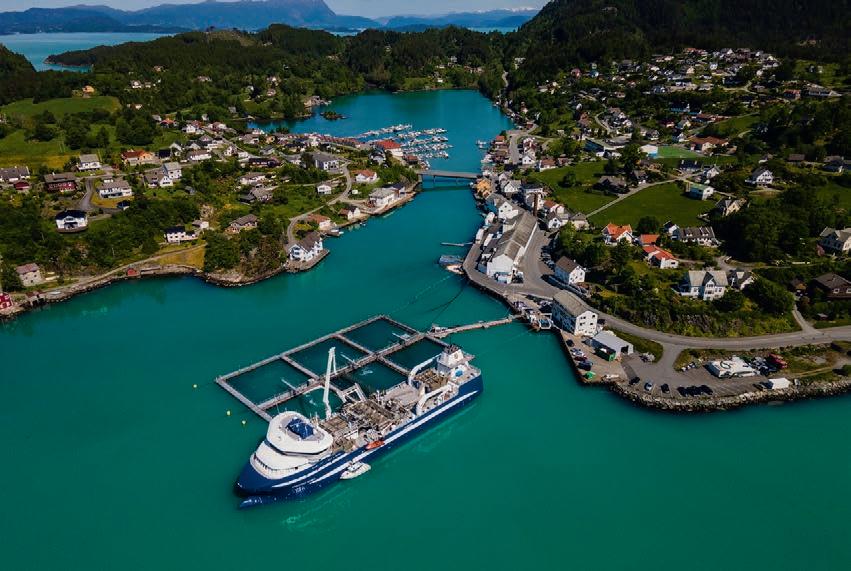
THE great thinker Albert Einstein once said he found tax was the hardest thing in the world to understand. It is a sentiment with which some of Norway’s salmon farmers today would probably agree.
The latest figures from privately-owned non-stock market listed companies show that the controversial ground rent tax on salmon farmers, introduced by the Labour-Centre Party coalition government two years ago, is seriously eating into profits with a consequential negative impact on investment.
This was widely predicted at the time of the announcement but scoffed at by some commentators because the industry was doing particularly well.
Excuse the mixed metaphor, but salmon at that time was seen by politicians on all sides as one big fat cow.
While it would to be too much to say the industry is struggling today, things have changed – and not for the better.
Prices have slumped, non-tax costs have risen sharply, biological challenges have eaten into profits and become expensive to fix –and now most companies are facing considerably higher tax bills.
With a general election now just over a year away, tax is once again becoming a dominant issue among Norway’s salmon farmers and among many of its employees who depend on the industry for their living.
While aquaculture may not swing the result of next year’s election, it is expected to have an important influence.
The cost of living, which did it for Britain’s Conservatives in July, is still the dominant domestic issue in Norway and is threatening to be a problem for Labour.


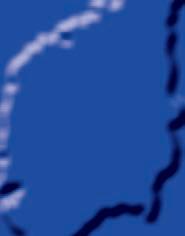
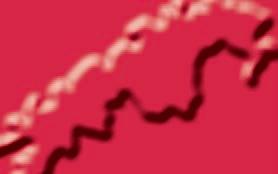



The Conservatives and its right of centre partner, the Progressive Party, are riding high in the polls and are tipped to form the next government, since Norway today is rarely governed by a single party.
They have promised to abolish the tax although they are still likely to replace it with something else.
That is for next year. Of more immediate concern is the effect the tax is having on the industry today and it is not good.
The Alsaker group, for example, which is the main company of Alsaker Fjordbruk, had an operating profit of NOK 1.1bn (£80m) in 2023. But its tax costs more than doubled from NOK 259m (£18.5m) to NOK 579m (£41m) and the group saw its profits coming close to being halved. This has meant some £27m less for possible investment, the company said.
Alsaker operates four smolt plants, 24 food fish permits and a slaughterhouse, along with other facilities.
Another company, Refsnes Laks, paid NOK 99m (£7m) in taxes last year, of which NOK 62m (£4.5m) was ground rent tax.
The family run business Ellingsen Seafood increased its turnover by NOK 302m (£21m) but was saddled with an additional ground rent bill of NOK 75m (£5.3m) along with an increase in other taxes.
Figures from the major companies such as Mowi, SalMar and Leroy will come later in the year, but their tax share is certain to be even higher.

”Consultancy and bureaucracy costs have skyrocketed

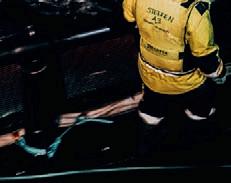





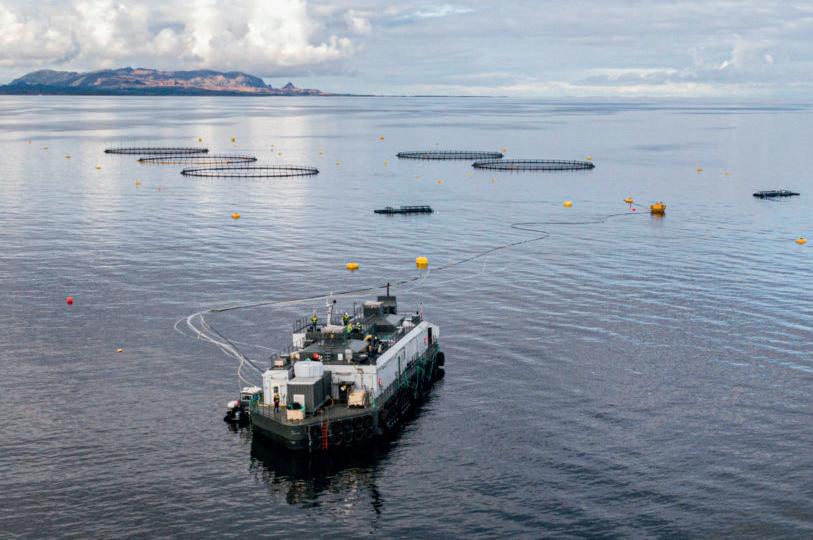
Finance Minister Trygve Vedum of the Centre Party is unrepentant and believes that the warnings two years ago about mass bankruptcies were exaggerated.
He told the financial news website E24 that warnings about “robbery of the coast”, “lights going out along the coast” and “knife in the back against small businesses” were exaggerated.
“I think what we did was right,” he said. He may be forced to change his mind after next year’s election count.
Consultancy spend doubles
The tax has also brought other cost increases. A new report from the independent business group NHHS Consulting shows that the expenditure on consultancy and advisory services in the aquaculture industry has almost doubled after the Støre government introduced the salmon tax.
On average, the costs associated with external consultancy and auditing increased by 84% for the 13 aquaculture companies that took part in the survey.
Seafood Norway’s Kristin Langeland said: “This was, among other things, what we warned against.
“The report from NHHS Consulting confirms the impression we have had that consultancy and bureaucracy costs have skyrocketed after the salmon tax was presented by Støre and Vedum in 2022.”


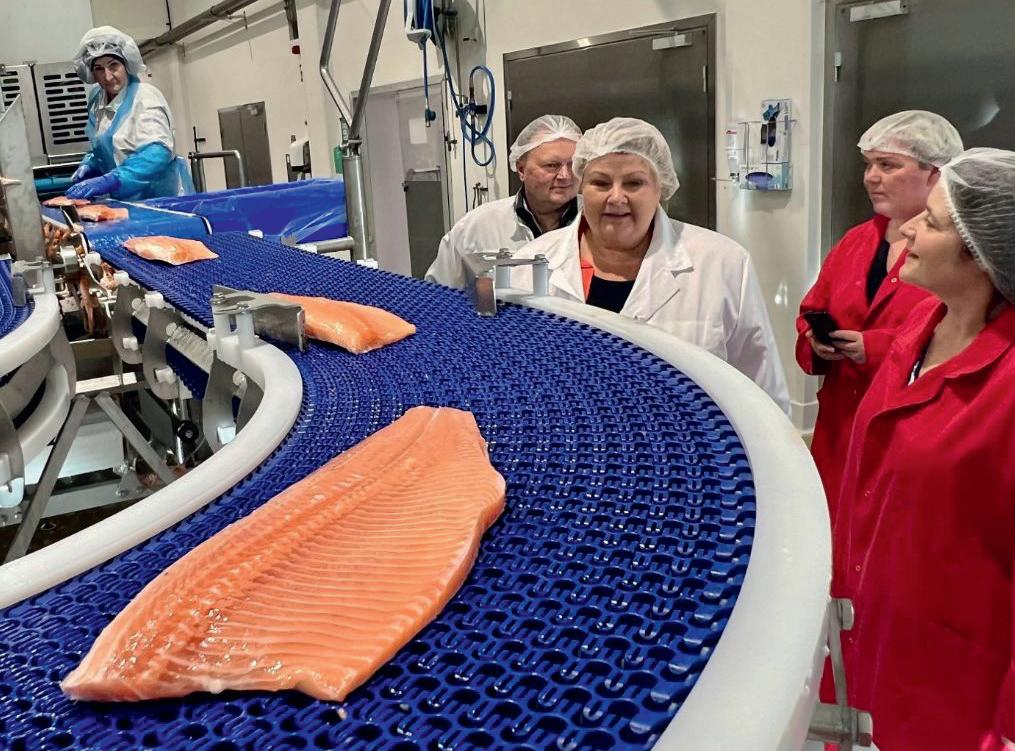


“The Labour Party and the Centre Party were clear that they would cut bureaucracy if there was a change of government in 2021. Many believed in them, and they won the election. Now we see that bureaucracy and tax costs are skyrocketing. Here they have to clean up [the mess they made].”
Seafood Norway says that at Sinkaberg, a mediumsized family-owned farming company in Rørvik, costs almost tripled in 2023.




The company’s CEO, Svein-Gustav Sinkaberg, said: “The extra tax on the aquaculture industry that we have had imposed on us has resulted in a massive bureaucratisation and over-administration of a profitable coastal and district industry. We feared that this could happen but found that we fell on deaf ears when we warned of it.
“We have to pay tax, but the tax model and the total tax pressure the government has imposed on the industry is so great that it drains us of both capital and internal capacity that is tied up in reporting instead of creating value along our coast.”

She added: “These costs come on top of the tax, the production tax, the property tax, the marketing tax, the research tax and the other taxes and fees that the industry pays.”
Martine Werring, head of tax at Seafood Norway, said that in the government online platform known as Hurdalsplattformen, it was stated that the government wanted to cut bureaucracy for business.
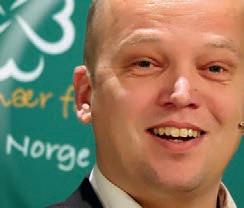
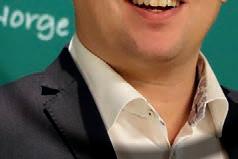



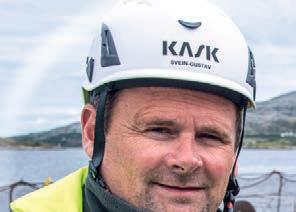
Sinkaberg believes that the whole country will lose from increased bureaucracy and overadministration, adding: “We must regain trust in the government. We have to pay taxes, but we can’t have a tax bill and a ‘form empire’ that takes away our investment opportunities and desire.”
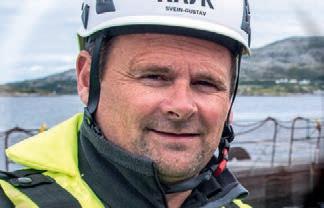
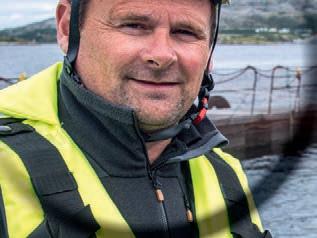
He added: “If we are to have vibrant coasts and rural areas in Norway, we need more than free ferries. We also need framework conditions that enable us to grow further and create more profitable jobs. Not just for us and our local environment, but for the whole of Norway.”
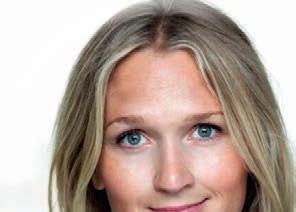
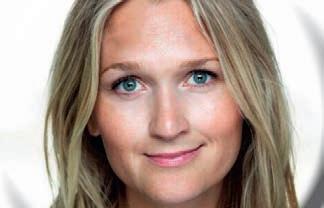
Despite these promises, costs have increased considerably for the aquaculture industry, he argues.
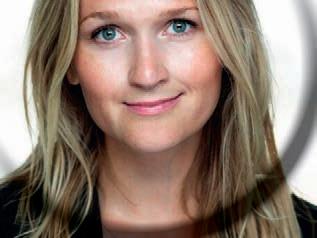
The ground rent tax debate will continue until the general election next year and possibly well beyond it. While the Conservative coalition remains ahead in the polls, the gap has narrowed in recent months, so Conservative leader Erna Solberg is not yet guaranteed a return to power.
But if she does win, will she replace the ground rent tax with something equally unpalatable to the industry?
Politicians might do well to take note of the comment from the 19th century US author Austin O’Malley who said: “Like shearing sheep, it is best to stop levying taxes when you get down to the skin.”



THE volume of fishmeal and fish oil (FMFO) generated by fisheries along the coastlines of West African countries has been growing significantly, according to Greenpeace. A report by the global campaigning network revealed that FMFO exports in Mauritania doubled between 2014-2018. In 2019 Greenpeace recorded some 50 FMFO factories in the region. This has had mixed results. A 2022 study of the fish-based feed industry in sub-Saharan Africa found that while the industry provides some economic benefits for governments and fish workers, it also presents a threat to livelihoods and the food security of local communities.
Hazel Healy, UK Editor at environmental activist website DeSmog, says: “The problem with FMFO sourced from West Africa is that in this part of the world, the industry is competing directly for the same fresh fish that is widely eaten here, and which provides employment for tens of thousands of women fishworkers.”
Meanwhile, thousands of miles away, in countries like Norway, fish oil is needed to support the salmon farming industry.
According to analysis by campaign group


Setting the right balance between a global industry and local communities is proving a challenge in the West African fisheries, as Fiona Nicolson reports
Feedback Global, in 2020, nearly two million tonnes of wild fish were required to produce fish oil for the Norwegian farmed salmon industry.
Feedback Global reports that four big producers supply nearly all the feed used in Norwegian salmon farming, and that all of them obtain fish oil from fishing area FAO 34, located off the coast of West Africa. It also says that the volumes of fish sourced from this area in 2020 could have supplied a year’s worth of food for around 2.5-4 million people in the region.
Feedback’s Blue Empire report on the impact of the Norwegian salmon industry on West Africa, published in January this year, also identified other issues.




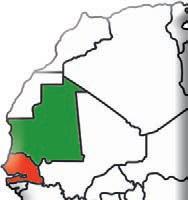

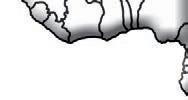
1.5 per


Amelia Cookson, Industrial Aquaculture Campaigner at Feedback, says: “The industrial scale of the fishmeal industry in West Africa is driving up the price of fish sold across several West African markets. The price of sardinella in Mauritania has risen from €0.25 to € kilogram in recent years. This is making fish unaffordable for the local population.”


There is an impact on livelihoods and on health too, observes Cookson: “The decline in fish populations is also being linked to the increase in migration from the region as poor prospects force thousands of people to leave each year.” She adds: “The small fish targeted by the FMFO industry contain key nutrients including iron, zinc and calcium, critical for women’s health in West Africa, where more than half of the female population suffers from anaemia.”

In July, Feedback sent an open letter to the Norwegian government, signed by 39 organisations.
Aliou Ba, Senior Ocean Campaign Manager at Greenpeace Africa, one of the signatories to the letter, says: “The fishmeal industry is a serious threat to food security and the future of fisheries in West
”The fishmeal industry is a serious threat to food security
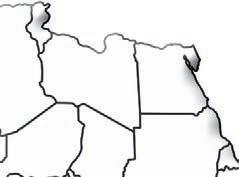
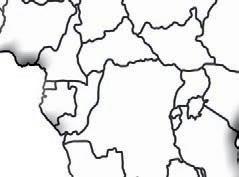
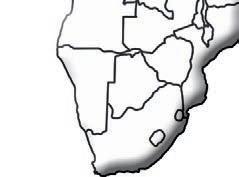

Africa. It plunders our marine resources to feed intensive aquaculture in Asia and Europe, when local populations need it for their own food.”
The signatories called on the government in Norway to ban the country’s farmedsalmon producers from sourcing fish oil from West Africa, to halt further growth in the sector and to ensure transparency throughout corporate supply chains. To date, the government has not responded to the letter.
However, the most recent statistics from marine-ingredients organisation IFFO, from 2021, indicate that while some West African countries need their local fish for food, others are less dependent on it. Commenting on Senegalese and Mauritanian diets, Petter Johannessen, IFFO’s Director General, says: “While Senegalese rely on fish for their daily diet, Mauritanians rely more on meat, with little consumption of fish.”
The figures also showed the scale of FMFO production in the region. Johannessen says: “Mauritania and Senegal provide small contributions to the world’s fishmeal and fish-oil production: in 2021, Mauritania provided 1.12% of the world’s FMFO production and Senegal provided 0.22%.”
He also points to measures taken by Mauritania to reduce its contribution: “In 2023, it placed a cap on the amount of pelagic (small fish) catches processed for indirect human consumption. The regulation restricts each factory to processing a maximum of 4,000 metric tons of pelagic catches per year.”
Sustainability developments
Actions undertaken to address the sustainability of the FMFO industry in this region have also come under scrutiny recently.
In July, DeSmog published a report in which it states that initiatives to ensure responsible sourcing for the global aquafeed industry “are being undermined by systemic conflicts of interest, endangering efforts to safeguard critical fish stocks in West Africa.”

Opposite from top: Market woman at her fish
DeSmog mapped the membership of three major sustainability initiatives set up by global companies in the FMFO industry that are active in West Africa. It said that, according to its findings, none involve any representatives from the West African public, women fish processors or artisanal fishers. It also reported its finding that at least three of the trade groups and companies involved in the initiatives had “a history of lobbying against environmental regulations”.
However, big aquafeed companies such as Norway-based Skretting emphasise that they support environmental improvements,




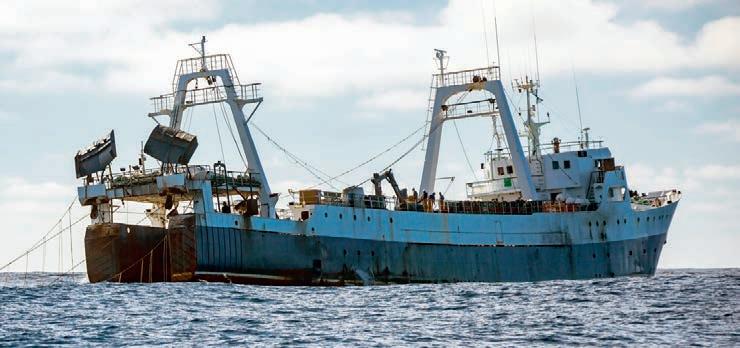
including initiatives such as FIPs (fishery improvement projects), which set out to improve sustainability, practices and management of fisheries to recognised standards.
A spokesperson for Skretting says: “We welcome the attention to West African fisheries and any initiative that aims at increasing transparency and accountability throughout their supply chains. “We’re supporting the small pelagics FIP in Mauritania and are involved in stakeholder initiatives that have identified West Africa as a focus area to improve the environmental and social impacts of our operations.”
In addition, Skretting reports that it is also taking part in the SeaBOS – West Coast Africa Keystone Project. Its aim is to identify illegal, unreported and unregulated fishing and modernslavery risks within SeaBOS member companies’ operations and across their supply chains, and to take action to mitigate these risks. It will focus on supply chains of small pelagic fish in the coastal waters of Mauritania amongst other areas. The aim is “to create positive, tangible and publicly reported impacts by October 2025”.
IFFO also says that it backs FIPs, for their potential to create positive change. Johannessen comments: “We believe that the FIP model is a powerful platform for dialogue and measurable progress. We call on all companies sourcing fishmeal and oil from Mauritania to join the Mauritania FIP for small pelagics, and to get their suppliers to join. In Senegal, where no FIP is in place, we call on the government, the fishing community and the industry to consider such an initiative.”
However, other organisations disagree. Cookson says that: “Corporate initiatives such as the Mauritanian FIP are deeply flawed and act as a sustainability smokescreen, enabling the further growth of the industry rather than addressing the socioeconomic damage caused by the use of nutritious fish in regions suffering from food scarcity.”
Commenting on the Mauritanian FIP, Healy says: “Local organisations report better transparency, which is welcomed. But seven years after it was set up, the fishery is still not certified, and stocks of the industry’s target fish are still overexploited and at risk of collapse. Yet all the major EU, Norwegian and US fish-feed companies are sourcing from there.”
In the meantime, the competing demands for feed for salmon and food for West African citizens look set to continue.
Mowi acquired Wester Ross Fisheries in 2022. Robert Outram asks: has the move changed the company’s unique approach?
WESTER Ross Fisheries is a different kind of salmon farmer. Visiting the company’s fish farm at Ardmair, near Ullapool on Scotland’s west coast, the first impression is that the pens, an array of steel cages, are distinct in scale and shape from the large round pens seen at most farms these days.
Wester Ross’s hand-reared salmon commands a premium with high-end distributors, restaurants and smokehouses. So, when it emerged that the company had been acquired by Mowi, the world’s biggest salmon farmer, the inevitable question was: what will this mean for Wester Ross’s unique approach to salmon farming?
The sale of the company was confirmed in a Companies House document in June 2022, bringing to an end speculation over what would happen when Managing Director Gilpin Bradley finally retired.
Wester Ross Fisheries was founded in 1977 by Gilpin’s father Robin Bradley, with his business partner Alan Mann, and it was the oldest independently operated salmon farm in Scotland. In the marketplace it is known as Wester Ross Salmon (WRS).
After the sale, Gilpin Bradley joined Mowi Scotland as Business Development Director, Farming Scotland. He retired in September 2023 and, in May this year, was rewarded with the Outstanding Contribution award at the Aquaculture Awards, held in Aviemore.
Connie Pattillo has been Head of Farming Operations at Wester Ross since February 2024. She says: “The Wester Ross brand is one that people trust and believe in.”
Pattillo was previously Area Manager (Western Isles) with Mowi Scotland. Born in Australia to British parents, she studied marine biology at the University of Stirling, doing her thesis on lumpfish welfare.


She stayed on and did an internship in the salmon industry, and then worked at the Mowi wrasse hatchery at Machrihanish for six months, before joining the cleaner fish team for Mowi North, covering 12 farms including Loch Hourn and Skye.
Her career at Mowi progressed, becoming Health Manager for the North region, then a Farm Manager and then Area Manager for Uist in the Outer Hebrides, before her role expanded to cover the whole of the Western Isles area.
She argues that, since becoming part of the Mowi family, the fundamentals of what makes Wester Ross special have not changed.
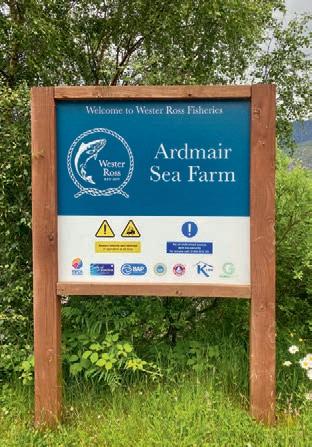
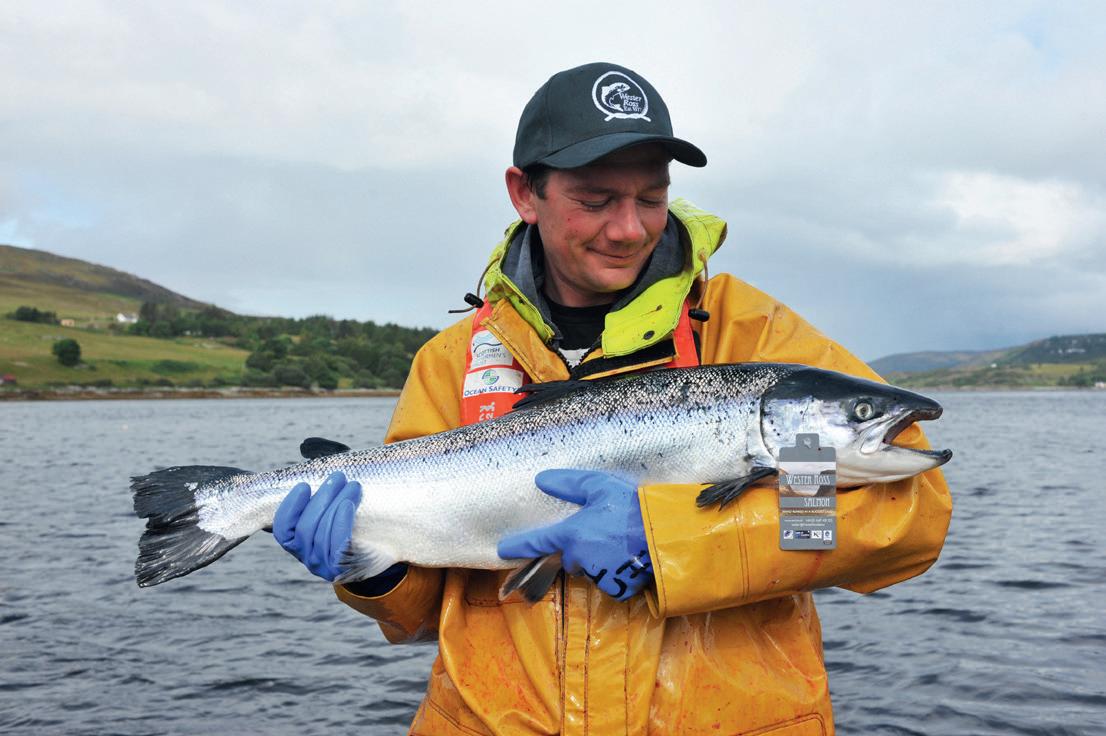



The feed the company still uses is its own formulation, known as Kronos, which is now produced at Mowi Scotland’s feed mill at Kyleakin. Among other features, it uses Panaferd as a natural, not synthetic, source of astaxanthin.
The feed is also high in marine ingredients, but this includes a high proportion of trimmings from whitefish processed for human consumption. Marine ingredients make up 20-25% of the Wester Ross feed and of this, at least half is made up of trimmings.
Wester Ross continues to operate with smaller pens. The cages at Ardmair, for example, are 14m x 10m which means that operations like net cleaning and morts removal can be carried out manually.
Hand feeding is more than a gimmick, Pattillo stresses: “It means that you have eyes on the fish.”
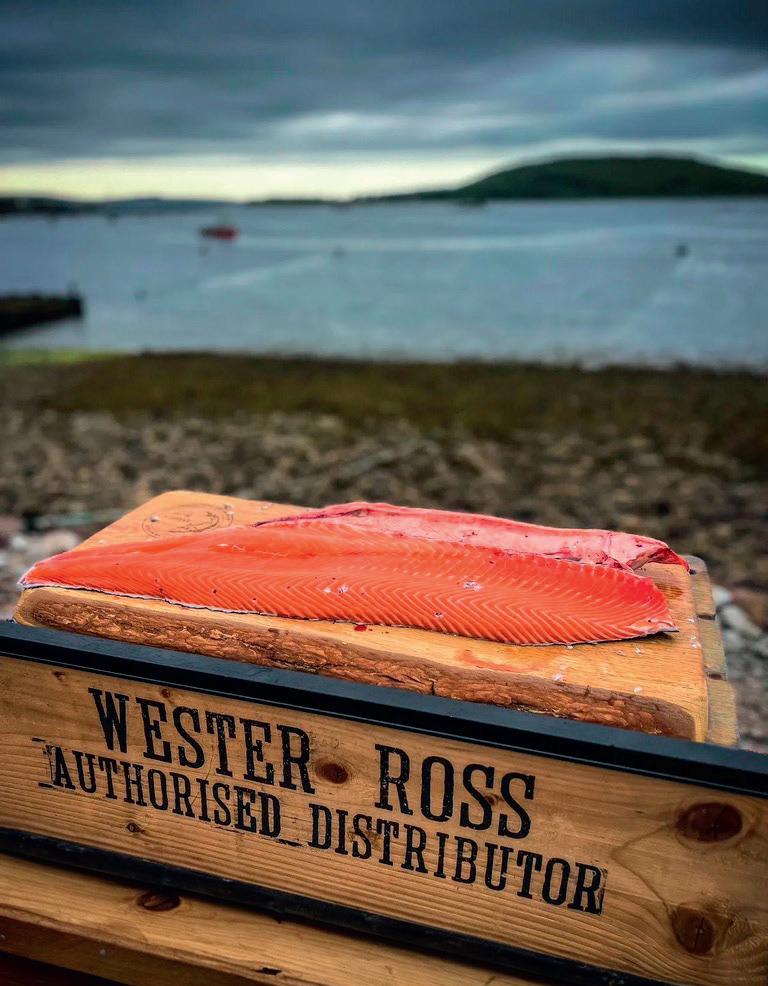





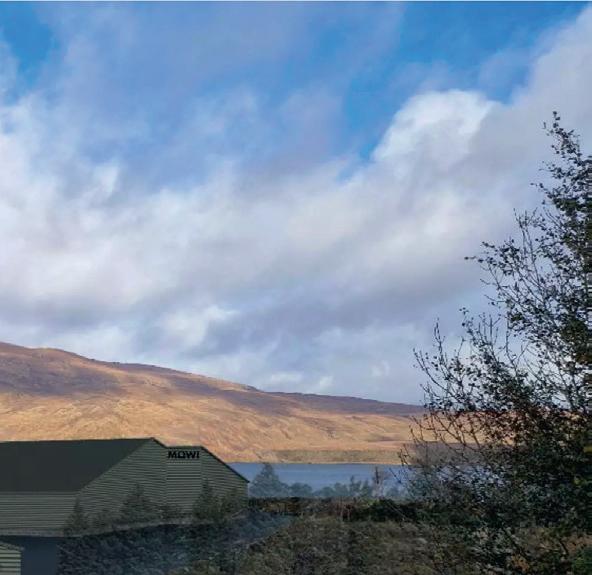

hand-feeding approach is still very much standard procedure.
The Wester Ross approach to medicine also continues. The use of medicines is minimised, as it always has been, with an emphasis instead on vaccination, mitigation, biosecurity and freshwater treatment, using wellboats. One of the advantages of having Mowi as a parent is that Wester Ross has easier access to the wellboat schedule.
As well as freshwater treatment, sea lice are managed through the use of cleaner fish, both lumpfish and wrasse. When Fish Farmer visited Ardmair, we saw a delivery of wild caught wrasse, all caught locally. They were a mix of species, including some ballan – the most favoured as cleaner fish – and goldsinny wrasse.
The wrasse are caught under Marine Scotland’s strict guidelines, which among other things mean that any that are too small or too large cannot be kept.
The cleaner fish were creel-caught for Wester Ross by the Alchemy, a small fishing vessel previously belonging to Wester Ross. The skipper is Matthew Zeitz, formerly of the Wester Ross team.
Pattillo says ensuring safe oxygen levels are maintained is one of the most significant health challenges, especially in Loch Broom. To help with this, the cages have recently been replaced with slightly larger pens which are better located and not so close together, allowing water to flow more freely.
She says: “We have aeration onsite [provided by GroAqua] and an oxygenation unit is on hand, which thankfully we haven’t needed so far. There are oxygen meter readers in every farm and these are connected to the shore by Mowi’s own communications system.”
The system means dissolved oxygen levels can be checked by the team via mobile phone at any time.

This hands-on approach has long been a part of the Wester Ross story. It was recently challenged, however, by anti-salmon farming activist Don Staniford, who argued that the presence of feeding equipment undermined that claim.
As Connie Pattillo explains, however, where there are automated feeding systems they are there to ensure the fish can be fed to welfare standards, particularly when weather is poor or other farming activities require additional focus. Day-to-day, the traditional
It means that you have eyes on the fish
Although they have not been a major problem so far, Pattillo and her team are also well aware of the potential threat posed by micro-jellyfish, which have been a problem along the west coast of Scotland.
The Farms Manager at Wester Ross is Scott Forder, who took up the role in early July, having worked for nearly 10 years at Mowi.
He says: “It’s so much more hands-on compared to the previous location I was at. There everything was automated, right down to feeding fish, washing nets.
“Here, everything is done manually. Last week I was watching someone count fish manually while transferring them from one pen to another, scoring off every 100 fish. So it’s totally different.”
His previous experience with organic salmon farming means he is used to the medicine-free approach.
As he puts it: “At the end of the day, the fish are what come first. If you don’t have the fish, you don’t have anything at all.”
The small scale of operations means that most tasks can be carried out by the farm teams without requiring assistance. Net cleaning, for example, is handled by lifting the nets, cleaning them and drying them on site – cranes, or net cleaning robots, are not needed.
for example, is handled by lifting the nets, cleaning them and drying
A big part of working at Wester Ross is the customer interaction – a lot of people visit the farms and staff each year, and this helps
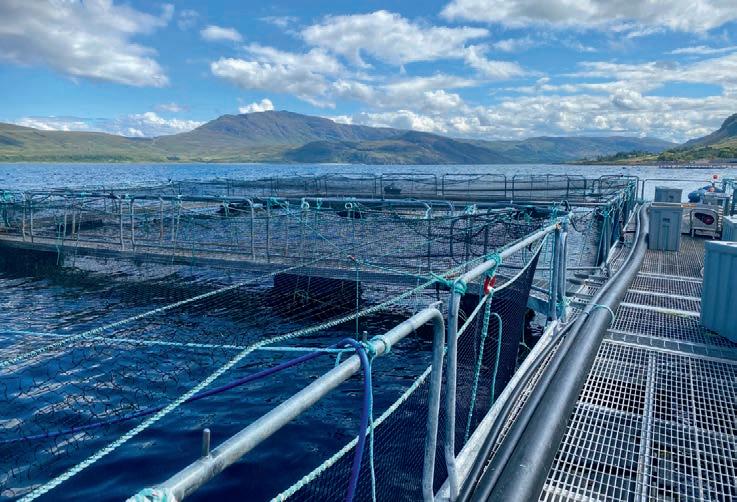






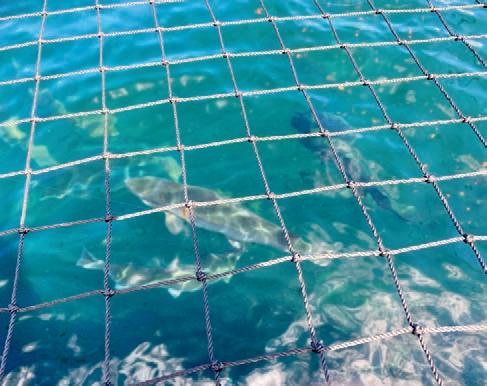
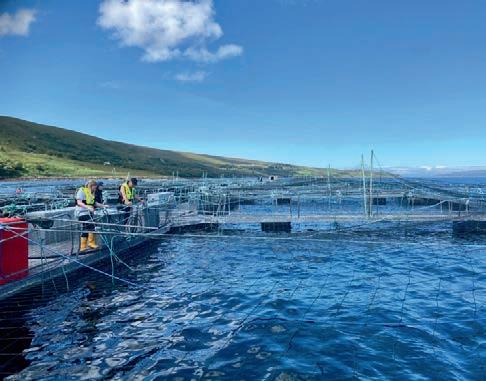
to build the relationship between farmers and consumers. When Fish Farmer visited Ardmair, for example, two of the founders of a high-end, independent smokehouse in the south of England were also there to see the Wester Ross approach at first hand.
Forder says: “Everyone here is really passionate about it, and that’s what I like.”
The acquisition by Mowi inevitably meant the loss of some jobs in the support areas, but there were no cuts to farm staff. In fact, production at Wester Ross is increasing, thanks to the addition of new sites at Torridon and Loch Alsh, previously operated by Mowi.
Wester Ross now has operations at seawater sites in Loch Kannaird, Loch Broom, Little Loch Broom, Loch Torridon


and Loch Alsh. The aim is to guarantee all year round production, which was previously harder at a small scale.
During periods when it is harder to maintain supply, the company sells Highland Blue, a sub-brand of WRS that focuses on hand-picking salmon that meet Wester Ross’s high standards.
In the recent past up until now, the company has sourced its smolts from Migdale and, more recently, Mowi. It now has a broodstock programme that should, in due course, make Wester Ross selfsufficient.
The current broodstock fish are reared at Ardessie, on the shores of Little Loch Broom. This is also the site of Mowi’s new hatchery, currently under construction. The aim is to achieve self-sufficiency in ova for Mowi Scotland, which used to import eggs from Norway and now, because of government import restrictions, mainly from Ireland.
Mowi’s initial proposal for the project stated: “The production of broodstock will
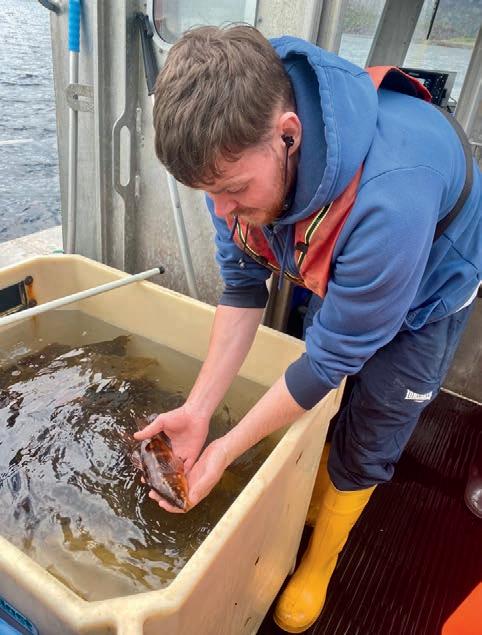
secure egg supply to Mowi Scotland, with the hope to also supply other companies, thus improving the situation for the salmon farming industry in Scotland as a whole.
“This will also allow Mowi to regain control of the breeding programme for Scotland’s production fish, selecting those parent fish whose offspring will be most robust to the specific challenges faced locally, and providing significant advances in survival and performance.”
The hatchery itself is still in the process of being built, but Wester Ross’s broodstock fish are based in two sets of pens in the loch. The location, with high tidal flows and winds creating a good level of dissolved oxygen, is ideal for the fish, and periodic flows of fresh water from the surrounding hillsides help to discourage sea lice.
The latest stock, which as Fish Farmer visited were about ready to have their eggs stripped, are big fish – around 2530kg on average – with a “B” group ready for stripping next May. WRS has launched a new brand, Genesis, for selected broodstock fish once they are harvested.
As part of the Mowi group, Wester

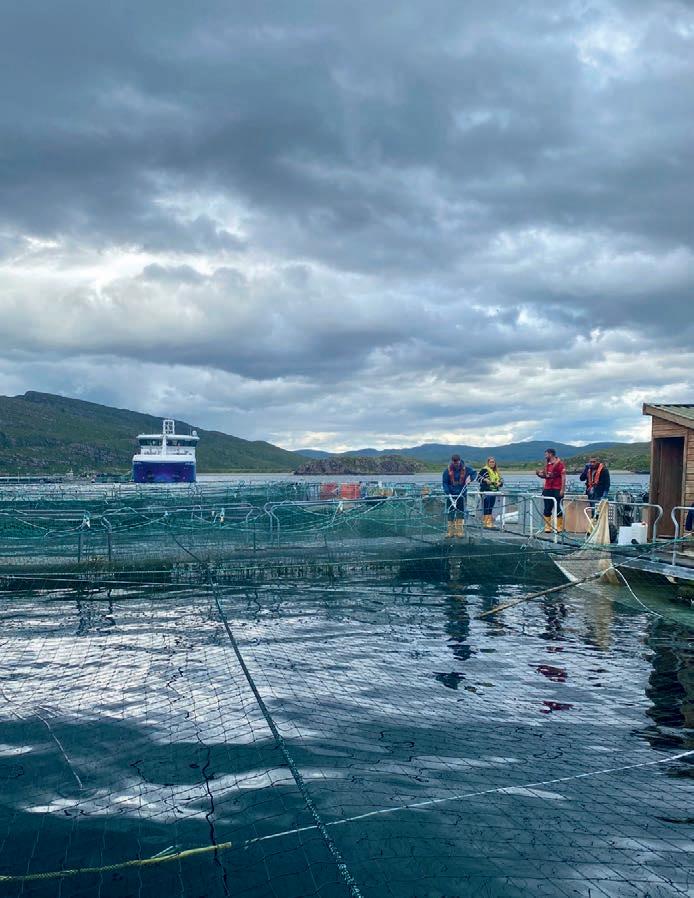

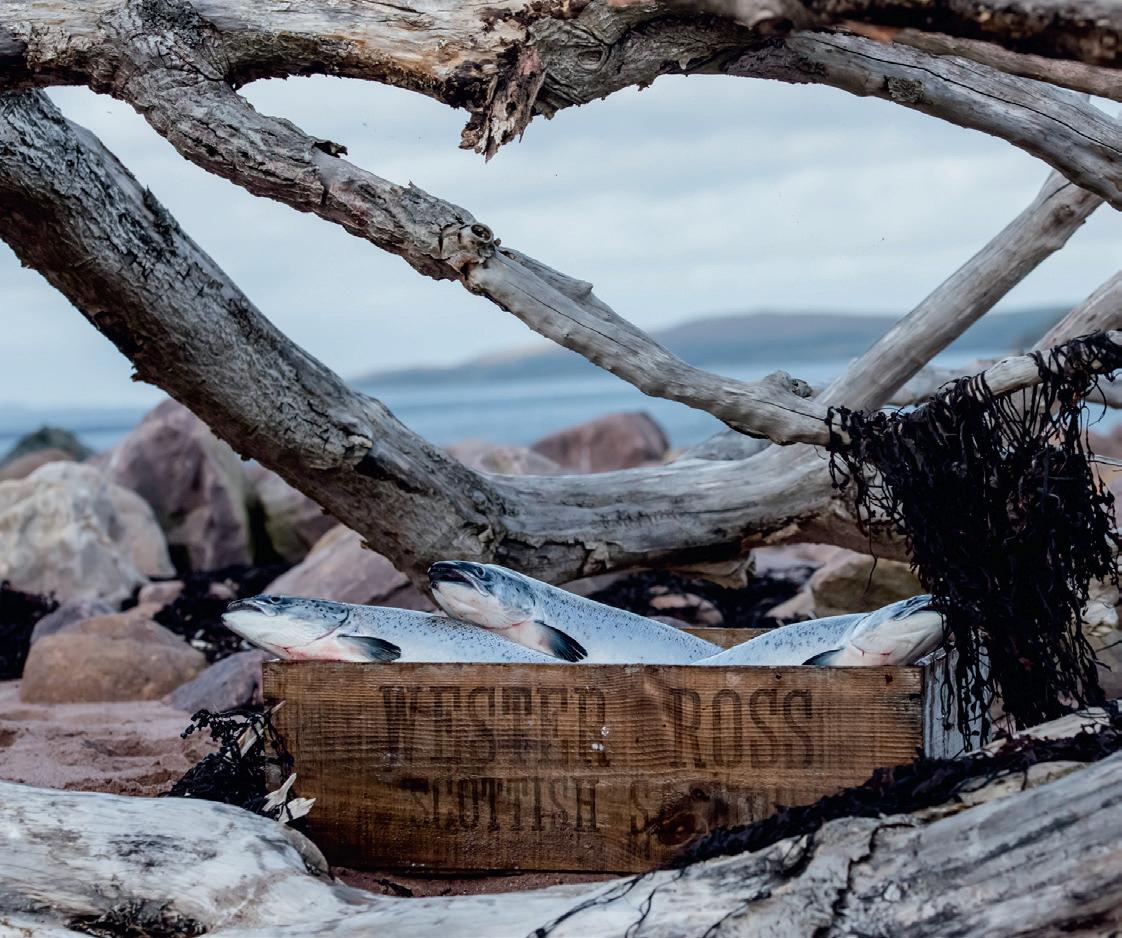



Above
”At the end of the day the fish are what come first
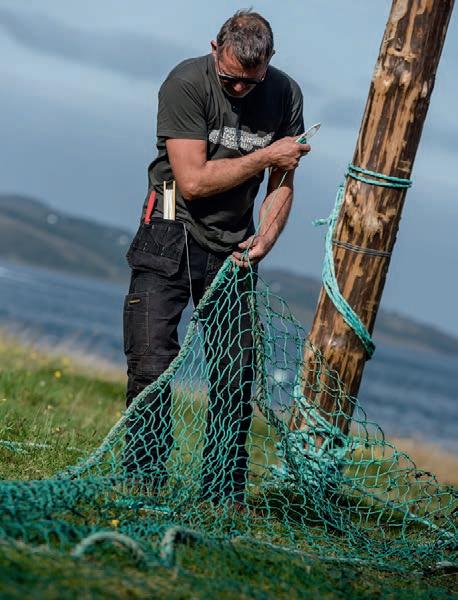
Ross will be able to use the Ardessie broodstock facility when it is completed. Currently the fish are stripped at the Mowi hatchery at Inverpolly.
Another change coming up will be processing – at present Wester Ross salmon are processed at Loch Duart’s facility, but they will soon be handled at the Mowi facility at Blar Mhor, which is currently being expanded and refurbished. Even there, however, the Wester Ross approach will be different, and its fish will go through a dedicated “slow lane” at the Blar Mhor site.
One of the advantages of the

See Fish Farmer’s interview with Connie Pattillo online – just scan the QR code (left) with your smartphone

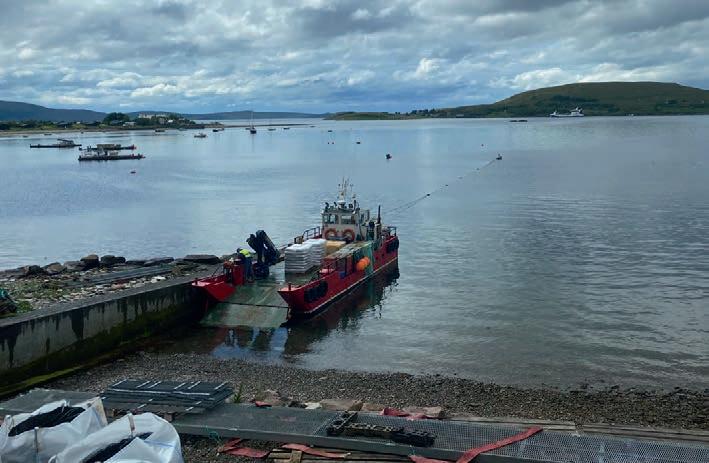
relationship with Mowi is access to a wider international market, so for example Connie Pattillo has been to SENA (Seafood Expo North America) in Boston and will be attending trade events in Japan and Dubai in the near future.
None the less, local ties are just as important. Many of the Wester Ross staff live in or near Ullapool, and the company is able to provide housing for some – an important issue on the west coast.
The company has a strong working relationship with Lochbroom Transport as its main transport provider, and one of the company’s key customers is the Ullapool Smokehouse. In 2022 Mowi took on an established brand with its own way of doing things. So far, the indications are that the Wester Ross philosophy is alive and well.
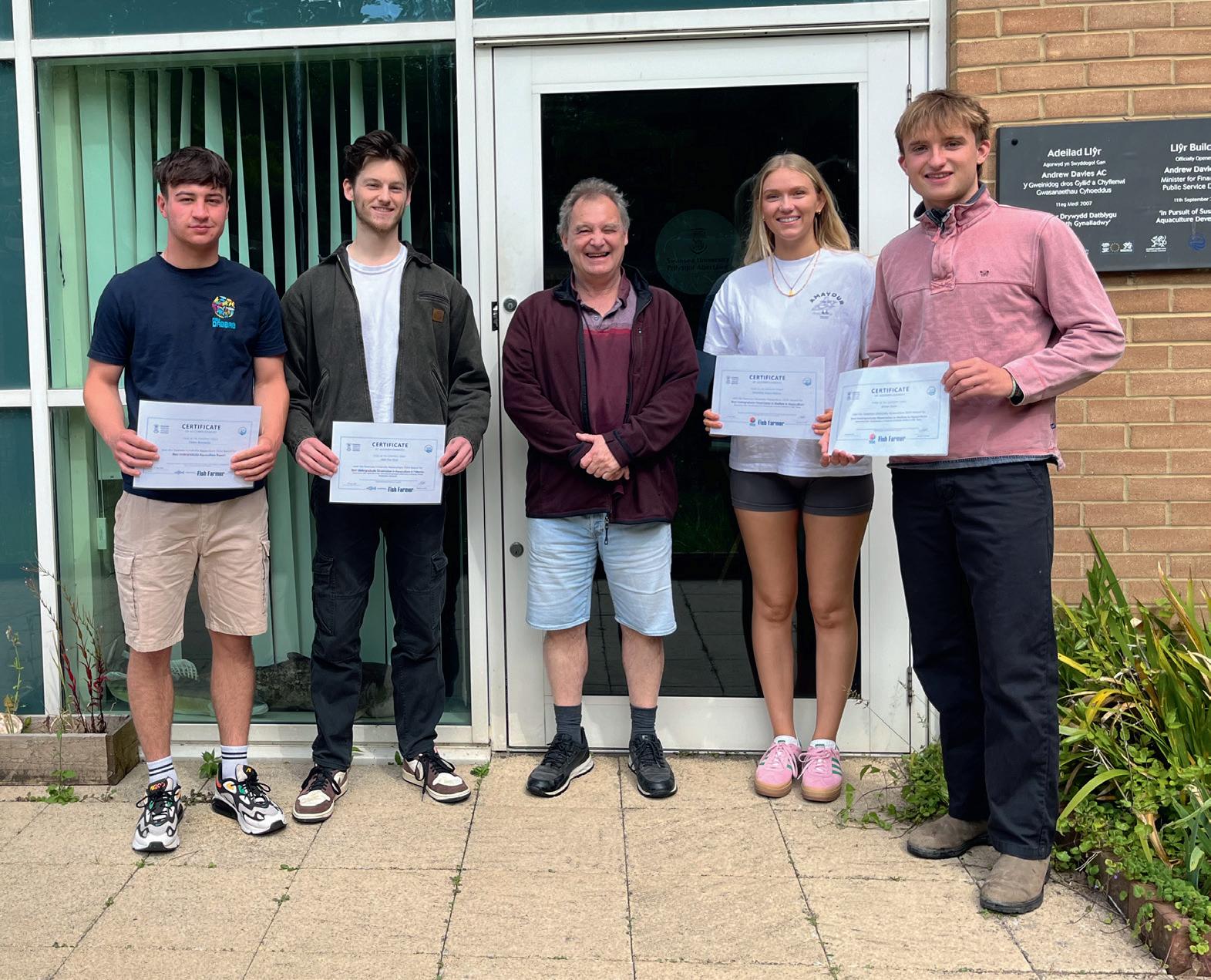
Two prize-winning studies by Swansea University students offer a new perspective on fish and shrimp welfare
CSAR, the Centre for Sustainable Aquatic Research at Swansea University, is one of the UK’s leading centres of academic excellence in its field. This year, three Swansea students have been recognised for their dissertations in the centre’s annual awards.
Charlotte (“Lottie”) Oulton and Oliver (“Ollie”) Duke won a joint award for the Best Welfare in Aquaculture Dissertation, with a study showing how providing a choice of feed can improve welfare for farmed tilapia.
Jack Van Eker was awarded Best Aquaculture Dissertation for his study of farmed shrimp and their temperature preferences.
These two awards were sponsored by Fish Farmer magazine as media sponsor, and the Best Welfare in Aquaculture award was sponsored by animal welfare certification body RSPCA Assured.
Also, Edwin Batchelor’s report comparing the welfare, growth and feed conversion rate of tilapia reared for four weeks with three different feeding systems (on-demand, pulse and continuous) was declared the winner in the Best Aquaculture Practical Report.
Charlotte Oulton & Oliver Duke
Most current welfare measures for farmed fish focus on reducing or eliminating negative impacts on an animal’s wellbeing. However, fish can also access positive experiences that traditional welfare measures ignore.
The premise of the study was that giving fish a choice of food, and when and how much they eat could bring back a feeling of freedom of choice, increasing positive welfare.
Nile tilapia (Oreochromis niloticus) is one of the most farmed fish worldwide, but little is known about its positive welfare needs.
The starting hypothesis was that fish housed in the “choice tanks” would demonstrate better welfare-linked behaviours, such as boldness and curiosity, than fish in the “no-choice” tanks.
This study addressed this knowledge gap by investigating the potential for dietary choice to improve positive welfare of farmed Nile tilapia. Sixty juvenile Nile tilapia were reared in duplicate tanks and fed using on-demand pendulum feeders over a six-week period. The on-
demand feeders allowed the Nile tilapia to dispense food upon contact with the pendulum.
One group had a choice of two different diets in each feeder (dietary choice), while the other groups had the same diet in each feeder (no dietary choice). All diets used had similar nutritional values.
The Nile tilapia’s behaviour (number of aggressive interactions and interactions with the feeders) was recorded over six weeks, and some behavioural welfare metrics (boldness, neophobia and thigmotaxis, that is response to physical contact) were recorded for individual fish at the end of the trial.
Given a choice of diet, Nile tilapia showed evidence of higher levels of boldness, lower anxiety around a novel object and demonstrated less aggression. However, other welfare metrics were not affected by choice.
The findings from this study suggest that dietary choice can alter affective states that might improve fish welfare in an artificial environment, allowing the expression of more natural behaviours. Dietary choice, say Oulton and Duke, can open a promising avenue for introducing measures of positive welfare on farmed fish.
Charlotte (“Lottie”) Oulton said: “The thought of studying something that can improve the lives of animals that don’t have a say as to how they are reared (like fish in aquaculture) really intrigued me and the thought of possibly making a difference to these animals was

appealing. Also, the opportunity to work with someone like Professor Garcia de Leaniz [CSAR Director] and the other professionals within the CSAR facility was exciting.”
She added that rearing the tilapia from fry, and building the rotating metal rig for feeding, were the most enjoyable parts of the project, while the most challenging was working in the lab at a constant temperature of 32C.
Oliver (“Ollie”) Duke commented: “The entirety of this research project was fun, but most elements were challenging, primarily because I had never looked after 120 Nile tilapia before! Aside from the challenges of learning the husbandry behind rearing our Nile tilapia, I also learned how to handle new (and exciting) data and engineer our experiment set-ups. All these things were challenging and fun at the same time.”
He added: “This research makes me want to continue improving my academic skills to conduct better research in relevant fields that need change.”
Emilie Wix, Head of Farming Engagement at RSPCA Assured, said “We are delighted to again support these excellent fish welfare projects undertaken by the students at Swansea University. Farmed fish welfare is an important issue and we hope that by sponsoring awards such as this, we can help to encourage the fish industry specialists of tomorrow to prioritise improving welfare standards.
“We are proud that the RSPCA Assured scheme and the RSPCA higher welfare standards for farmed Atlantic salmon and trout have been a catalyst for change for over the last 20 years, and we look forward to seeing what Lottie and Ollie do next.”
Some like it hot: Assessing temperature preference in white leg shrimp (Litopenaeus vannamei)
Jack Van Eker
Despite the popularity of white leg shrimp (Litopenaeus vannamei) as a farmed species, the paucity of scientific research information regarding its environmental preferences has been detrimental to welfare efforts that would improve the health and well-being of individuals.
This study used a shuttle box to assess temperature preference in L. vannamei, which allows individuals to dynamically regulate temperature – a method that has yet to be used in this species.
The shuttle box comprises two subchambers connected by a passageway that allows an individual to “shuttle” between increasing or decreasing water temperatures without the water mixing. An overhead camera detects the position of the shrimp, and either warmer or cooler water is pumped into the chamber to force
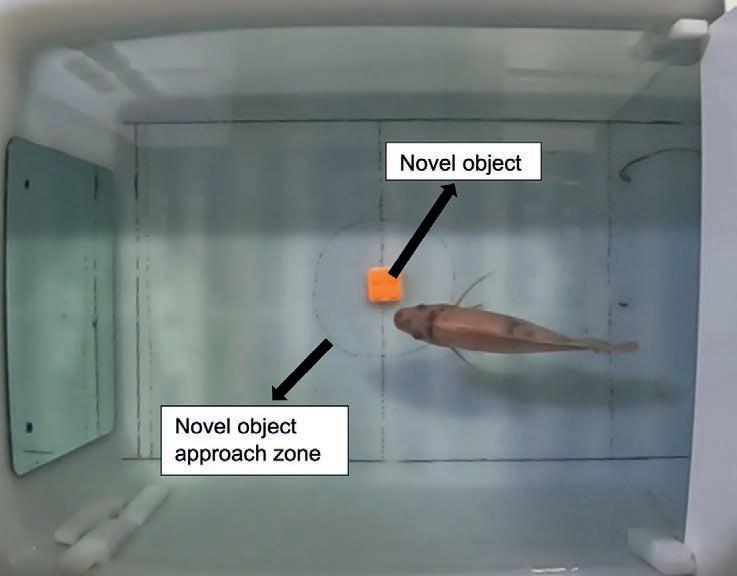


it to make a new choice. The maximum tested temperature was 33°C and the minimum 20°C (based on existing information) and the rate of temperature change was set to +/-2°C per hour.
In total, 30 freshwater post-larvae were monitored individually over 24 hours. They were measured and weighted in resealable plastic bags filled with water to reduce stress, and three thermal values were obtained: preferred temperature, upper avoidance temperature, and lower avoidance temperature.
Results indicated an optimal thermal range for L. vannamei between 29.16°C and 32.83°C (figure 2) with smaller individuals displaying a significant preference for warmer temperatures, and larger individuals showing significantly higher variation.
This is warmer than the lower temperature commonly used in RAS-based shrimp farms (25.5 C). Increasing the current low rearing temperature by 3-4°C should improve welfare by preventing thermal stress, which this study suggests may begin at temperatures below 29 C.
Maintaining temperatures above the lower avoidance threshold of 29C appears to be particularly important for post-larvae below 8g, as they prefer warmer waters, becoming more cold-tolerant as they grow.
Studies like these will help provide valuable insight into the physiological and behavioural responses of L. vannamei to changing environmental conditions and inform welfare guidelines to help facilitate sustainable aquaculture practices.
Jack van Eker commented: “The practical part of the research like problem solving and fixing machinery was fun. The data analysis was probably the most challenging part of the work, namely because of how large the dataset was and how much my laptop hates larger files.”
He added that among the main takeaways from the project were: “The importance of a holistic approach to research; to consider ecology, behavioural changes, and an individual’s preference.”
I had never looked after 120 Nile tilapia before!
from
left:
(Best uaculture rac�cal Report), Jack Van Eker (Best Aquaculture isserta�on rof Carlos Garcia de Leaniz S R irector o e Oulton and Ollie uke Best elfare In Aquaculture isserta�ons oint award ; Shu le bo CSAR shrimp study Top: Tilapia test arena with unfamiliar ob ect Above: White leg shrimp lar ae being measured
Growing shrimp, oysters and seaweed together creates a natural balance, a study by the University of New Hampshire has found
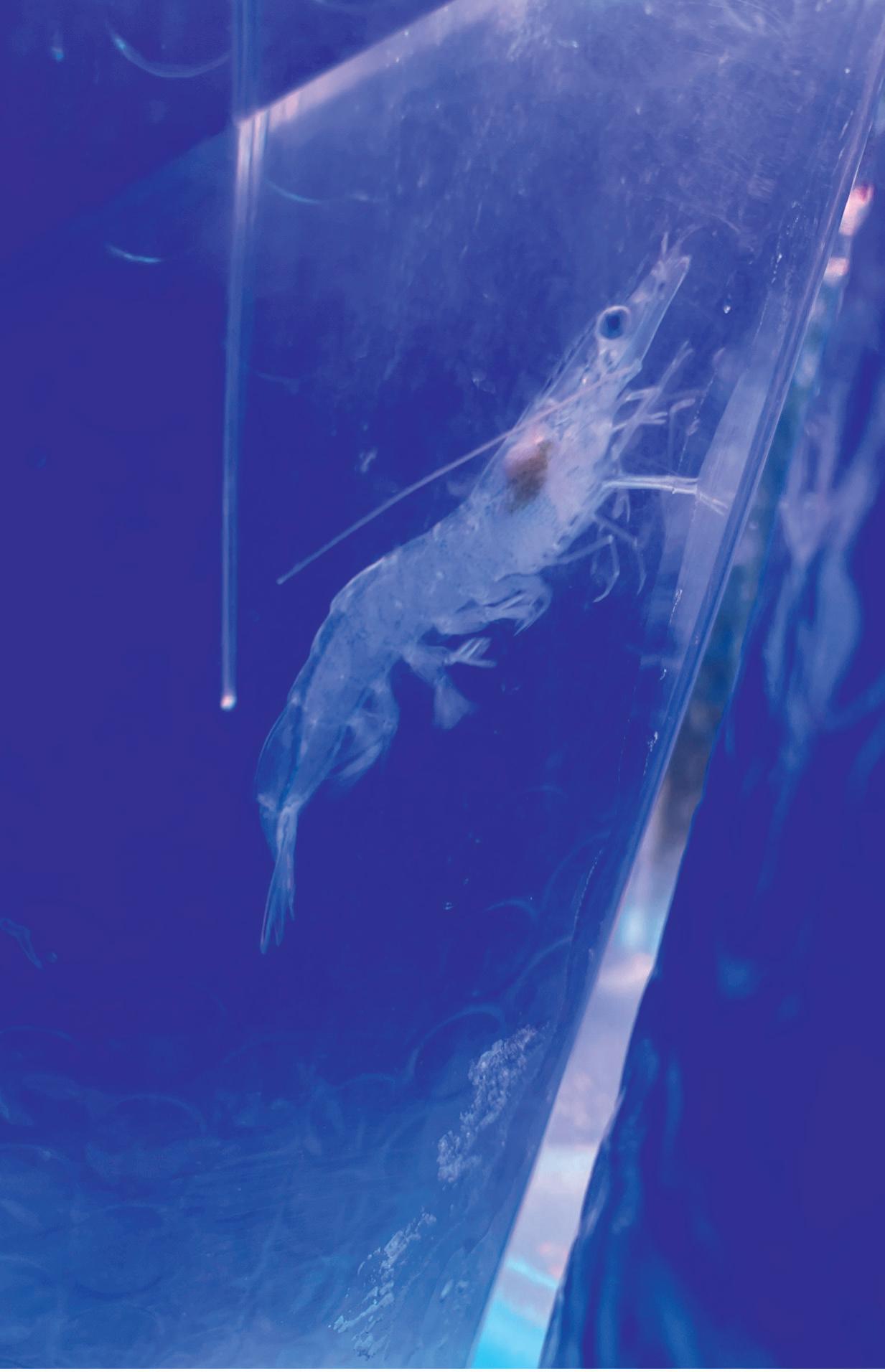
SCIENTISTS with the University of New Hampshire (UNH) College of Life Sciences and Agriculture (COLSA) and the School of Marine Science and Ocean Engineering are studying how integrated multi-trophic aquaculture (IMTA) – systems in which two or more organisms are farmed together – could make shrimp farming more sustainable, as well as potentially support the growth of this industry in the US.
Driven largely by demand in developed countries, shrimp farming has grown rapidly in subtropical and tropical parts of Asia and the Americas. However, shrimp farming also has significant environmental impacts, including increased ammonium levels that cause algal blooms and oxygen-depleted dead zones.
“Much of the shrimp we consume comes from overseas, where they don’t need to follow the same environmental regulations as we do here in the US,” explains Elizabeth (Lizzy) Martin, a graduate student in the marine biology programme at COLSA. “And shrimp is also one of the highest valued seafood imports for the US, so developing a local industry would help reduce reliance on these overseas markets.”
As part of her research, Martin is studying IMTA systems that pair farmed shrimp (Pacific white leg shrimp, L.vannamei) with
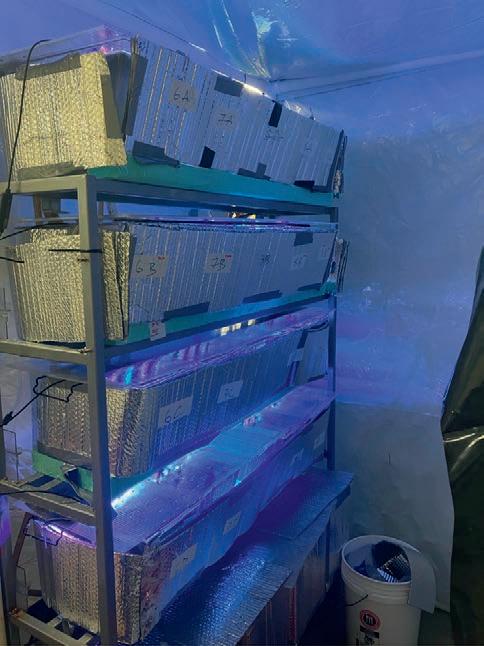

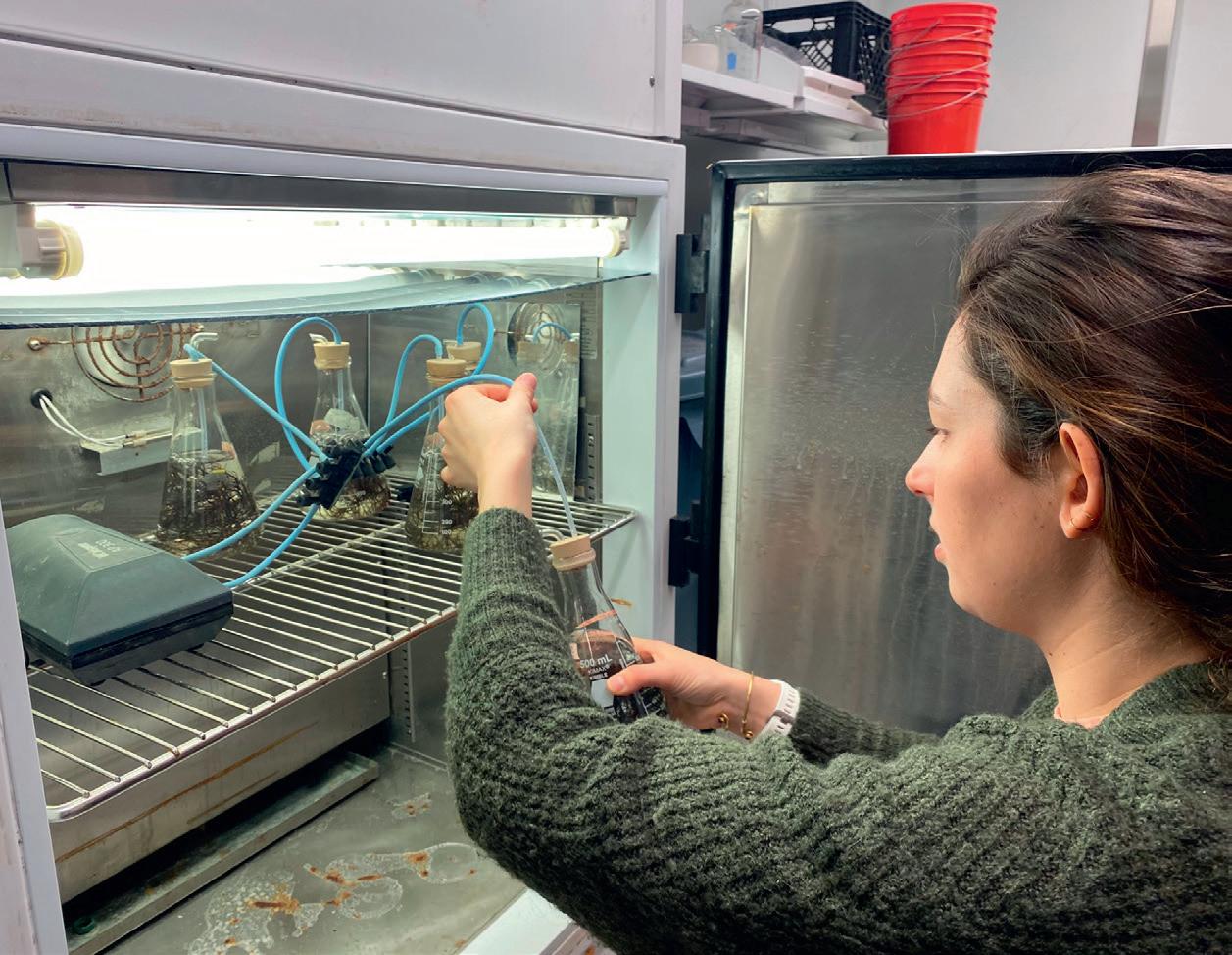

water-filtering species, like oysters, to determine if the grouping will cut down on the amount of ammonia – a form of nitrogen – and phosphorus that remain in the water as part of the farming process. Shrimp produce ammonia naturally.
Additionally, other ammonia contributors include shrimp feed, which is often high in nitrogen, and the natural decomposition of the shrimp feed, dead organisms, faeces and other materials found within the large artificial ponds that shrimp are commonly raised in. This “pond” water is then discharged into the surrounding environment, resulting in the affluent entering waterways and, in the US, potentially violating regulations like the US Environmental Protection Agency’s Clean Water Act.
Shrimp could be grown inside a barn, greenhouse or even a basement ”
In natural environments, water-filtering species, like shellfish, help clean the water of the excess nutrients. Martin tested to see whether a similar method could be used in more of a closed farming system, in which native oysters and non-native red seaweed could grow alongside Pacific white shrimp, offering the dual advantage of cleaning the water and providing an additional income source to aquaculturists (fish farmers).
“We had three treatments — shrimp with the seaweed, shrimp with the seaweed and an oxygenator and shrimp with the seaweed and oysters,” says Martin, who conducted her experiment at the UNH Coastal Marine Lab in New Castle, New Hampshire. “And what we found was that the final treatment, the shrimp with the seaweed, which absorbs and stores nitrogen, and the oysters resulted in a reduced level of nitrogen (including ammonia, nitrite and nitrate) over time.”
What Martin found was that the oysters help control the production of nitrogen better, resulting in significantly lower amounts over a 30-day window when compared to the other two treatments. This method not only has the potential to grow shrimp sustainably but also offers additional benefits, such as producing marketable products like seaweed and oysters. These products can diversify the revenue streams for aquaculture farms while contributing positively to the environment.
In this case the seaweed concerned was Gracilaria, a type of red algae also known as Irish moss. Gracilaria’s commercial uses include as a culinary ingredient – in Japan it is known as ogonori –as well as a feed source for aquarium-kept fish and an ingredient for making agar.
And while the implementation of such systems faces challenges, including regulatory issues and environmental concerns unique to the US, compared to traditional shrimp farming practices in Asia, the study provides a pathway for more sustainable practices that could be adopted widely, including in New England where UNH is based.
The School of Marine Science and Ocean Engineering (SMSOE) is the University of New Hampshire’s first interdisciplinary school, designed to address today’s highly complex ocean and coastal challenges through integrated graduate education, research and engagement. As such, it serves as an interdisciplinary nexus for marine science and ocean engineering teaching and research across the university.
“Lizzy’s research is significant as it demonstrates a novel IMTA approach to culture shrimp in a closed recirculating aquaculture system,” says Michael Chambers, Research Associate Professor with the UNH School of Marine Science and Ocean Engineering and Martin’s graduate advisor. “In this manner, shrimp could be grown inside a barn, greenhouse or even a basement to provide fresh seafood to local restaurants at a premium price.”
He adds: “The study was aimed mostly for shrimp recirculating systems but it could definitely be used in a pond.”
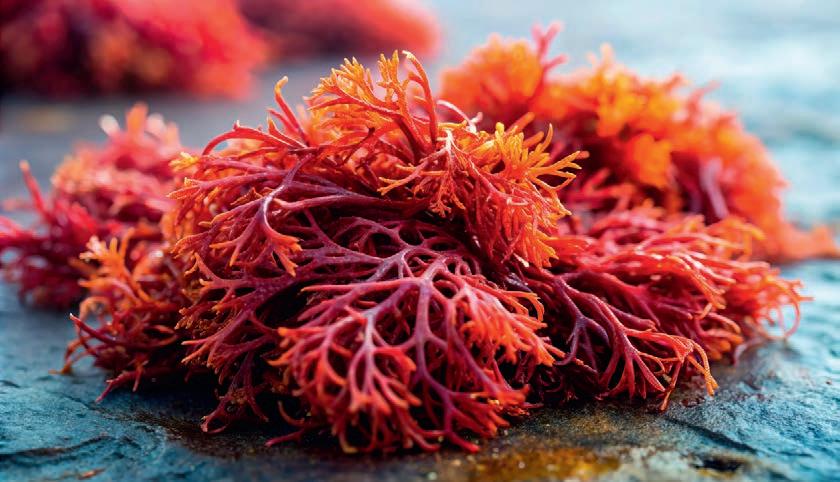
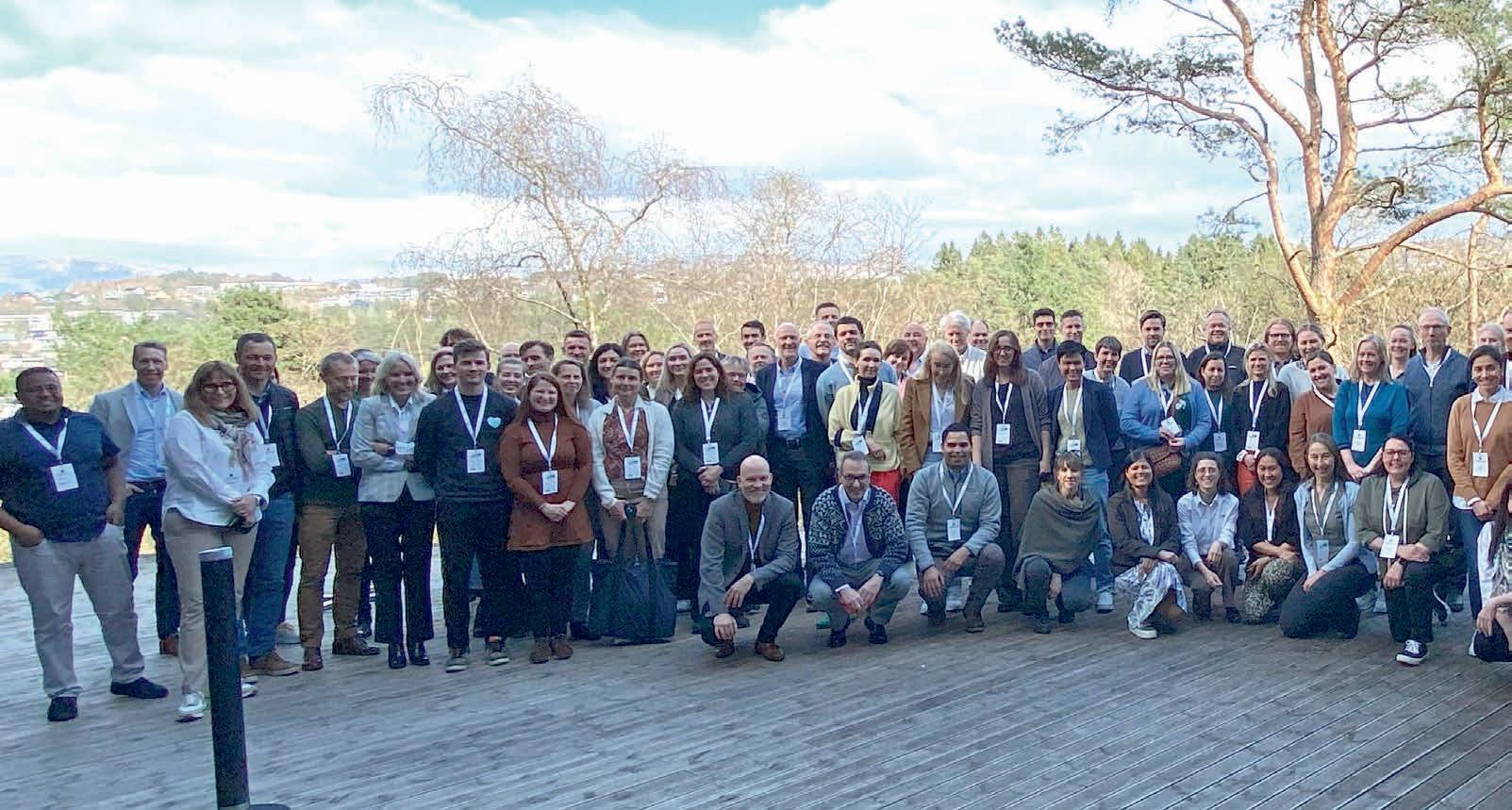

The TriNations initiative brings together industry and academic experts to share the latest updates on farmed fish health. Chris Mitchell reports on latest TriNations event, held earlier this year in Bergen
FOR a diminishing number of TriNations veterans, the opportunity to revisit Bergen for this meeting was tinged with mixed memories as the intervention of the Eyjafjallajökull volcano in the 2000 meeting made the journey home a lot more interesting than the journey out! There were no such challenges, though, for the approximately 120 delegates in March of this year who gathered for the 19th TriNations meeting.
The summaries from each territory started with Norway where, in terms of significance to industry, pancreas disease (PD) has recently been knocked into second place by cardiomyopathy syndrome (CMS), not
because of any change in the status of the latter but through a significant diminution of the former, particularly in mid-Norway. The reduction from 158 cases in 2020 to just 58 in 2023 has been largely attributed to good cooperation between industry and the Food Safety Authority
In contrast, Ireland has seen an elevation in mortalities attributed to PD, whilst recognising that often the distinction
between “died with” and “died from” can be a tricky call.
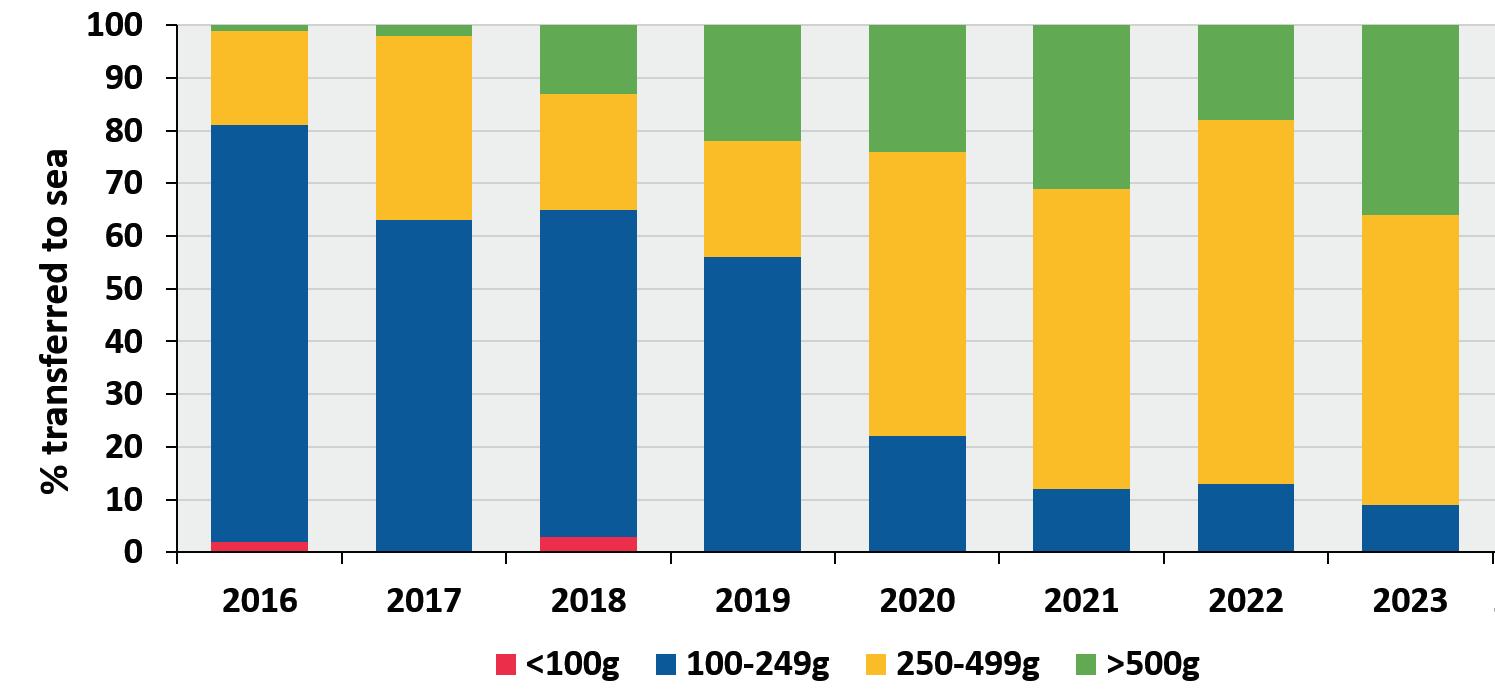
Meanwhile in the Faroes, salmon alpha virus (SAV) remains absent whilst CMS continues to be associated with mortality, particularly following thermal treatments for sea lice. For this reason, the rather high numbers of mortalities associated with “handling” are likely inflated by the presence of this virus. That said, the lowest number reported in the last six years was, encouragingly, in 2023. This might in some ways be related to the decision across those islands to gradually increase the transfer weight of smolt going to sea, reducing the time they spend there and, by extension, the

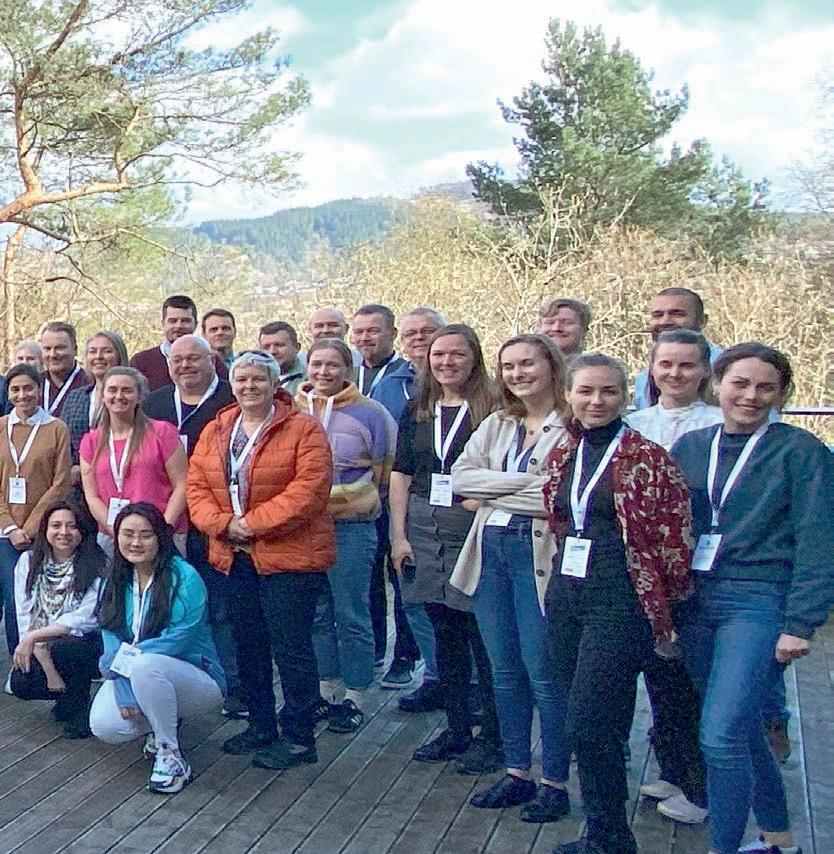
number of handling events which they undergo.
Whilst piscine orthoreovirus (PRV) remains ubiquitous across the territories, there is some concern in the Faroes that it is becoming clinically more problematic, with a view expressed that this might be due to a change in virulence of PRV 1, the culprit strain.
Key challenges






A drill-down into “experiences in industry” revealed two themes that keep health practitioners up at night; the impact of environmental challenges on fish infected with SAV and the impact of CMS on its own. In respect of the latter, Ralph Bickerdike of Scottish Sea Farms drew attention to the global climate cycle, of which El Niño is a part, as influencing mortality levels on farms. This part of the cycle saw sea temperatures in the winter following the warm summer of 2022 never really return to their seasonal norms and it was against this background that CMS contributed significantly to the 10% of mortality attributed to viremias, often at the valuable end of the production cycle. Meanwhile, Kim McKinnell from Bakkafrost Scotland detailed how infection with SAV can seriously exacerbate the negative outcomes which often accrue from seasonal influxes of jellyfish. A relatively low burden of jellyfish impacting salmon infected with SAV at one site resulted in a significantly greater mortality than at another site with a lot more jellyfish, but no PD. Kim uses
THE TriNations initiative was established in 2005 with the aim to integrate and focus the activities of academia and industry from Norway, Ireland, Scotland and more recently other salmon farming regions with regard to fish health. This industry-led initiative has made major contributions to developing a fuller understanding of PD and related conditions by encouraging new and collaborative research and sharing of results in a transparent manner. Greater knowledge of the risks associated with the development and spread of the disease as well as an understanding of the viral characteristics have helped shape strategies for disease prevention and mitigation for the benefit of the salmon farming industry.
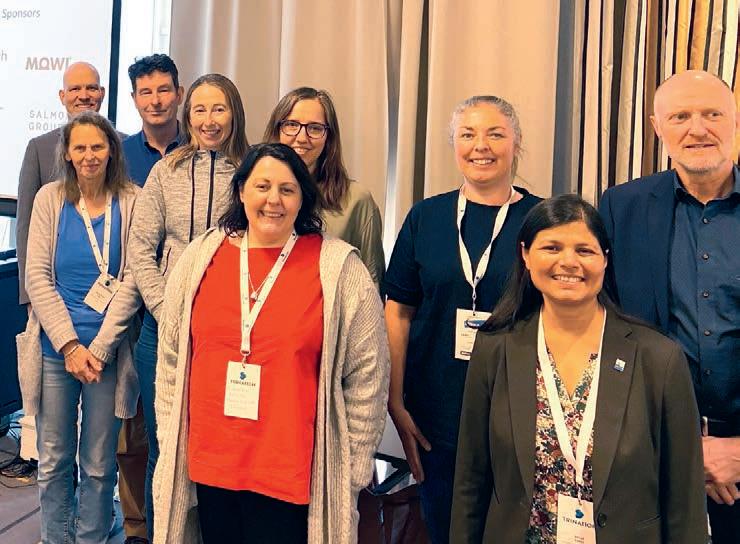

biomarkers as real-time trackers for the impact of both environmental insults and viral ones with so-called “lead” (warning of) and “lag” (responding to) indicators for prognosis mapping.
Whilst not a new technology per se, the use of biomarkers in fish health generally, and PD in particular, is gaining traction in the biologist’s toolbox. PatoGen is
eterinary uthority and Runi am R
This page from top: Faroes fish farm; The Steering ommi ee and Reference roup; Bergen
There is some concern in the Faroes that PRV is becoming clinically more problematic
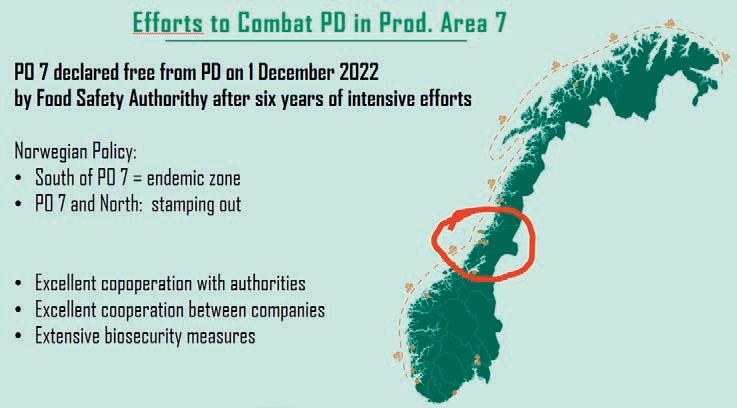
developing a prognostic tool based on up to seven different biomarkers for tracking myopathies in affected fish. By comparing biomarker levels with heart pathology in fish infected with SAV 2, they hope that blood testing can be a diagnostic tool that does not require individual fish to be sacrificed for the benefit of their peers.
WellFish Tech too are keen to promote the use of clinical chemistry, not so much in a diagnostic context but rather as a monitor of general health over the production cycle. By comparing biomarker levels within the context of each other, and using AI to mine the data, patterns have emerged which indicate defined “health panels” of which at least one is used to track SAV from infection to clinical disease and recovery.
Combating the impact, and preventing the spread, of the viruses of TriNations interest revealed new progress from both perspectives. Skretting has a new functional feed based on enrichment with EHA and DPA (the two main types of longchain omega-3 fatty acids). With these additives, fish with CMS appeared to exhibit some level of mitigation, reinforcing the association between dietary factors, viral load and overall fish health.
Norway’s success over the past years in bringing down levels of PD, is well illustrated in Production Area 7 where, by splitting the area into smaller zones of cooperation, joint fallowing has naturally followed, and no PD has been identified since 2020 even when infection was introduced into the neighbouring area, Production Area 8 in 2023, most probably through three well boat operations. The situation was quickly contained before it could spread to Area 7.
The impact of synchronized fallowing has been demonstrated using variants PRV1 as the tag virus. Genetic mapping of these demonstrated that fallowing prevented transmission between sites and that any horizontal dissemination of the virus (after an introduction) was anthropogenic rather than current mediated. The obvious mitigation suggested is, therefore, improved biosecurity.





areas where it occurs. By mapping PMCV lineages, its occurrence in different geographies can be both explained and mapped, important for exploring likely vectors as well as developing effective biosecurity mitigation.
In the Faroe Islands, this genomic approach has led to the discovery that these islands are not subject to continuous reintroduction of PMCV. Instead, there exists a monophyletic cluster originating from farmed salmon which is distinct from PMCV found locally in wild salmon. Perhaps disappointingly, no correlation emerged in this study between recorded cases of CMS and potential virulence markers.

For sites that are hydrodynamically connected, the degree of water contact between them is largely determined by wind, according to the marine intelligence and forecasting company Oceanbox, which has developed a new tool to measure this. However, because wind patterns rarely follow an annual cycle, the predictive capability will require further refinement.
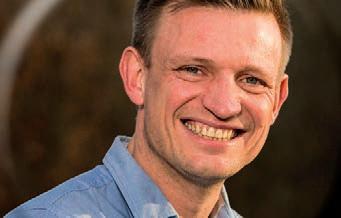

Virulence in any viral infection requires the pathogen to successfully replicate in the host, which is normally pathogenic. The mechanism by which PMCV does this remains something of a mystery. The virus is a member of the Totiviridae, a large group of viruses which mostly affect unicellular organisms and are propagated by those organisms undergoing cell division. The virus cannot itself achieve cellular entry by virtue of lacking a capsid component
Advances in molecular biology within the lifetime of the TriNations have been transformative with the continuous development of new epidemiological, diagnostic and prognostic applications.
An improved understanding of the piscine myocarditis virus (PMCV) genome is not only important for advancing the development of molecular vaccines to this virus but is also an enabler for detailed epidemiological tracking in the farming
Advances in molecular biology... have been transformative
necessary to achieve this. That said, some totiviruses can infect certain arthropods (shrimps and mosquitoes) because they possess special fibre protrusions that facilitate entry. This is not a feature of PMCV, which is more closely related to the protozoan infecting totiviruses than the arthropod infecting ones. Salmon, clearly, are not protozoans!
Over the last decade totiviruses have increasingly, been described in a number of multicellular organisms. All of these viruses carry additional coding capacity for peptides that are functionally necessary for infection of these more advanced hosts. This may well explain how the PMCV totivirus can infect salmon, with others now described in lumpfish, golden shiner, common carp and sea bass. One protein, apparently “not found anywhere else in biology” has been identified in PMCV and, excitingly, small variations in this might serve to explain why the outcome of infection by it can be so variable.
As reported at the TriNations in Edinburgh, it has become quite clear that PMCV displays significant transcription activity within the spongiosum of the heart, a candidate cause in the resulting cardiac failure. In experimental infections, it has been shown that levels of virus replication are both dose, and tissue, dependent. The ventricle of the heart appears to be particularly sensitive in its response to viral replication whilst the head kidney might actually be the preferred site.
One important impact of virulence (that is CMS induced by PMCV infection) was, not surprisingly, found to affect cardiac function. Prior to assessing this effect, some baseline cardiology parameters were established in fish living a “simulated farmed life” (SIMFARM) and fish living a “simulated wild life” (SIMNAT). Fish in the former group underwent cardiac hypertrophic remodelling at smoltification meaning that the heart tissue needed to adapt to a greater workload when compared to the SIMNAT group. It was suggested that intense rearing protocols, particularly at raised temperatures, seemed to accelerate age-related cardiac impairment.
Whilst this is, of course, itself concerning, the authors of this work went on to measure and describe the impact of PMCV infection on these compromised hearts. The hearts of infected fish, it seems, work harder to maintain stroke volume and cardiac output than the hearts of non-infected fish. Compromised hearts will struggle to adapt and, during stressful events, the increase in blood pressure within a weakened heart can lethally rupture the atrium. Given that the weakness can be a function of production practices in the freshwater phase, hearts which have developed properly in the early part of the cycle could be at a significant advantage in the latter, effectively equipping fish to deal with a potentially serious challenge later in their life.
Whilst never a headliner at TriNations meetings, PRV is of course always mentioned and usually with some new insights. Since 2017 it has been associated with severe disease
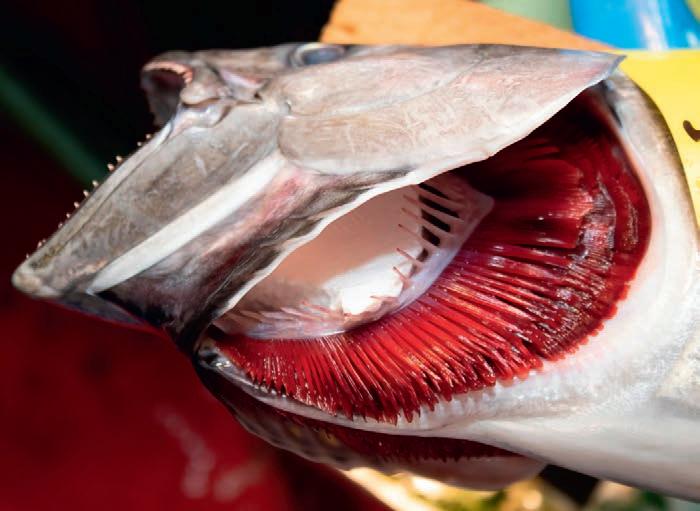
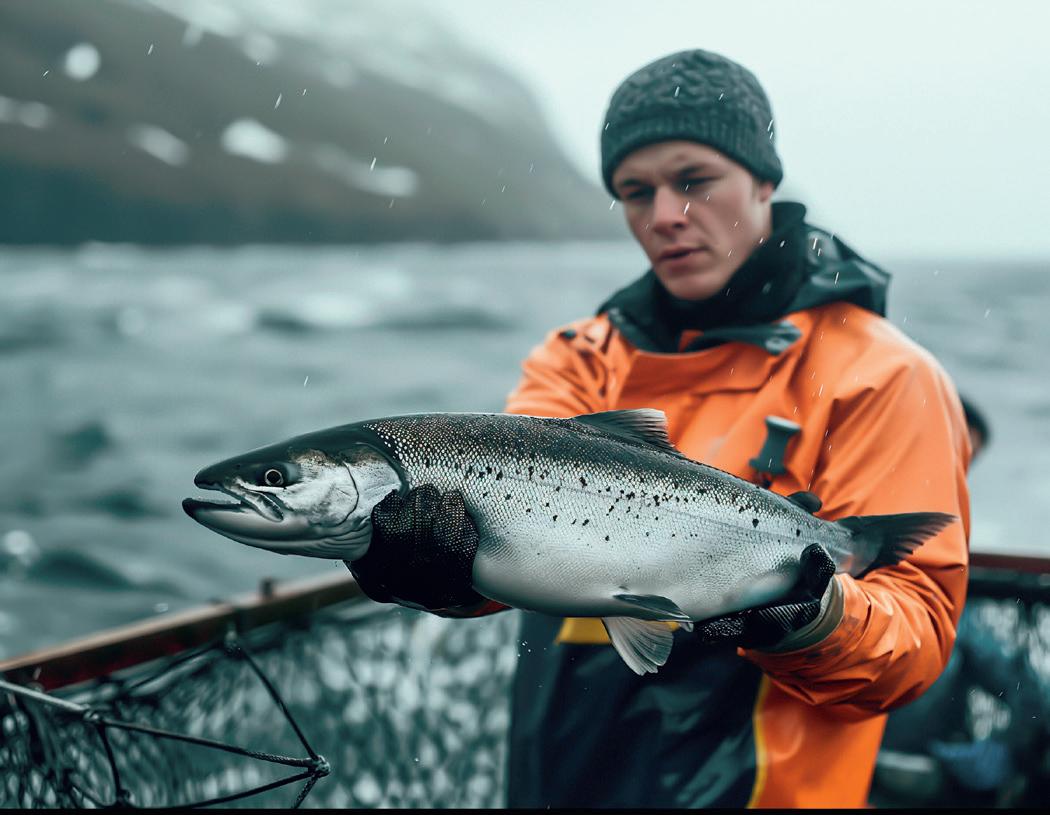



outbreaks in Danish freshwater (trout) RAS aquaculture. Its precise impact though has been rather illusive given that qPCR examination of water and fish tissues often reveal different pathogen profiles in each with PRV 3 in fish, and pathogenic bacteria in water. The take home message here being, the two don’t correlate so perhaps best to monitor both!
PRV 3 is, as mentioned above, predominantly associated with complex disease cases in rainbow trout. A cohabitation challenge study, however, has recently shown that brown trout (Salmo trutta) can not only acquire PRV 3, but also facilitate replication of the virus, and exhibit cardiac lesions similar to those seen in Atlantic salmon diagnosed with heart and skeletal muscle inflammation (HSMI) resulting from infection with PRV 1. Given that a brown trout’s lineage is closer to an Atlantic salmon than to a rainbow trout, this outcome is perhaps surprising and possibly significant for the management of live fish movements.
The variations in susceptibility between salmonid species when infected with either of the PRV strains may also assist in the development of vaccines and other protective measures. For example, whilst PRV 3 infection does not cause disease in Atlantic salmon, it does appear capable of blocking infection with the pathogenic strain, PRV 1. Additionally, there is evidence that it elicits some cross-protection in the host fish.
Protection is arguably the most powerful tool in the disease-mitigation box, and this is normally achieved through vaccination. Elanco presented some compelling evidence supporting the accelerating success of its DNA vaccine specifically within the context of challenge with SAV 2 which remains problematic in Mid Norway.
Meanwhile, an innovative approach to the development and production of DNA vaccines going forward would see traditional plasmid production through fermentation being replaced by an enzymatic platform. Touchlight Aquaculture has a proprietary technology, “Doggybone DNA” (dbDNA™) which the company intends to introduce to produce vaccines against the three most important cardiomyopathies in salmon farming: PD, HSMI and CMS.
Touchlight claims that vaccine “take”, as measured by the production of neutralising antibodies, is greater in fish vaccinated with “doggybone”-derived constructs when compared to those from the traditional platform… a space worth watching!
The PD TriNations meeting continues, I believe effectively, to bring the world of cutting-edge research into salmonid viral myopathies to the pen side. It is vital that this unique forum remains the place where lab meets farm in a way that makes the work of the former accessible to later, and the issues facing the latter, on the radar of the former!
Warmer seas could mean rethinking the kind of fish we farm. Lynne Falconer reports on a new study on the implications of climate change for aquaculture
SPECIES diversification is often suggested as a potential climate adaptation option for the aquaculture sector. However, identifying suitable candidate species for aquaculture is complicated as there are many different factors that will influence the feasibility of production and commercial success. One of the deciding factors is whether the environmental conditions in a potential farming location will meet the requirements of a species, and species diversification strategies need to consider how environmental conditions at farming locations may change in the future.
Our new article, Diversification of marine aquaculture in Norway under climate change, published in Aquaculture, was a collaboration between researchers from the University of Stirling, Nofima, Akvaplan-niva, NIVA, Institute of Marine Research (IMR), Bjerknes Centre for Climate Research, and the Hellenic Centre for Marine Research (HCMR).
In this study, we looked at how changing sea temperatures between 2020 and 2100 may affect marine aquaculture species diversification in Norway. The study focused on sea-based production, and we used climate model projections of future sea temperatures under three climate scenarios (low emissions, intermediate emissions, high emissions) for 12 farm locations (three farms each in four areas of Norway: South, West, North, Arctic)
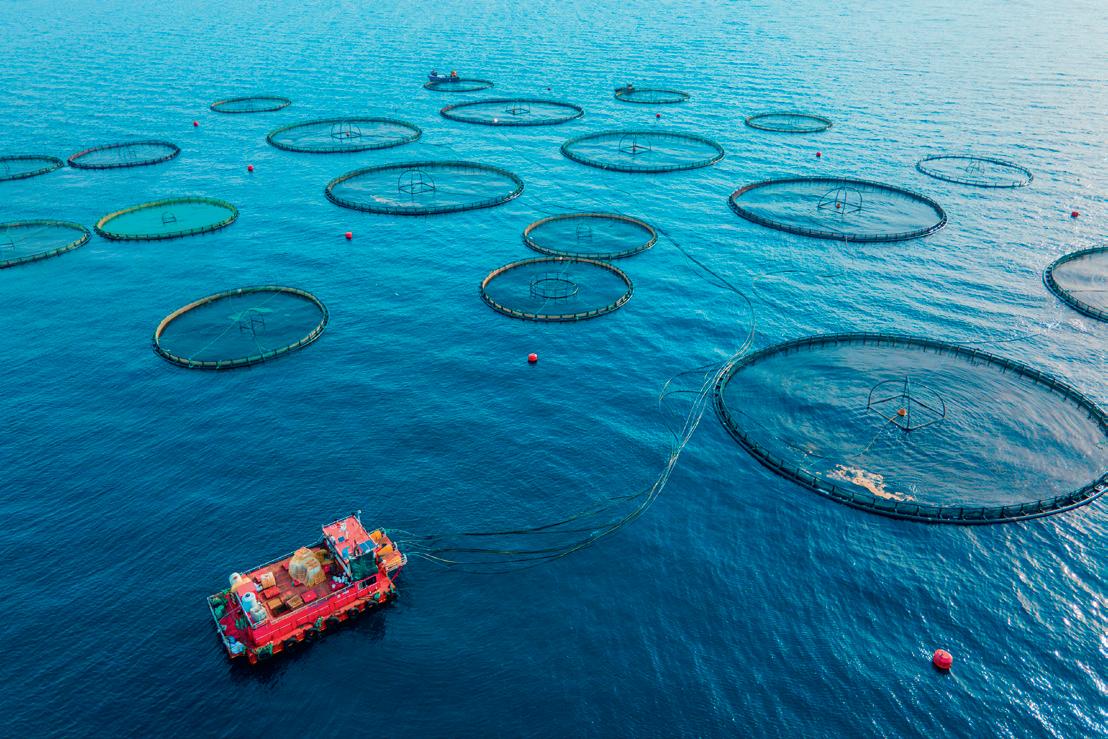



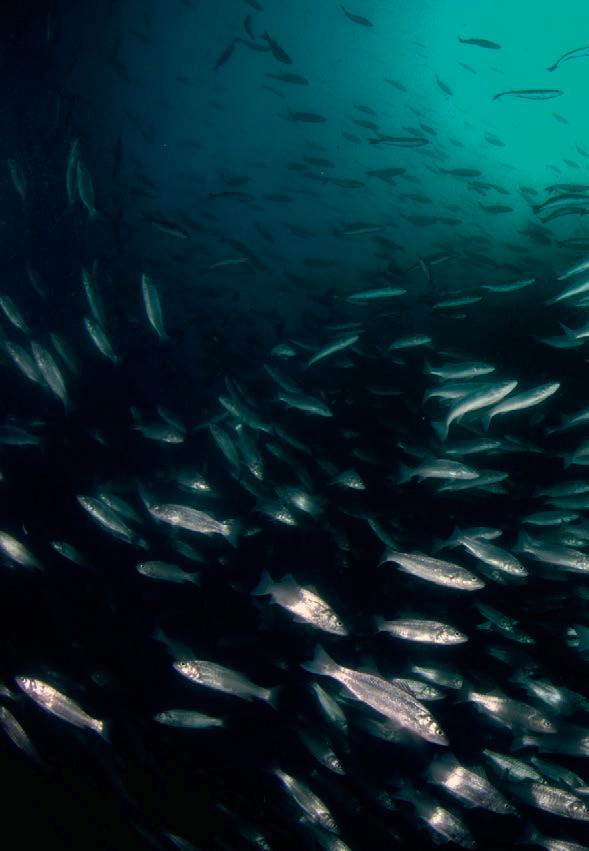

This page from top: European sea bass will con�nue to be happier in the editerranean than in the north tlan�c; ohn ory; fish farm
Opposite from top: Snow crab; itch ounder; Spo ed wolf fish
and then evaluated the temperatures for 34 species (17 fish species, six bivalves, five crustaceans, three seaweeds, two echinoderms and one tunicate).
For each farming location, we classified the daily temperatures using a Challenging Conditions Index (CCI), based on known temperature tolerances for the 34 individual species. If the daily temperature was higher or lower than a threshold for that species, then it was considered challenging. Challenging conditions are an indication that there may be adverse impacts, for example reduced growth or lower survivability. In some cases, depending on
Any species selected for aquaculture must be able to tolerate a range of temperature conditions

the knowledge and resources available for the species, it may be possible to address the challenging conditions with interventions such as changes in farm management practices, new feeding strategies or different technology.
On the other hand, if appropriate interventions would not be possible and there would be unacceptable impacts on species’ health and farm production, then the challenging conditions will be a limiting factor for a species. In the article we also discuss the difficulties of determining and using thresholds, and the need for more studies and data, especially in the case of multiple stressors and combined effects (eg, temperature and a health challenge). For all aquaculture species, whether new or established, more work is required to understand species-specific tolerances to changing conditions and multiple stressors. The model projections suggest that temperature changes will not be constant over time, so any species selected for aquaculture must be able to tolerate a range of temperature conditions, and species with narrower tolerance ranges may
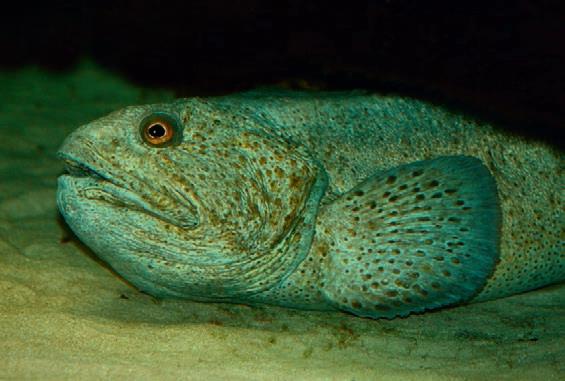

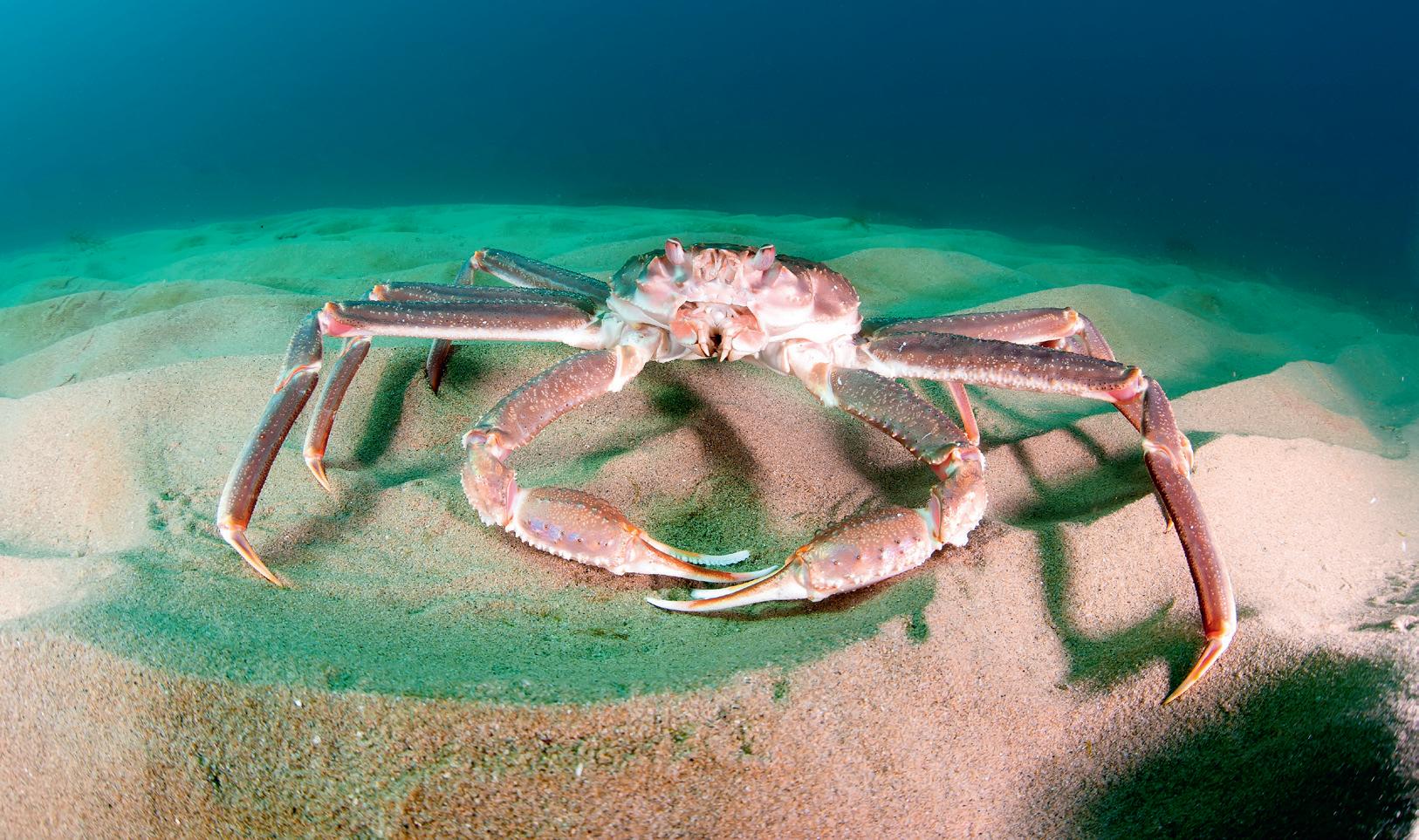
be more difficult to farm. Differences in the projected temperatures between the climate scenarios are more noticeable in the second half of the century.
Unsurprisingly, for species that prefer cold water, like witch flounder, spotted wolf-fish and snow crab, hot challenging days affected a higher proportion of the year in the South compared to the Arctic. For those warm-water species more commonly farmed in the Mediterranean (eg, European sea bass, gilthead seabream), the results suggest that cold temperatures would still be challenging for sea-based production for the rest of the century. For some species there would be both hot and cold challenging days depending on the time of year, and these would need different intervention strategies to adapt to.

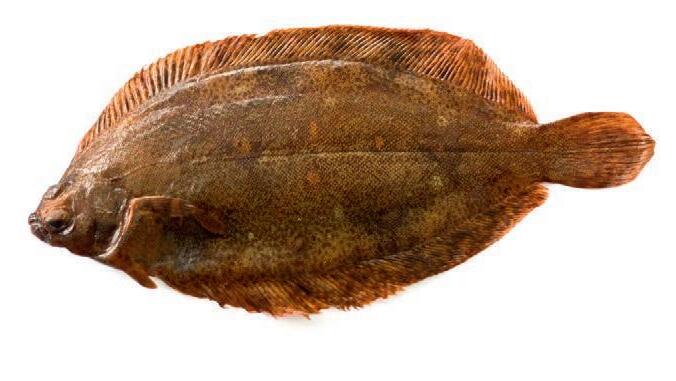
It is not possible to suggest the “best suited” species based on this work alone, but the findings can contribute to discussions on species diversification and climate adaptation strategies within the aquaculture sector.
Establishing a new commercial aquaculture species takes time, effort, knowledge and resources. As a way of evaluating the aquaculture status of a species, the study introduced the Aquaculture Readiness Levels (ARL®). The ARL® comprise of 10 levels (Research 1-3, Development 4-6, Commercialisation 7 -9, Adaptation 10). Species such as John Dory and monkfish have low ARL® as these are not cultured at present and most of the knowledge on these species is from wild observations or fisheries studies. Even if conditions are suitable for these species, commercial aquaculture production could still be decades away and there may be other bottlenecks or limitations (eg, breeding, husbandry, nutrition).
In contrast, rainbow trout and Atlantic cod have a higher ARL® as these species are already farmed commercially. At higher ARL® levels there is more knowledge of that species and farming requirements but there will still be uncertainties about effects of climate change. All species should be
aiming for ARL® 10, where climate action is embedded within production strategies. Climate action-oriented aquaculture is production that integrates adaptation practices and mitigation efforts that reduce greenhouse gas emissions. As conditions change, the level of knowledge and resources must be continually reviewed and enhanced to improve adaptive capacity across all parts of the aquaculture sector. Although we focused on Norway, the study has relevance to other countries interested in species diversification. Species diversification takes time, effort and resources, and a range of stakeholders must also be involved in the decisions. Across the entire global aquaculture sector, industry, researchers, and policymakers must work together to ensure the necessary knowledge, experience and resources are available to support established and new species under climate change.
This work was funded by the UK Research and Innovation Future Leaders Fellowship (MR/V021613/1), the Norwegian Research Council (No 194050, Insight), and ArcticHub (European Union Horizon 2020 research and innovation programme under grant agreement No 869580).
The research article was published in Aquaculture (www.sciencedirect.com/ journal/aquaculture) .
Diversification of marine aquaculture in Norway under climate change. Aquaculture, 593: 741350 2024. (Falconer, L, Sparboe, L O, Dale, T, Hjøllo, S S, Stavrakidis-Zachou, O, Bergh, Ø, James, P, Papandroulakis, N, Puvanendran, V, Siikavuopio, S I, Hansen, Ø J & Ytteborg, E.
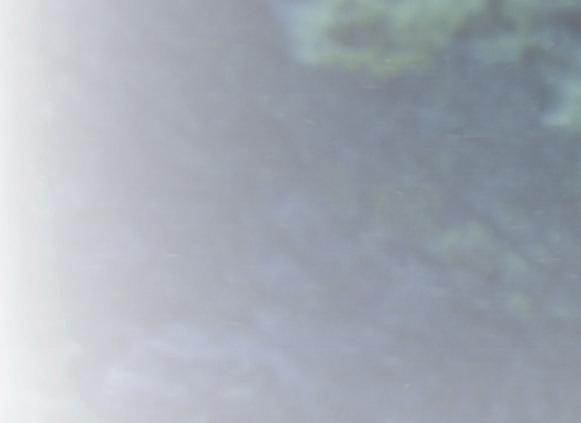


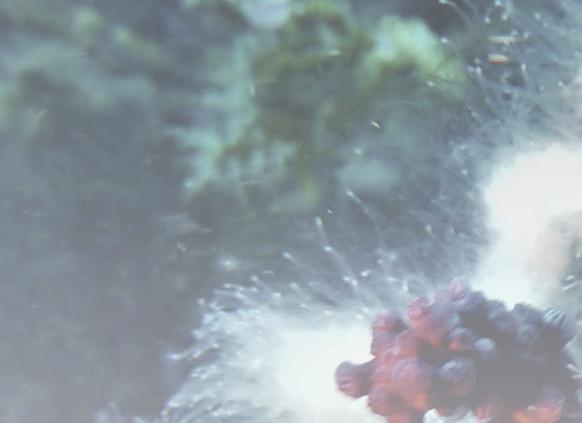
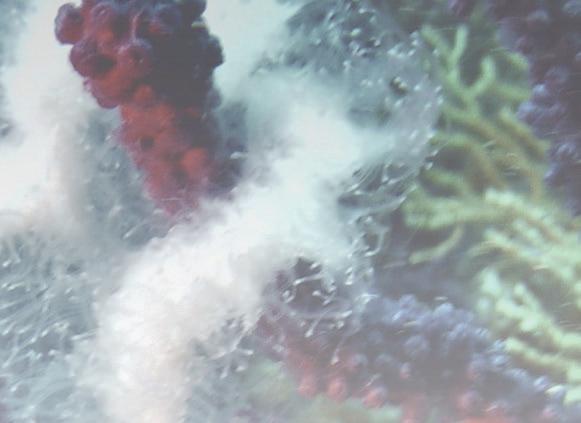



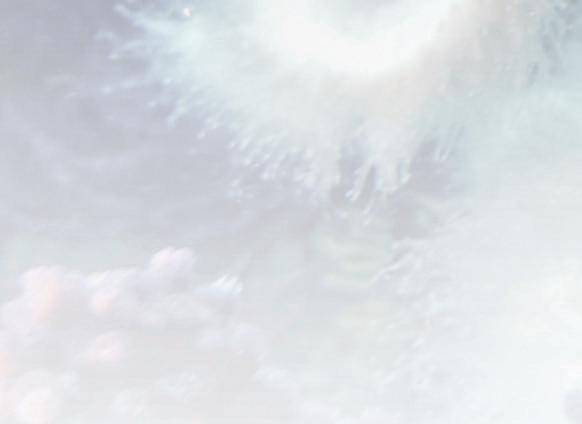
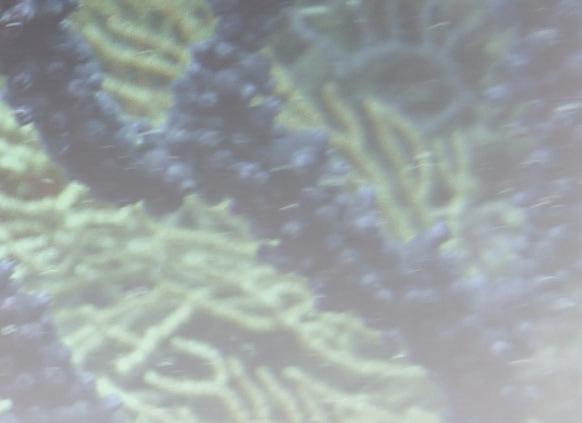
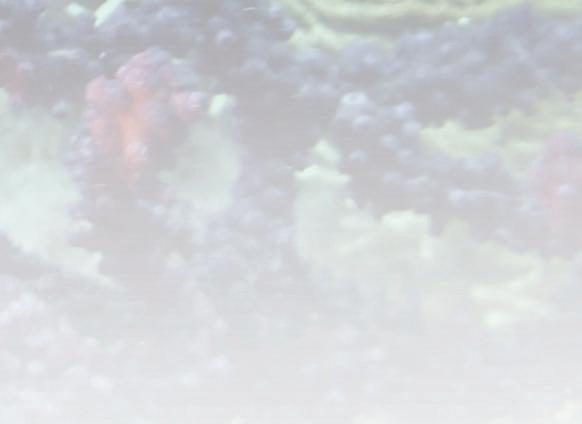


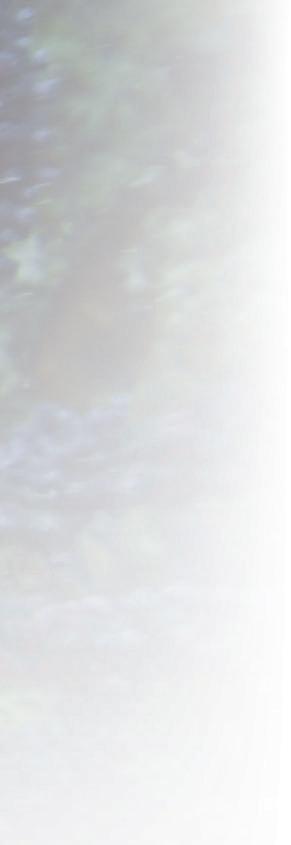




ATwo projects are looking to unravel the secrets of the string jellyfish, as Vince
S children visiting the seaside we all remember being told to stay out of the water when jellyfish are around.
But for fish farmers in the northern hemisphere this year these strange creatures have become much more than a nasty sting. They have developed into a serious menace, killing millions of young salmon in Norway and Scotland last winter.
The cost to the industry has been huge whether measured in kroner or sterling. Dozens of companies were hit in Norway in particular, with big names like SalMar, Mowi and Leroy badly affected.
Now two key projects are underway to try to prevent a repeat of last winter’s near-devastating attacks.
More immediately, the Norwegian Institute of Marine Research (IMR) has embarked on the more urgent mission because it is Norwegian companies that suffered the most.
The Faroe Islands have now also entered the fight with the Faroese Aquaculture Research Centre launching GLOBECC, a newly funded project that will lay the foundation for monitoring jellyfish biodiversity in Faroese waters. The salmon farmer Bakkafrost is helping out.
The threat to salmon farmers doesn’t come from those familiar see-through blobs in seaside rock pools (moon jellyfish), but from a species known in Norway with the regal sounding name of perlesnormanet.
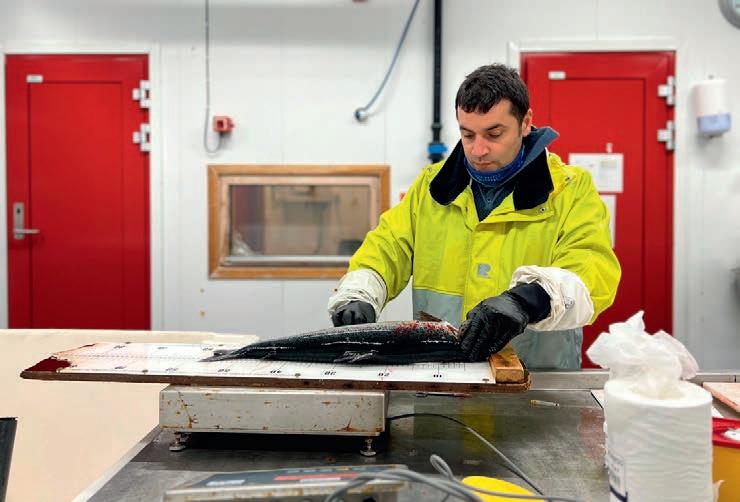


page from top: ellyfish; Firum former Fiskaaling Faroes; ns�tute scien�st ngelico adaro takes samples of farmed salmon a er a ellyfish opera�on in the facility at the research sta�on in uste oll
Opposite from top: erlesnormanet; Tina Oldham; erlesnormanet
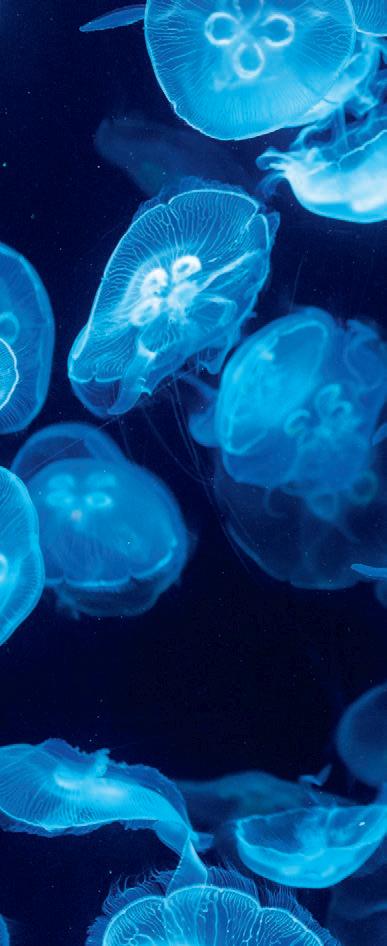

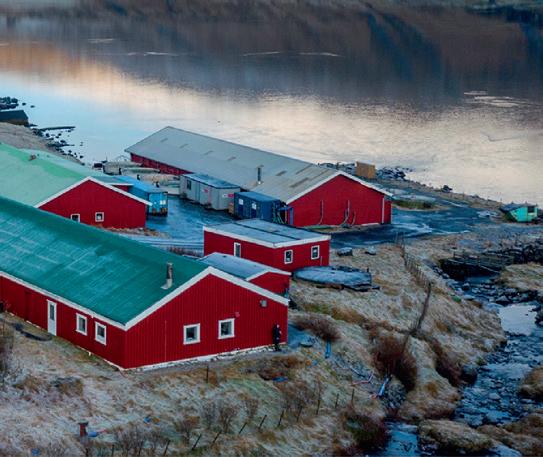



They look like long pieces of white ragged
They look like long pieces of white ragged string or cotton – hence they are also known as “string jellyfish” – and can stretch to several metres in length.
What the industry doesn’t know yet is whether last winter’s attacks – and it is in winter that they arrive - was a “once in 10 years” event or is likely to become a regular menace.
The Institute has just been awarded NOK 35 million (£2.5m) from the Norwegian Fisheries and Aquaculture Industry’s research funding (FHF) to launch a project called JellySafe to try to avoid a repeat this year.
Marine Researcher Tina Oldham said: “The whole point of research is to investigate things we don’t know, but the perlesnormanet situation is unique. It is unusual how little we know about something that has had such a big impact.” She added: “When last year’s autumn
It is unusual how little we know about something that has had such a big impact
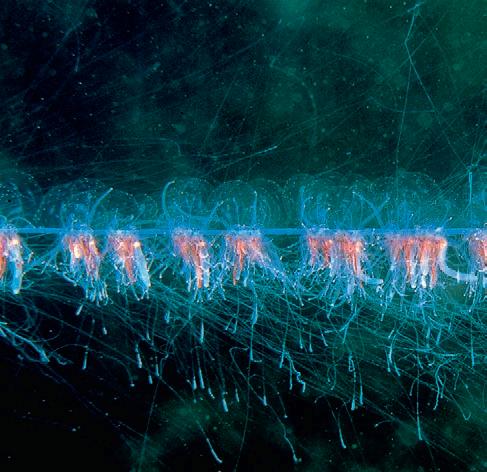
were close to a coma condition.



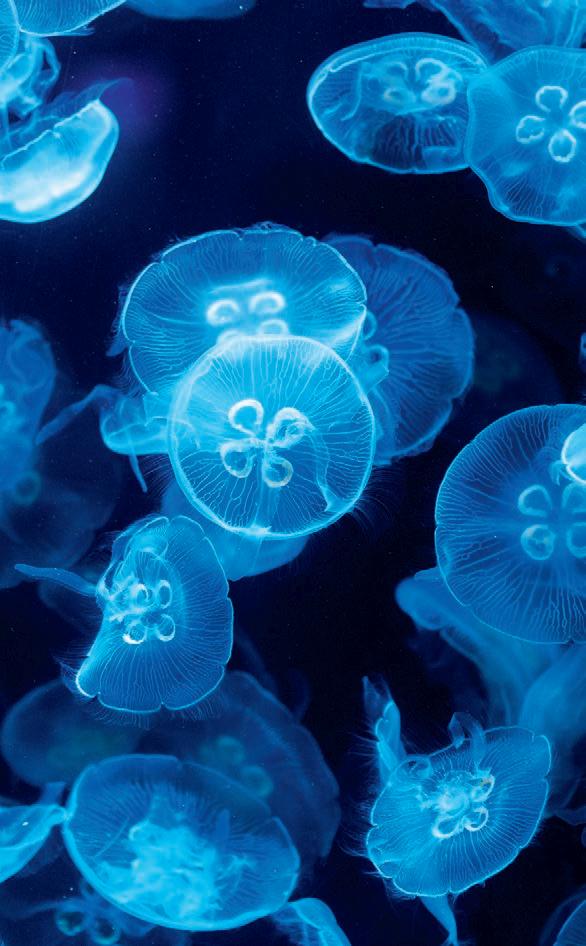
months slipped into winter, large quantities of perlesnormanet drifted towards the Norwegian coast. The consequences of the unwanted guest were enormous. “
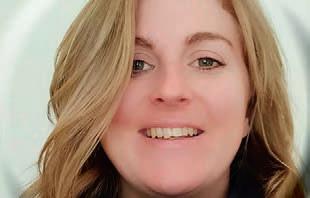
JellySafe plans to build on this earlier work with the knowledge Oldham and her team have already acquired. She said the project involves a wide range of people: “…everything from engineers, mathematicians and oceanographers to fish health researchers, zooplankton ecologists and molecular biologists.”

And, after Norway, they came for Scotland.
The perlesnormanet is a colony jellyfish, which is made up of several smaller individuals. Some of the individuals have nettle cells, and these kill fish that come too close.
Oldham explained: “In the face of waves, turbulence and physical barriers, the jellyfish colonies are broken up – and these small pieces can penetrate breeding cages.
“This happened again and again and again at farms along the coast. The smokers were powerless.
“We lack both the knowledge and the infrastructure that prepares us to meet such harmful plankton.”
Oldham is leading a completely new research project that should help to equip the industry to deal with the type of dangers that come drifting with the ocean currents.
Quite a lot was already known about this type of jellyfish. But when they started to cause trouble last winter, marine scientists scrambled to acquire more knowledge –both about the fish that were harmed and the jellyfish that caused it.
They secured samples from the jellyfish initiative at its research station in Austevoll, Norway, and started a project to find mitigating measures when the jellyfish
“We are not giving up on a single question. We will examine the whole picture,” she adds.
This ranges from the biology of the jellyfish and how it is affected by biological driving forces, to how we can use all this knowledge to develop strategies and measures to meet the danger – and ensure that the information reaches those who need it.
It is not just commercial fish farms that are affected. The Institute itself had to euthanise its own fish for animal welfare reasons following a jellyfish attack at its sea facility in Austevoll.
The Faroese investigation is a longer term venture. Led by Dr Amanda Vang, Head of the Biotechnology Department at the research centre, GLOBECC will draw on a multi-disciplinary team of Faroese and


Norwegian research partners, as well as industry collaboration.
The two-year project will leverage existing marine research surveys from The Aquaculture Research Centre and the Faroe Islands Marine Institute, aquaculture monitoring initiatives with Bakkafrost, and citizen science projects with the Arctic Oceanarium of the Faroe Islands.
A main goal of the project is to establish the first reference database for Faroese jellyfish. This database will consist of microscope images and DNA analysis of jellyfish collected during the project.
The database will then be used to design genetic tests for identification of high-risk species as a tool for Faroese aquaculture management.
The perlesnormanet can be up to 30 metres long, but the colony can sometimes be broken up into smaller pieces by both waves, turbulence and physical barriers –such as cages – so before they reach the coastline they can be in many small parts.
It was one night during a jellyfish attack last November that the Institute team saw the salmon had been badly injured.
“It is these small pieces that are problematic. If an individual with nettle cells enters a cage and hits a fish, he can get wounds and damage to the gills and burns to the skin,” said IMR Researcher Lars Helge Stien.
It was a difficult incident, but at least it has helped the team gain more knowledge about the problem
Stien said: “We are aware of two previous episodes in which this jellyfish has led to increased mortality in breeding facilities.”
The Institute believes there is a lot more to learn about the jellyfish problem and its consequences for farmed fish.
Hopefully, Tina Oldham and her team can close that gap in time should there be another onslaught this winter.

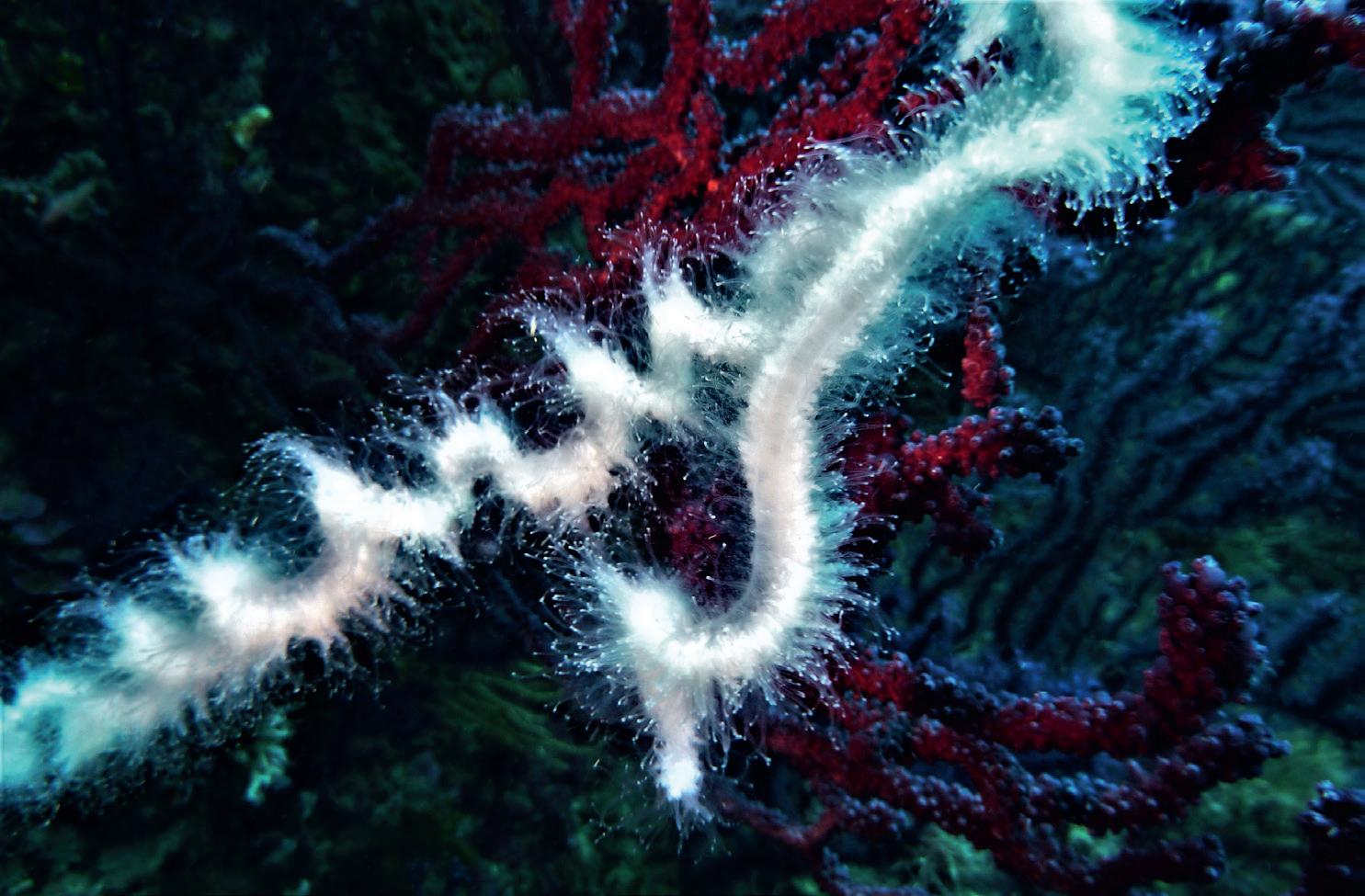




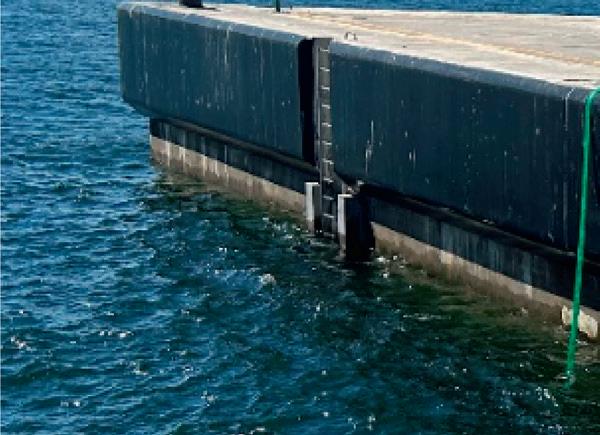
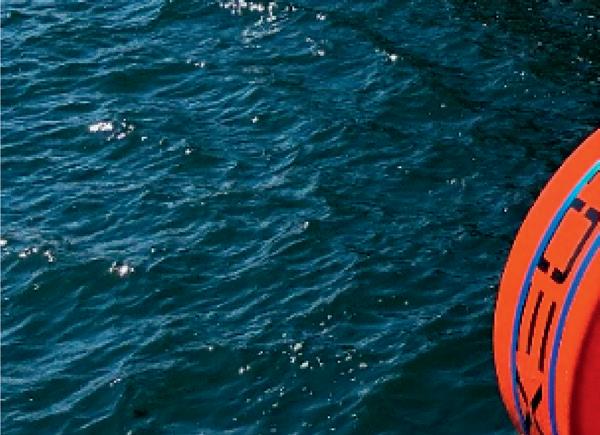
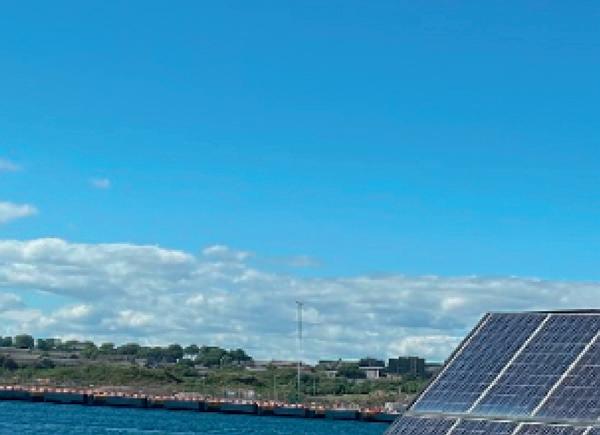

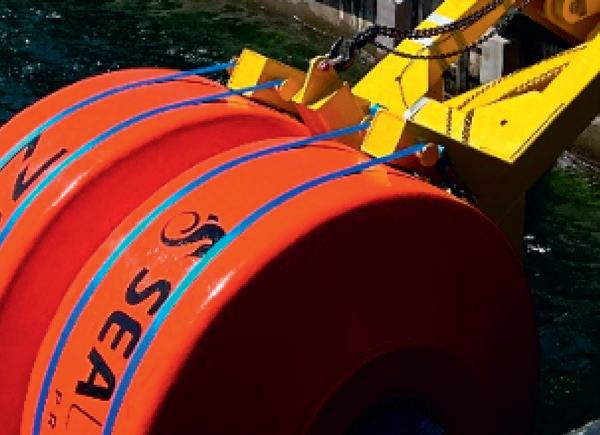



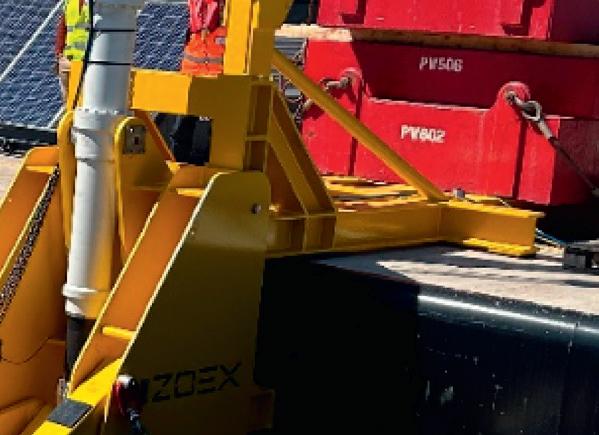
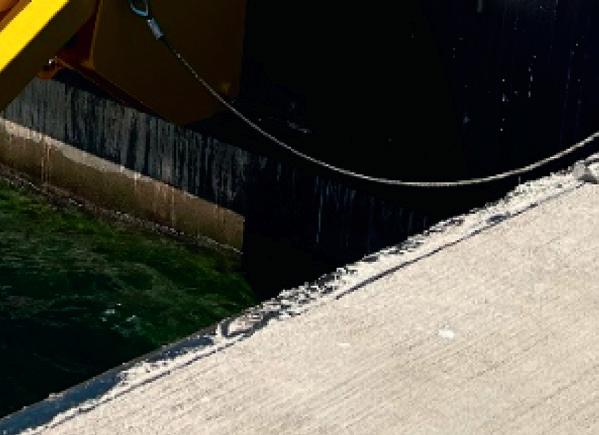

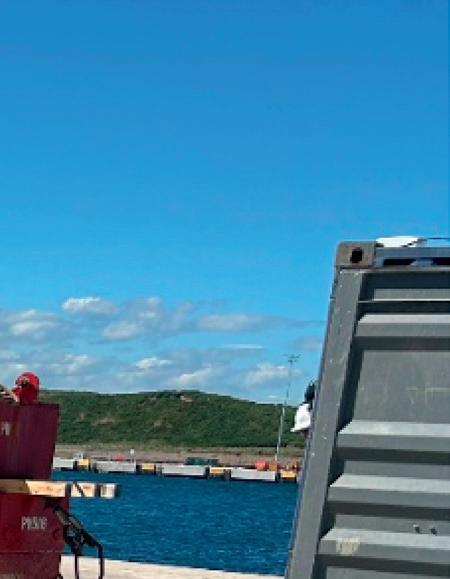
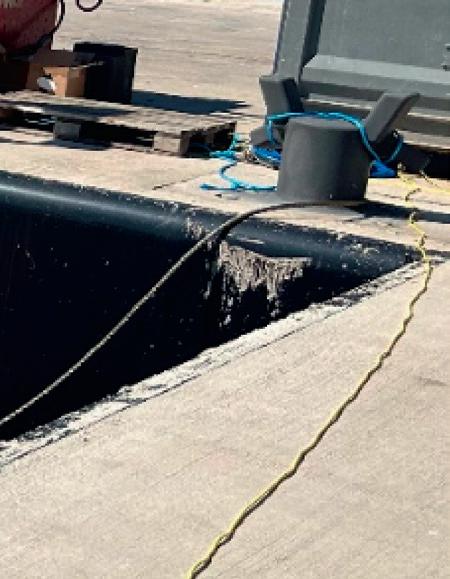


As Sandy Neil reports, moves are afoot to find greener energy sources for fish farming operations
THE fish farming industry relies heavily on diesel generators which, of course, cause CO2 emissions – contributing to global warming – that need to be phased out. But with what? This month, Fish Farmer looks at how green energy can provide power for aquaculture operations – from wind and wave energy to solar power.
“Aquaculture, like many other sectors, increasingly seeks to decarbonise and demonstrate strong environmental principles as countries, including Scotland, adopt net zero policies,” begins the Sustainable Aquaculture Innovation Centre (SAIC), as it sets out the challenges for the industry.
“Growth in this sector is constrained by geographic factors, such as the lack of availability of sheltered, inshore sites. This, alongside other factors, has encouraged many fish farms to move to locations further offshore. These need higher amounts of diesel to meet electrical power requirements, as they are off-grid. Fish farmers aim to reduce the need for diesel generators in order to increase sustainable practices and reduce both cost and emissions.
“For these reasons, there is a clear interest in renewable energy solutions within the industry. However, any renewable solution must
ensure reliable power to protect fish health, offer energy storage options, and be a competitive alternative to diesel.”
There are different pros and cons for each alternative, the SAIC explains. “The reliability of power is of the utmost importance to fish farms. Loss of power for even one day can present problems such as disruption to feeding routines or loss of signals from sensors. Current options for energy include subsea cables providing mains power, solar panels, small wind turbines, hydrogen fuel cells, and ammonia fuel cells. Each of these faces unique challenges that can make their adoption in coastal Scottish waters difficult and expensive.”
For example, while mains power supplied by a subsea cable is more reliable for nearshore farms, it is not an option for remote sites off the coast of Scotland, where there is not sufficient grid infrastructure. In addition, the industry is moving further and further offshore due to the lack of availability of inshore sites.
And while solar panels offer an affordable price, they do not produce enough power during winter months. Salmon is generally only farmed in cold waters in northern latitudes where sunshine is limited for half the year. Solar can also suffer badly from corrosion in a marine environment.
“Emerging wave and tidal technologies offer potential, although


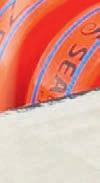

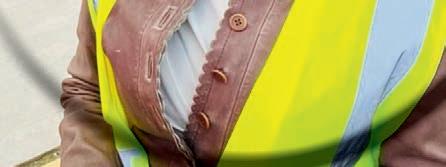


”There is a clear interest in renewable energy solutions
currently, they are comparatively expensive,” added the SAIC. “Most wave energy technology requires two-metre waves in height; a demanding requirement for traditional farms in sheltered areas and calmer swell. However, as farms increasingly move to more exposed, high-energy locations, wave resource levels should meet this requirement.”
Who will rule the waves?
Back in 2023, the Norwegian trout farming company Svanøy Havbruk became the world’s first aquaculture business to use wave power to generate electricity, at the company’s site on the south side of Svanøy in the Vestland region.
A full-scale Havkraft N-Class wave power plant was installed close to the island of Svanøy. Havkraft developed two types of oscillating water column (OWC) power plants, the first being the Havkraft N-Class which is fitted for nearshore locations, while the second – dubbed Havkraft O-Class – is more suitable for offshore operations.
Now Scotland is taking a significant step towards sustainable energy for fish farming, with an innovative wave energy device called ZOEX, being developed by a company of the same name.
“ZOEX has the potential to revolutionise the way in which wave energy can be harnessed in small sea-states and be utilised to create cost-effective clean energy, replacing the use of CO2-emitting generators in off-grid locations,” says the company.
“The ZOEX wave energy converter can be mounted directly onto feed barges, replacing CO2 emitting diesel generators and providing a clean, reliable and robust energy source.
“The ZOEX can also be installed in a variety of different locations, such as breakwaters, harbour, and offshore wind turbine monopiles where its patent-pending double link arm mechanism acts as a gearing mechanism to enhance the effectiveness of the Power Take off system, generating more energy.”
The founder is Ash Penley, an award-winning businesswoman from Aberdeen. She told us: “I have named the wave energy converter after my children’s names, Zoe and Alex. Zoe means ‘life’ in Greek and we hoped to bring livelihood to community and businesses with clean energy from waves… Alex means ‘defender of man’, and I mixed the two names and came up with ZOEX.”
ZOEX has teamed up with Sealand Projects Ltd, an engineering house in Aberdeen with experience in offshore installation of oil and gas, and renewable energy projects. A study, funded by the SAIC and Scottish Enterprise, aimed to confirm whether mounting the ZOEX Wave Energy Converter (WEC) to a suitable feed barge could provide sufficient clean electrical power to meet the needs of a typical fish farm in Scotland.
The ZOEX WEC, explains SAIC, “…is a modular wave energy converter that can be attached to marine structures to provide costeffective, reliable, and clean power to help reach sustainability goals. The device is a simple hinge plus float, designed to be attached to the platform of a marine structure.
“A rubber fender moves up and down as a wave-actuated body. An electro-mechanical generator captures the fender’s movements. The design incorporates a mechanism to enhance power production in small waves while mitigating end-stop problems in large waves, making it suitable for low and high sea states.
“ZOEX can be regarded as a trickle charger of battery systems, topping up and always keeping the batteries full, reducing a fish farm’s dependence on diesel while reducing costs and carbon emissions.
“A levelised cost of energy (LCOE) analysis estimated the energy would cost in the range of £223-£600 per megawatt hour, although this will differ from site to site. This estimate accounts for capital expenditures such as equipment and project development, as well as operating expenditures such as maintenance, insurance, and other annual charges.
“In the short term, the device encounters higher costs. However, the WEC results in lower long-term expenditure, as waves are a free energy source and the generator requires minimum maintenance. Additionally, initial costs can be reduced even further with multiple government grants and programmes available to assist with implementing renewable energy solutions.”
The report concluded: “This study achieved its objectives










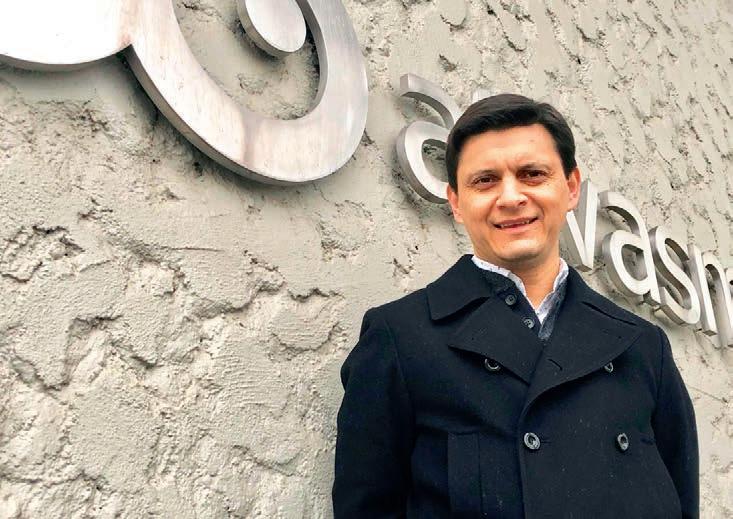
and illustrated that the ZOEX WEC is a good value proposition to customers, costing less than or equal to diesel alternatives. Further, the WEC produced zero harmful emissions to the atmosphere. Therefore, the study has concluded that the ZOEX WEC is a promising net-zero solution that is technically feasible and commercially attractive to the aquaculture industry.”
The first ZOEX device was commissioned at Port of Aberdeen in June 2024, and was celebrated with a launch event where representatives from industry and government could witness the device working.
Waves down under
Meanwhile on the other side of the world, Australian company Carnegie Clean Energy is also fitting wave energy generators to fish farm feed barges. “Carnegie Clean Energy developed MoorPower, a product that leverages the core principles of the CETO technology to create an innovative wave converter system specifically designed for offshore energy demand applications,” it explains.
Carnegie has designed, installed and operated a scaled demonstrator of the technology just offshore from its headquarters and research facility in North Fremantle, Western Australia. The A$3.4m (£1.74m) project is delivered with funding support from the Blue Economy Cooperative Research Centre (CRC).
“The MoorPower project signifies a crucial step in validating the technology and exploring large-scale implementation on aquaculture vessels,” Carnegie Clean Energy told Fish Farmer. “A scaled demonstrator, featuring three power take-off units connected to the seabed, showcases the technology’s viability. These units efficiently harness ocean energy as the barge moves with the motion of waves, driving onboard generators to produce ready-to-use electricity. The


demonstrator project incorporates real-time data transfer, providing critical information on wave height, wind conditions, and energy generation.
“The MoorPower Demonstrator was deployed and entered operation in January 2024 and has provided over 2,000 hours of operational data during its initial operational phase. It was brought back into port for routine inspection and planned maintenance in April 2024.
enabled
“This initial operational phase was primarily in calmer months, which enabled the team to monitor the MoorPower modules and ensure they were functioning as engineered prior to the more significant anticipated sea conditions of the winter months.
”ZOEX has the potential to revolutionise the way in which wave energy can be harnessed
“Overall, the recent data gathered on the Demonstrator combined with recent data gathered from an operating feeding barge in Tasmania provide confidence that the Commercial MoorPower System will perform as expected and can deliver significant decarbonisation (reduced diesel requirements) and other benefits for operating feeding barges.”
In June, the company redeployed the MoorPower Demonstrator at the offshore site for winter tests.
Here comes the sun
Developments in solar energy are also forging ahead. Earlier this year, we heard about a project to harness floating solar panels to power Chilean fish farming operations, led by a team from AKVA, Kverneland Energi, and Inseanergy. AKVA said: “The initiative aims at precision farming with minimal emissions, incorporating advanced hybrid battery systems, solar power plants, software, and control systems tailored to meet the challenging demands of sustainable aquaculture.”
Christian Gerardo Schäfer Oyanedel, General Manager in AKVA group Chile, explained: “This is a system of floating solar energy production that generates 100% emission-free green energy. The solar power plant will work as a ‘floating generator’ being able to produce as much as 290 Kwh. In combination with a battery pack and water feeding, we can reduce the running time of the diesel generator by up to 90% on a typical fish farm.”
Top: Clean energy system developed by AKVA, Kverneland Energi and Inseanergy
Above: hris�an erardo
Schäfer Oyanedel, AKVA
Chile
Opposite: ingfish
Zeeland’s RAS plant
“A hybrid energy system offers many advantages,” elaborated Kverneland Energi. “You reduce the use of diesel and drastically cut CO2 emissions. Noise is reduced both on and around the fleet. You need fewer generators, which saves money on maintenance and operation. And the investment pays off quickly.
“In December 2019, we installed AKVA Hybrid track systems on Mortenlaks’ feed fleet to reduce diesel overuse and CO2 emissions. The battery pack has a storage capacity of 173 kWh and a maximum output of 120 kW. Annual diesel savings: 68,500l. In
April 2019, the feed fleet at Selsøyvær had an AKVA hybrid package installed to reduce running time on the generator, reduce diesel consumption, noise and exhaust on the fleet. The battery pack has 158 kWh storage capacity and has a maximum output of 142 kW. Annual diesel savings: 68,500l.”
For the much easier application of powering facilities on land, like hatcheries, how far has the industry progressed, in Scotland and elsewhere? In the EU, the Kingfish Company is “on a mission to promote sustainable aquaculture”, it says.
“Based in the Dutch province of Zeeland, Kingfish Zeeland taps into the pristine marine estuary water of the Eastern Scheldt, a Natura 2000 nature reserve, to deliver a healthy, antibiotic-free premium delicacy: the Dutch yellowtail.
“Our primary energy source is 100% renewable electricity - wind-powered and solar.” Kingfish Zeeland also deploys heat exchangers, “to minimise energy use for heating, our warm outflow water transfers heat to our incoming water through a state of the art heat-exchange system custom designed for marine water use. By using sea water, we don’t waste a precious and rare resource.”
Closer to home, Scottish Sea Farms, which prides itself on its sustainable approach to


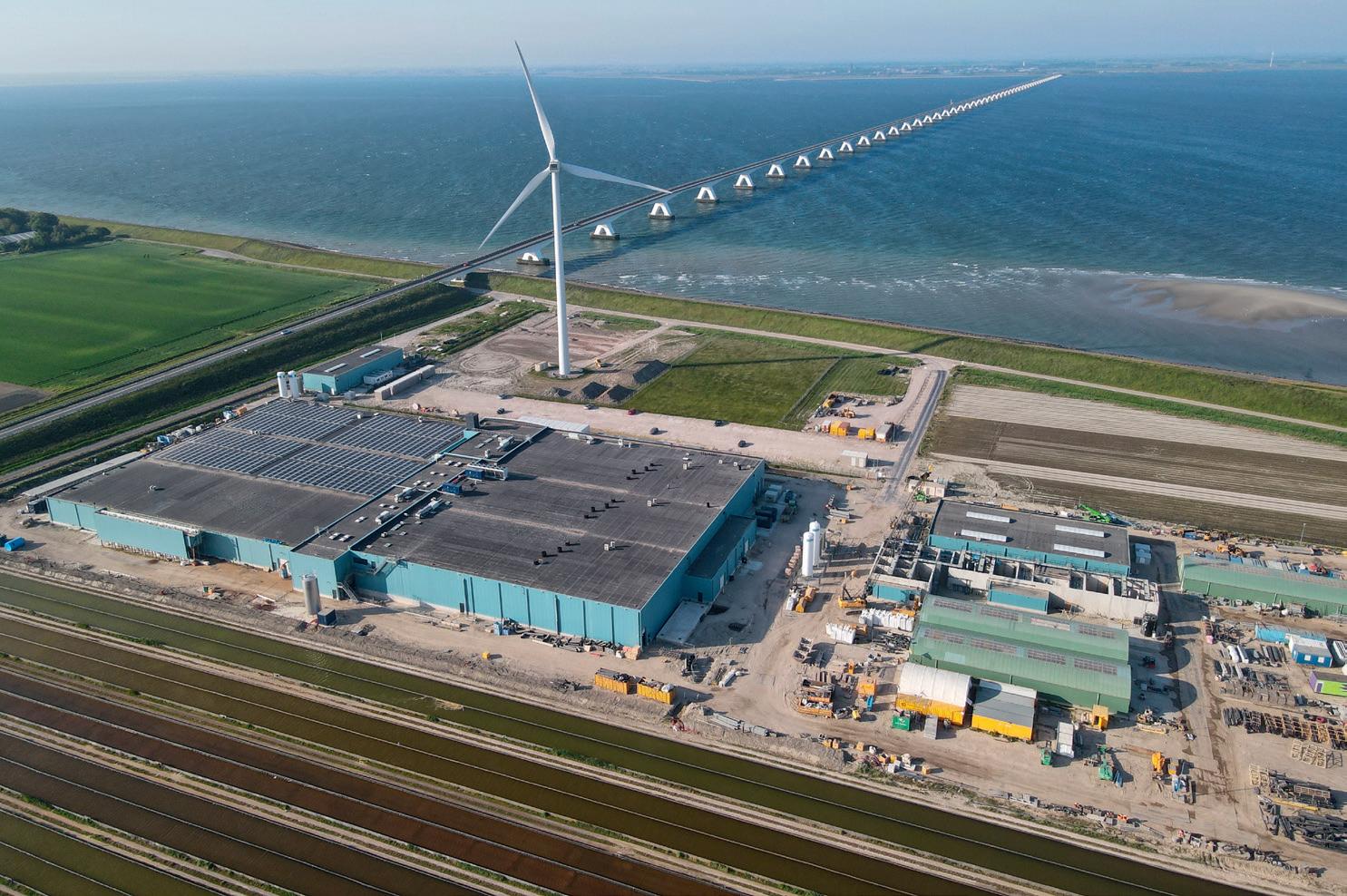

salmon farming, saw its Barcaldine Hatchery recognised in the Carbon Reduction Award category of the Scottish Green Energy Awards in 2021. Among the greener approaches in operation is a 600kw biomass energy system. Supplied by AMP Clean Energy, it uses locally sourced, sustainably managed woodchip to provide the 17,500 sqm Barcaldine Hatchery with much of its heat and hot water, saving 683 tonnes of carbon annually compared with oil. That’s the equivalent of six million miles by car.
The progress may be impressive, but is it enough? Under the 2015 Paris climate


agreement, 197 countries - including the UK - agreed to try to limit global temperature rises to 1.5C by 2100. To achieve this, CO2 emissions need to fall by nearly half by 2030 and reach net zero by 2050, according to the UN’s climate body, the IPCC. But these emissions remain at record highs.
The US has pledged to reach net zero by 2050, but that may be revised. In the run-up to the US presidential election, Donald Trump continues to summarise his energy policies with a slogan: “Drill, baby, drill.” If he wins, the world will have to go further and faster to meet its crucial target.
Used cooking oil is being deployed to create a safe and eco-friendly

AKVA group is launching the world’s first boat hull made from climate-neutral raw materials.
The material for the hull, which AKVA group also uses for fish pens, is based on used cooking oil. The new boat hull is part of the iconic range of Polarcirkel boats.
“With this innovative approach, the Polarcirkel boats maintain their status as reliable and robust work boats, while now offering a greener alternative for the aquaculture industry,” says Freddy Bakken Braseth, General Manager of AKVA group Helgeland Plast.

CO2E/kg generated by using fossil-fuel based material.








The raw material is well suited for use in products that require contact with food and in health applications, underscoring its versatility and safety.
“The use of this raw material represents efficient resource utilization and contributes to a circular economy, an important step towards more sustainable production,” says Braseth.


AKVA group has achieved ISCC PLUS certification (“International Sustainability and Carbon Certification”) for its use of bio-based and recycled raw materials such as forest waste and cooking oil. The certification ensures quality and safety standards for products. This shift from fossil raw materials to plant-based materials makes the boat hull climate-neutral without changing its quality and safety.
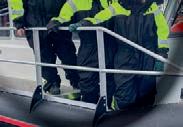
AKVA group recently launched the world’s first fish pen made of recycled plastic, a result of a collaboration between Oceanize, Plasto, and Nova Sea.

“AKVA group has really made a climate effort by offering climate-neutral boat hulls and recycled fish pens. We look forward to the day the pen is put into operation,” says Braseth. Contact Akva Group Scotland, Inverness for any enquires.
“Safety at sea is our priority, and this is achieved with the new raw material. This initiative offers a solution for the aquaculture industry, enabling environmentally conscious choices,” he says.
Polarcirkel boats are used in various sectors, from aquaculture and rescue services to recreational use.
Lower Carbon Footprint
The raw material consists of 90% bio-circular materials, contributing to a significant reduction in CO2 emissions. Life Cycle Analyses (LCA) have shown that this raw material has a carbon footprint of only 0.004 kg CO2E/kg, a marked improvement compared to the 1.9 kg
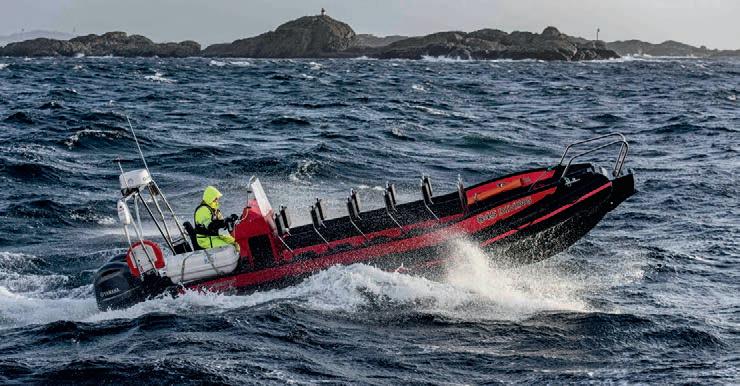
One person’s waste could be another’s valuable commodity, as the aquaculture sector is discovering
THE “circular economy” is one of those buzzwords that, like “sustainability”, can be stretched to make a point.
In essence, though, the concept can be defined as an economic system aimed at eliminating waste and making better use of resources.
It is usually contrasted with the traditional “linear economy” which follows a “takemake-dispose” model which has become
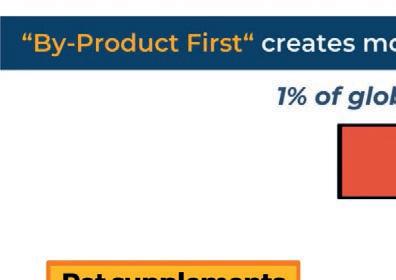
the norm ever since the dawn of the Industrial Revolution. The linear economy not only uses up natural resources unsustainably – it also creates waste which needs to be disposed of somehow.
In the context of aquaculture, there are two key themes to a circular approach: first, ensuring that as much as possible of any fish that is farmed or caught is used to create value; and secondly, dealing with waste by-products such as fish farm sludge
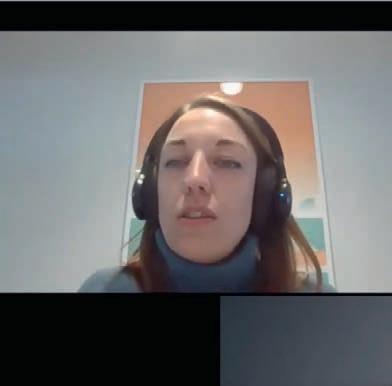

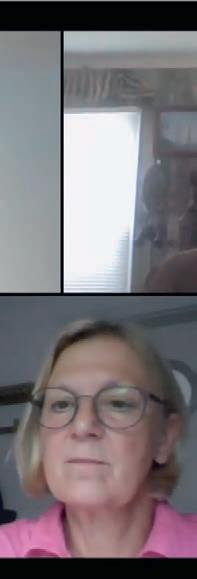
as potentially valuable “co-products”.
A report commissioned in 2022 for the European Union’s iFISHiENCi initiative recommended approaches such as improving the circularity of feeding (such as growing algae fed on nutrients from aquaculture waste), or valorising fish waste from land-based fish farms.

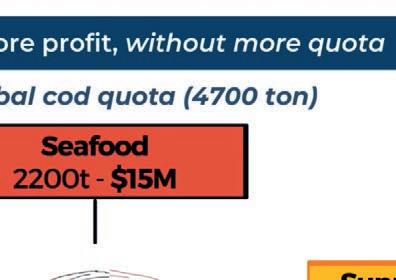
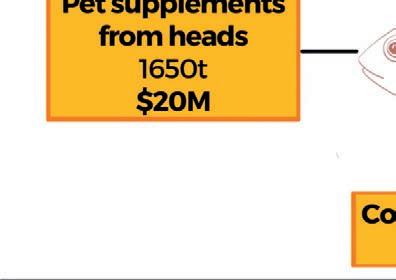


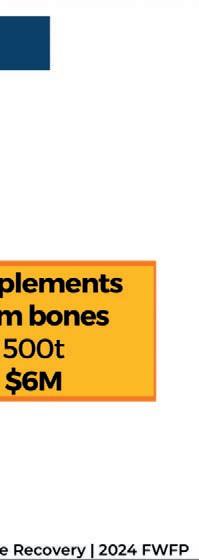

When it comes to minimising waste in fish processing, the undoubted leader right now is Iceland. The 100% Fish initiative championed by the Iceland Ocean Cluster, in particular focused in Atlantic cod, is one that other seafood nations have been looking at with great interest.
The cluster will be hosting a conference with the theme of “Fish Waste for Profit” on 19-20 September, but as a taster, it held a webinar moderated by the organisation’s CEO Alexandra Leeper.
The webinar featured: Dr Thor Sigfusson, Founder and Chairman of the cluster; David Naftzger, Executive Director, St Lawrence Governors and Premiers, Great Lakes, representing fisheries in US/ Canadian Great Lakes region; Petra Weigl, Managing Director, Europe, with tilapia farmer Regal Springs; and Ben Wiper, Founder and CEO, 3F Waste Recovery.



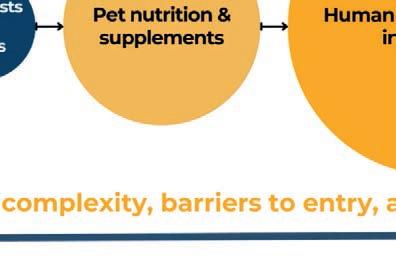
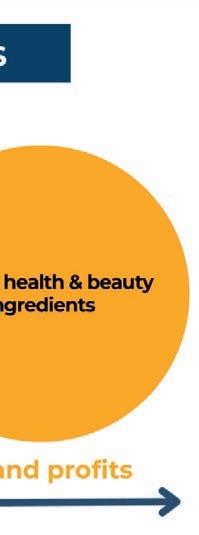

As Alexandra Leeper pointed out, an incredible 10 million tonnes of the world’s target catch is wasted every year. Seafood businesses are typically focused on fillets as the product consumers know, understand and want to see on their supermarket shelves.
But there is so much more. The 100% fish initiative has encouraged Iceland processors to use fish by-products for applications such as nutraceuticals, cosmetics and even skin grafts created from cod skin.
Dr Sigfusson gave two recent examples: a hand cream based on lobster chitin, and “leather” goods made from whitefish skin. He said: “There is real value to be had from product that is lying around in dumpsters around the world.”
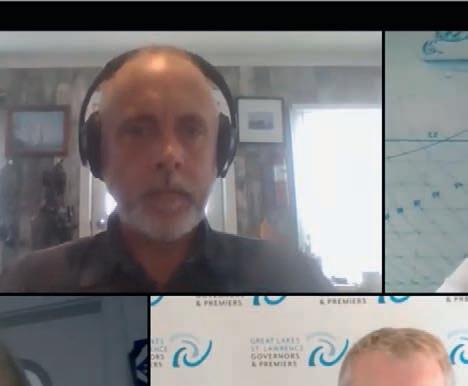
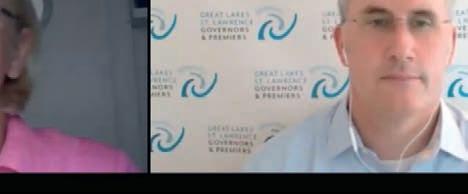


David Naftzger said that in the Great Lakes, the fisheries’ catch previously went to fillets and low-value animal feed; now, applications are being developed to create collagen, hydrolysate and fish leather.
He said: “We estimated that we could double or triple the return on caught fish.”
achieve “100% fish” depends on its size, local infrastructure and ability to invest. Regal Springs typically operates in remote rural areas, in countries like Indonesia, with little local infrastructure – in stark contrast to Iceland.
What’s possible also depends on the properties of a producer’s fish. For example, salmon, especially if has had a diet with a large element of marine ingredients, will tend to be high in omega-3 and the fish oil derived from it will be high value. In contrast, a freshwater fish like tilapia, that can thrive on a plant-based diet, will produce fish oil that is less premium.
As Ben Wiper explained, learning how to use by-products is a game-changer for fisheries, changing the dynamic from “biggest quota wins” to “best technology wins.”
3F was set up to develop useful products from fish heads, skin and bones – the elements that end up in landfill or at best, animal feed. As Wiper explained, the “crown jewel” is its range of collagen products, including the world’s first 99.5% pure medicalgrade collagen, which can be used for artificial skin grafts, tissues and organs.
Its business model is to work with seafood companies, licensing its technology, building biorefineries and creating a ready market for the processed product.
Wiper, who believes this kind of technology will change the industry fundamentally, predicted: “In the next 10 years, we will see a cosmetic or pharmaceutical company acquire a fish processing company.”
Above: 100% Fish webinar panel: (clockwise from top le le andra eeper O celand Ocean Cluster; Ben iper Founder and CEO, 3F Waste Recovery; Thor Sigfusson Founder and hairman celand Ocean luster; a id a ger ecu� e Director, St Lawrence o ernors and remiers reat akes; and etra Weigl, Managing Director, Europe, with Regal Springs. Opposite from top: How by products can be used; dding alue to the cod catch through by products
On the farming front, Regal Springs aims for a zero-waste policy with the intention that no part of its tilapia will end up in landfill. As Petra Weigl explained, the company is already 95% of the way there. The only element not currently being used is the blood.
Regal Springs set up a new division, Natural Additives, to find more high-value uses for fish. As Petra Weigl put it: “We should all feel morally obliged to use 100% of the fish we catch or farm.”
She stressed however that “every fish is different” and a company’s ability to





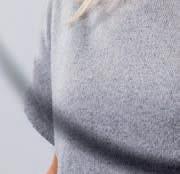
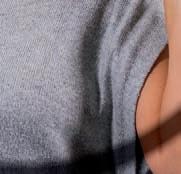


There is real value to be had from product that is lying around in dumpsters
One of the criticisms levelled at the aquaculture sector is that aquafeed is too dependent on catching wild fish from the world’s diminishing fish stocks. A more sustainable solution could be to use the nutrients in aquaculture waste – basically “sludge”, a mix of fish faeces and uneaten feed – to grow plants and animals that fish can eat.
As Fish Farmer reported last November (“Worms can help find value in fish farm waste”, November 2023), researchers at the Scottish Association for Marine Science (SAMS), with funding support from the Sustainable Aquaculture Innovation Centre (SAIC), have been working on a process to extract solid nutrients from sludge, so that it can be fed to polychaetes, marine worms that can be used as the basis for shrimp or animal feed.
The ongoing project involves first an electrochemical process and ultrasound technology which extracts excess water from waste matter, and secondly a trial to assess the nutritional value of polychaetes fed in this way.
Dr Georgina Robinson, lead researcher and UKRI Future Leaders Fellow at SAMS, said at the time: “Aquaculture waste is not typically considered as valuable as co-products from other sectors, but there are a range of opportunities to be explored that could change that attitude. By taking a circular approach, we can use the co-products to aid the growth of other organisms that will, in turn, benefit the sector as a sustainable feed ingredient.
“This is the first time the water treatment system has been used for freshwater waste and the results of the project could show huge potential for it to be adopted more widely.”
Where there’s muck…
Raising polychaetes is just one of the potential ways to valorise fish farm sludge. Other uses include:
• Composting: sludge can be composted to create nutrient-rich organic fertiliser. Mixed with organic materials like sawdust, straw or wood chips it can be used as compost.
• Anaerobic digestion: the sludge is broken down in an oxygen-free environment, creating biogas (a mix of methane and carbon dioxide) and digestate (a nutrient-rich by-product). Biogas is a renewable energy source while the digestate can be used as fertiliser.
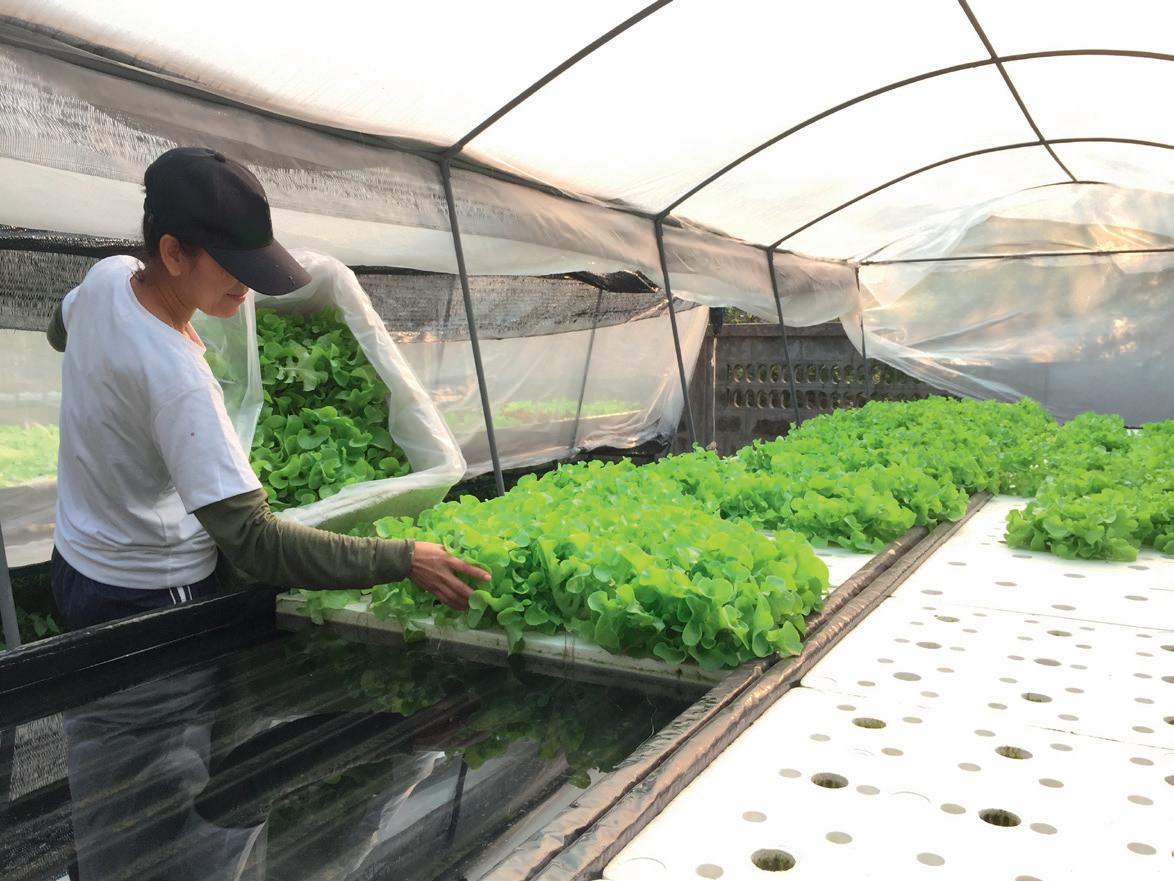


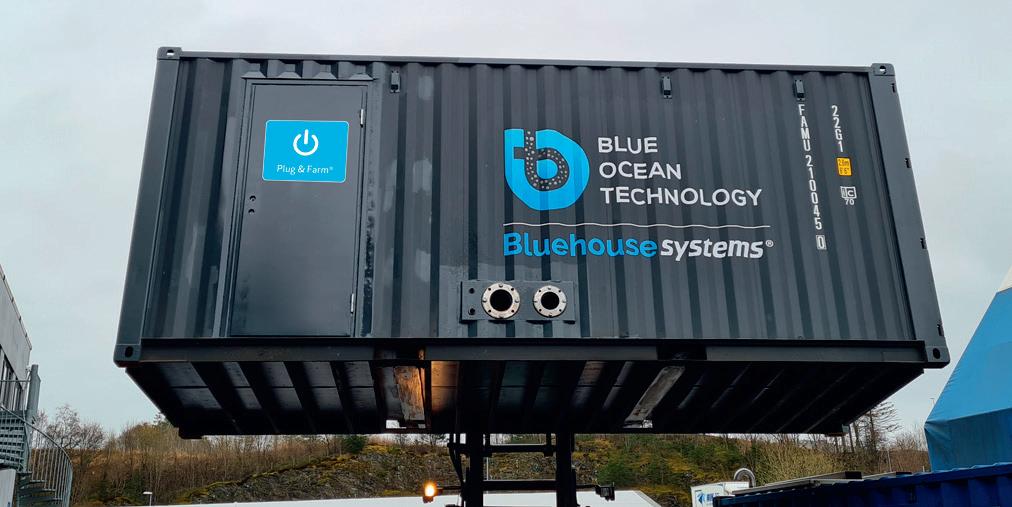
• Biochar: Fish farm sludge can be converted to biochar through pyrolysis (thermal decomposition in the absence of oxygen). Biochar is a stable form of carbon that can be used to enrich soil.
• Land application: properly treated, fish farm sludge can be used directly on agricultural land as a fertiliser or soil conditioner.
• Aquaponics: fish farm sludge and/or wastewater can be used to fertilise plants grown in an aquaponic facility (combining hydroponic agriculture with aquaculture).The plants in turn help to purify the water which can then be recirculated back into the fish tanks.
• Worm farming: fish farm sludge can be fed to earthworms, which convert it into high-quality “vermicompost”.
There are a couple of caveats, however. First, when using sludge as a source of nutrients, it is important not to apply an excessive amount, which could lead to eutrophication – an explosion in harmful algae growth – in rivers, lakes and coastal waters. Secondly, collecting sludge is only practical for land-based fish farms and hatcheries, or (in theory at least) closed or semi-closed pens at sea. In conventional net-pen farming, fish faeces and uneaten feed pellets are either dispersed by tides and currents or drift to the seabed under the pen.
Also, it is crucial to have a reliable, cost-effective process that can separate out solids and liquids and turn the solid element into something that can be transported and used. Denmark-based Alumichem, for example, has a four-stage process to help its RAS (recirculating aquaculture systems) fish farming customers deal with waste. First, the sludge goes through a thickening step to takes the dry matter content from 0-1% and up to 10% solids, and significantly reducing the sludge amount. This involves chemical conditioning of the sludge to build large flocs (loosely clumped masses of fine particles), followed by mechanical filtration to separate these floc particles from water.
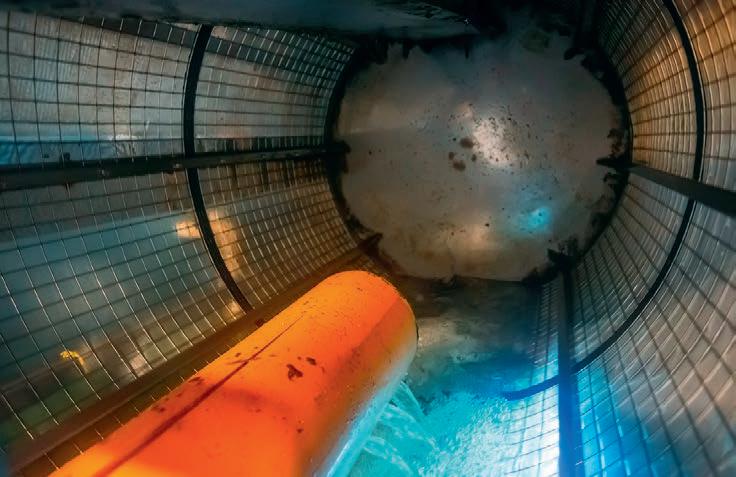
After thickening, the sludge is ideal for biogas production, but it can also go through a further dewatering step, in which the dry matter content can reach 30% solids. The dewatered sludge can be further treated in a sludge dryer to achieve more than 90% solids. Finally, any excess water separated out as part of the process is “polished”, removing any remaining elements such as solids, nitrogen or heavy metals.
Trevor Gent, Director of Engineered Solutions with Alumichem, said: “We always focus on the overall process from both a CAPEX and OPEX perspective.
“For example, if biogas facilities are nearby then we would look at providing the highest dry matter possible to maintain ‘pumpability’ of the sludge. This reduces transportation costs for the fish farmer while ensuring a transportable product to the biogas facility.
“Where biogas isn’t the primary availability we work with the fish farmer to solve the sludge problem to ensure that the sludge is transported to a circular economy opportunity: fertiliser, soil amendment, etc.”
He added: “The main approach is to ensure that there is no cross contamination of the waste and ensuring the sludge contains the highest level of available phosphorous and nitrogen as these are the two highest value components available in fish sludge. This is done by removing the sludge first before performing any denitrification steps. This ensures that the phosphorous is precipitated and the insoluble nitrogen is collected in the sludge and available for the next user.”
Another example is Bakkafrost’s biogas plant at Førka in the Faroe Islands. This not only converts waste from the salmon farmer’s land-based facilities into renewable energy in the form
By taking a circular approach, we can use the coproducts to aid the growth of other organisms

of heat and electricity, but also takes in food waste from local authorities, hotels and wholesalers in the area, and manure from dairy farmers. The plant also produces solid waste for fertiliser.
Førka produced 11,404 Mwh of energy in 2023, although compared to the previous year that represents a reduction of 25%.
Aquaculture waste is becoming a commodity with value in its own right, as can be seen with the decision by Norwegian fish processing heavyweight Pelagia to take a 100% stake in Blue Ocean Technology (BOT), a specialist in handling and treating aquaculture solid waste.
Announcing the deal in February, the companies said in a joint statement that Blue Ocean Technology (BOT) will now have the necessary expertise and capital for further growth, which will help it offer fish farmers a way to sustainably utilise sludge resources. Pelagia’s investment in BOT significantly strengthens the company, they said, especially within logistics services related to aquaculture sludge both on land and at sea.
Finally, the waste water from RAS facilities can also be used – as listed earlier – as a resource to help grow plants in an aquaponic system.
A study by researchers at the University of Thessaloniki, Greece, and the Institute of Plant Breeding and Genetic Resources, Hellenic Agricultural Organization-DIMITRA (ELGO-DIMITRA), set out to evaluate the effectiveness of this approach.




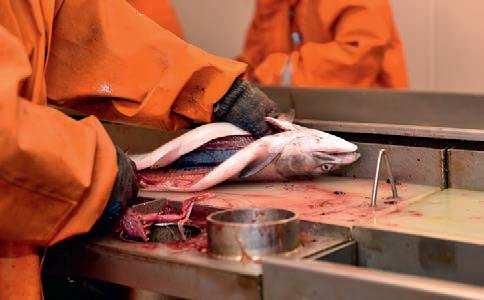
Greenhouse production of baby leaf vegetables using rainbow trout wastewater in a high-tech vertical decoupled aquaponic system (Frontiers in Horticulture, July 2024) evaluated a hydroponic system producing baby lettuce and baby rocket plants, cultivated in a deep water culture system using wastewater from a rainbow trout farm.
The results confirmed that aquaponic systems can lead to
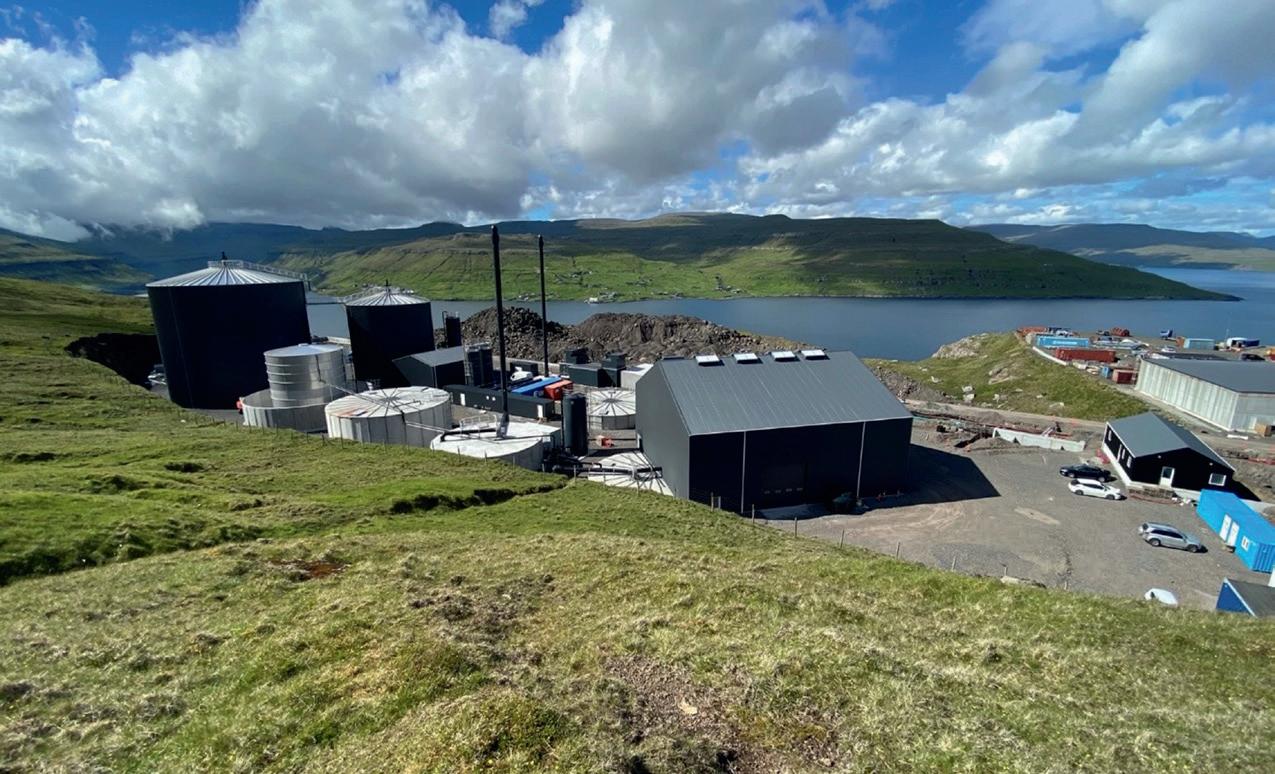
higher water use efficiency and savings in fertilisers without undermining the yield and quality of lettuce, while the vertical arrangement developed within the scope of the study can increase the land use efficiency of the system.
One day soon, the “circular economy” may become so embedded as a basic tenet of aquaculture that it may no longer even be a buzzword.


The latest aquaculture events, conferences and courses
AUGUST 24
AQUA 2024
www.aquaeas.org - www.was.org
Copenhagen, Denmark
August 26-30, 2024
Aquaculture conference and exhibition organised by the European and World Aquaculture Society.
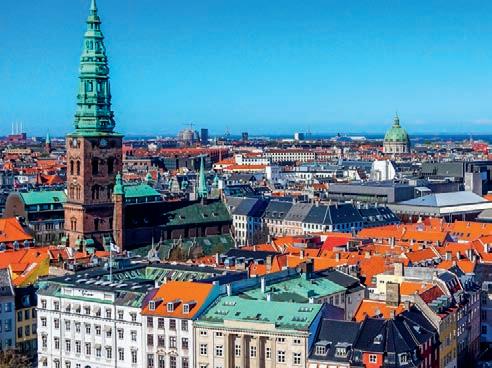
24
SEAGRICULTURE
USA 2024
www.seagriculture-usa.com
Ketchikan, Alaska
September 11-12, 2024
Leading conference for the seaweed sector in the US.
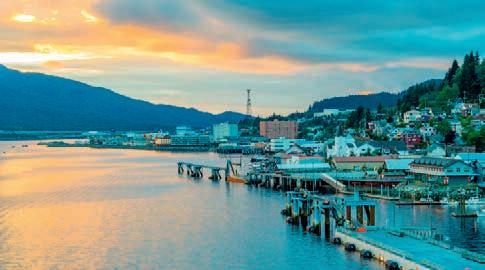
LATIN AMERICAN & CARIBBEAN AQUACULTURE 2024
www.was.org
Medellin, Colombia
September 24-27, 2024
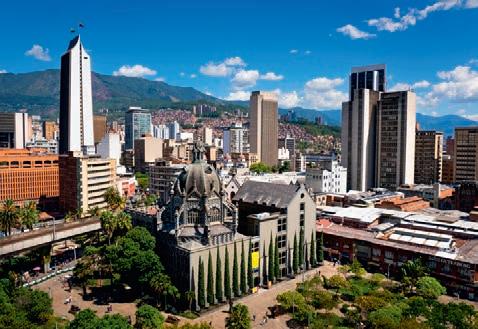
24
SCOTTISH SEAWEED INDUSTRY ASSOCIATION
www.ssia.scot
Corran Halls, Oban UK
November 19-21, 2024
SSIA is an organisation dedicated to the growth and innovation of the seaweed industry.
AFRAQ 2024
www.was.org
Hammamet, Tunisia
November 19-22, 2024
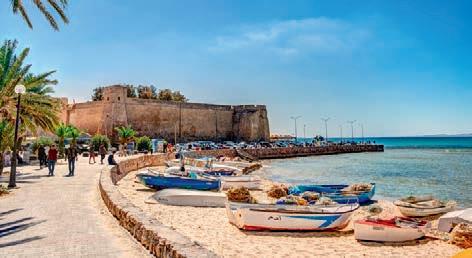
24
ALGAEUROPE 2024
www.algaeurope.org
Athens, Greece
December 10-13, 2024
Venue: Grandior Hotel Prague Conference on science, technology and business in the algae biomass sector.
MARCH 25
AQUACULTURE 2025
www.was.org
New Orleans, Louisiana USA
March 6-10, 2025
SEAGRICULTURE ASIAPACIFIC 2025
seagriculture-asiapacific.com
Adelaide, Australia 18-20 March 2025
APRIL 25
WORLD AQUACULTURE 2025 CHINA
www.was.org
Qingdao, China
April 24-27, 2025
MAY 25
AQUAFUTURE SPAIN 2025
www.aquafuturespain.com
Vigo, Spain
May 20-22, 2025
Venue: Ifevi Fairgrounds
An international meeting space for the Spanish aquaculture industry.
25
SEAWORK
www.seawork.com
Southampton, United Kingdom
June 10-12, 2025
Europe’s largest on-water commercial marine and workboat exhibition.
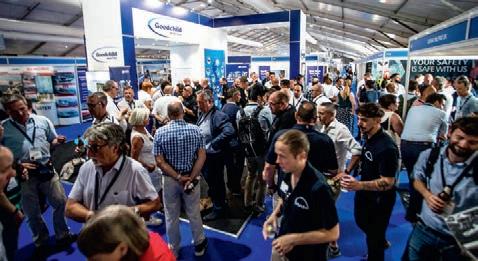
SEAGRICULTURE EU 2025
www.seagriculture.eu
Rotterdam, The Netherlands
June 17-19, 2025
Leading conference for the seaweed industry in Europe
WORLD AQUACULTURE SAFARI 2025
www.was.org
Entebbe, Uganda
June 23-26, 2025
AUGUST 25
AQUA NOR 2025
www.aquanor.no
Trondheim, Norway
August 19-21, 2025
The world’s largest aquaculture technology showcase.
25
AQUACULTURE EUROPE 2025
www.aquaeas.org
Valencia, Spain
September 22-25, 2025
Ace Aquatec supplies stunner for Spanish trout farmer Aquaculture technology business Ace Aquatec has won a major contract in Spain, after sealing a deal with Aqualande-owned trout farmer Piszolla to install the company’s first stunning system. Ace Aquatec’s award-winning Humane Stunner Universal (A-HSU®) will be used at Piszolla’s open pond farming site in Alba de Tormes, Salamanca, marking its first venture into the Spanish market. Piszolla, which was acquired by Aqualande in 2018, produces approximately 5,000 tonnes of trout per year.
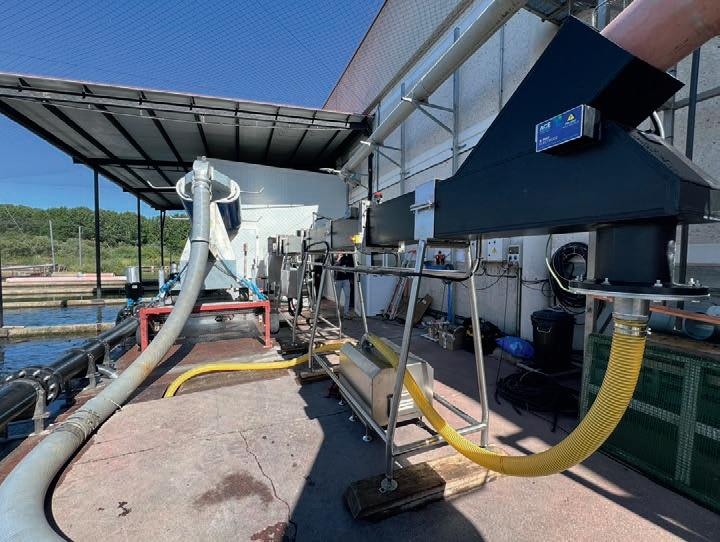
A Norwegian salmon producer faced stricter effluent discharge limits and increasing sludge amounts. Alumichem collaborated with the fish farmer and RAS supplier to customise a solution that dewaters sludge and ensures clean water effluent. This system met discharge limits and produced valuable dry sludge, which was reused by an organic fertiliser producer. Alumichem’s scalable solutions are tailored to specific operations worldwide, helping fish farmers maintain sustainable, costeffective practices. Alumichem’s partnership approach includes design, installation, troubleshooting, and optimisation, ensuring a trouble-free waste management and RAS operation. Visit Alumichem at Aqua 2024 Copenhagen, 26-30 August, Booth no: 114, Danish Pavilion. See more online at: alumichem.com/aquaculture
BIO-UV Group protects against white spot syndrome
www.bio-uv.com/en/
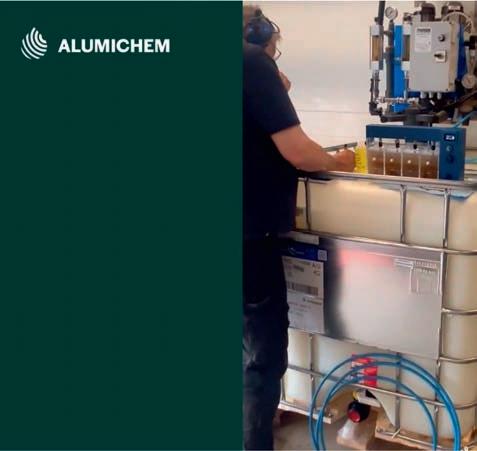

Scan the QR Code to watch ‘Alumichem enables salmon producer to meet strict effluent standards’
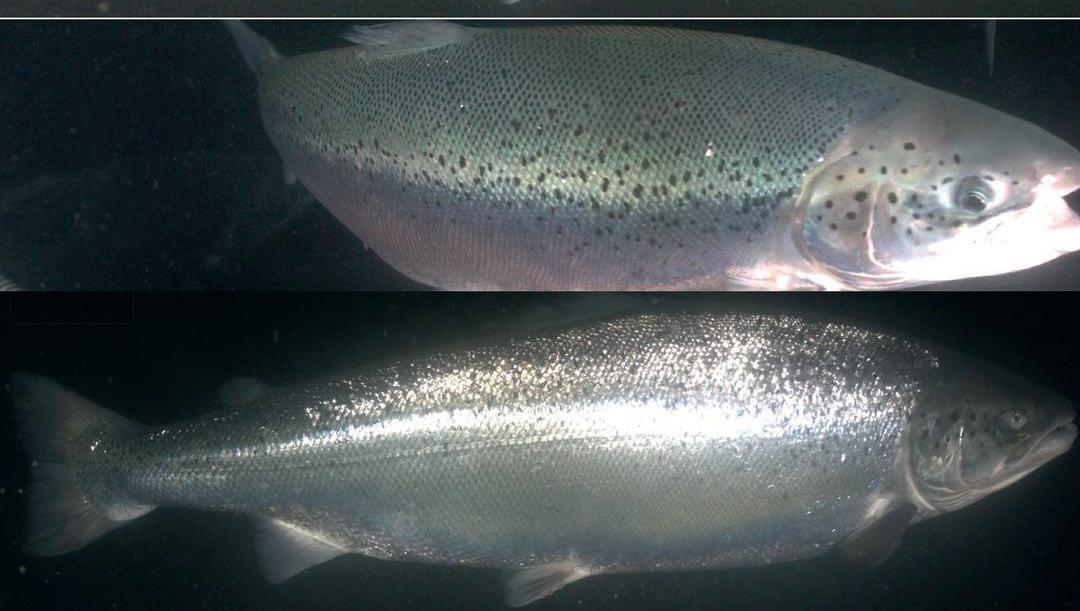


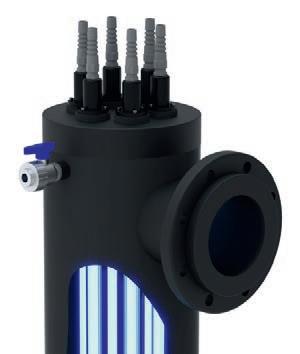

BIO-UV Group’s technologies are designed to enhance water quality in tanks by replicating natural ecosystems. The expansion of the shrimp aquaculture industry from Asia to global markets has led to a highly susceptible monoculture that is vulnerable to disease. The white spot syndrome (WSS) or Whispovirus has emerged as the most widespread virus in shrimp farming, posing a significant threat to crustaceans, especially shrimp and prawns. WSS has had a substantial impact on the global aquaculture industry, resulting in widespread loss of life and economic setbacks. BIO-UV Group’s products are currently operational in shrimp farms in Madagascar and Vietnam, showing promising results. Positioned downstream of the filtration systems, the reactors consistently treat the flow rate based on the water’s turbidity and transmittance. By utilising a germicidal approach, the products eradicate all microorganisms without the need for chemicals, ensuring natural disinfection and healthy water, thus safeguarding shrimp production.


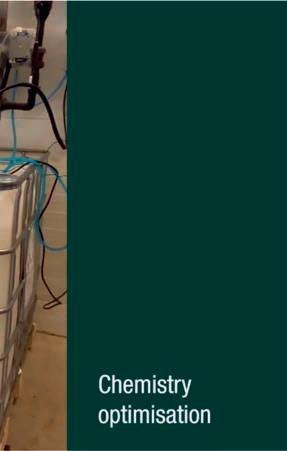
AI cameras used to study salmon behaviour
Icelandic salmon company Arctic Fish is using underwater cameras fitted with artificial intelligence to study salmon in their pens. The company says that the experiment is already proving its worth. The cameras from Optoscale are equipped with artificial intelligence, and can take thousands of pictures per day to monitor the growth and health of the fish in the pens. The system monitors - for example - average growth rate and the size and condition of the fish.





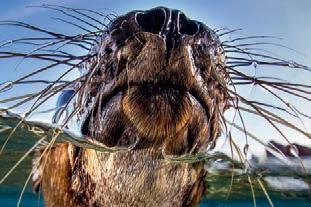
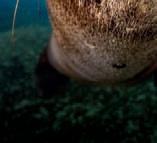












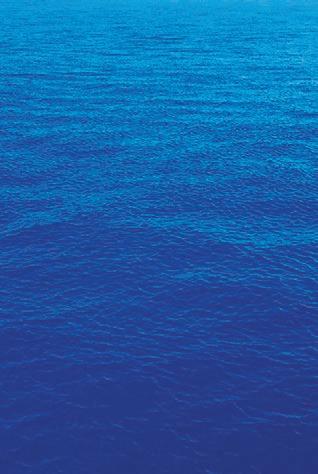

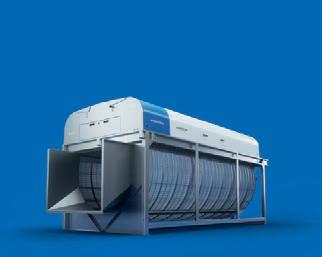





























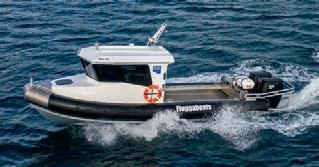













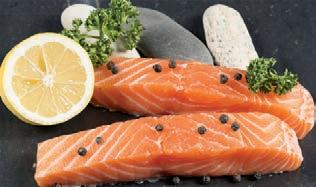

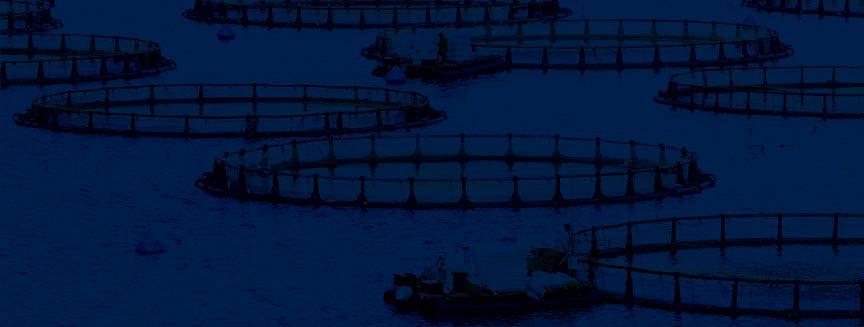
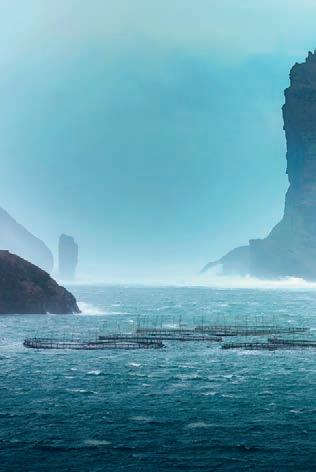




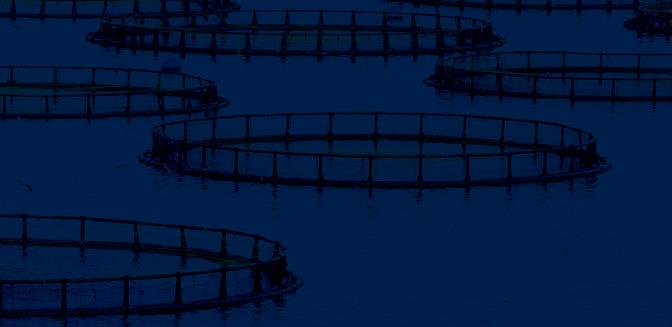



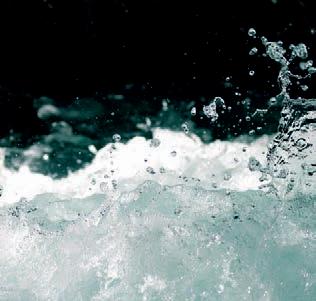






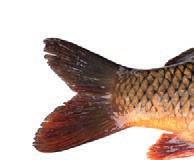
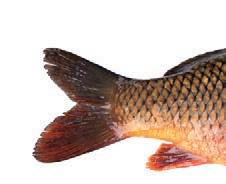
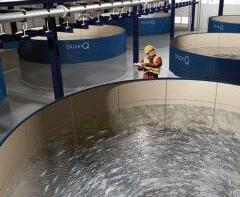

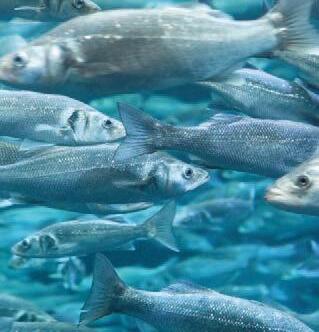
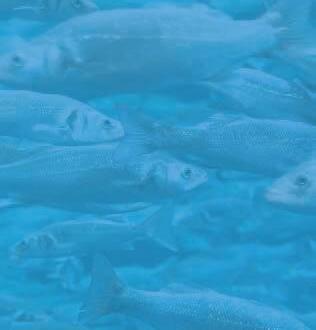














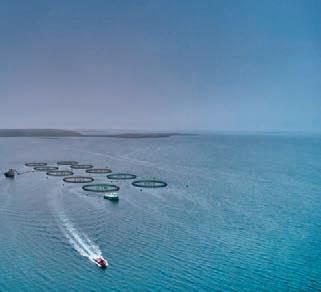
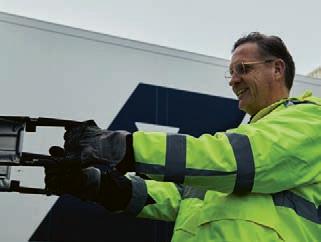


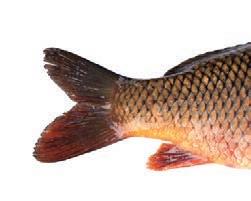



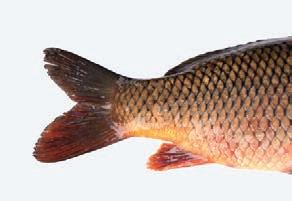







By Nick Joy
THIS month, I hope you will forgive a subject a little closer to home, as an important milestone has just passed for me.
Twenty-five years will have passed this month since three rather confused, relatively young idealists bought a salmon farming company in Sutherland. Loch Duart, as a concept, was created in the year before August 1999 but became a reality in that month. The process of watching my meagre savings slowly disappear, as we trailed from one potential funder to another, culminated in a moment of surreal madness. I was in a hotel in Dunkeld discussing a putative feed contract with the then head of Ewos in Scotland, Neil Spreckley, when the call came through that we had bought the company. It was an extraordinary moment that we had been dreaming of for a long time, and it had dominated everything in our lives. The moment of reality was a cold shower.
I had told my wife that I might not be home as we knew that we were close to signing the deal. I may or may not have had a small dram with Neil before heading off up the A9 to Scourie.
I should point out, for those who don’t know, that I used to work at Joseph Johnston and Sons, who owned the farm before we bought it, so I was a well-kent face in Scourie. It was an amazing sensation arriving on the sites I knew so well but in a totally different capacity. There was a degree of terror too; literally everything I had in the world was on the line. Actually it was “we” as my then wife was wonderfully supportive and brave, especially as we had a young family dependent on us.
It is especially hard on families when someone decides to become an entrepreneur. The public only sees the successes. The pressure in the early years of a business is intense, but at least there is a wage coming in. In contrast, when you are trying to raise the funds, meeting grey people, who talk grey and are simply interested in numbers, it is much harder. Raising funds costs money and in our case, money was in very short supply. I am not looking for sympathy but explaining just how significant that moment was when the call came through. Finally there would be a wage coming into our household – maybe, one day, a good one.
It simply never occurred to me to think how long the business would last. We had a five-year plan and that seemed a very long time. We had very limited experience of running a business, still less one that had been run down considerably. I think we hadn’t realised, with all of our due diligence, just how much it had slipped. On arrival at the sites, it was lovely to meet so many people that I knew and quite a few that I admired. It didn’t take long for the fear to start creeping in, however. The stocks were not in great shape and there were many challenges, from sea lice numbers to grilse percentages. High retained grilse in August is not very good news!
Despite this we survived these challenges, and our worst crisis in 2002/3 when we very nearly ran out of cash. If it wasn’t for the decency of some of our major
”It simply never occurred to me to think how long the business would last
creditors we would have disappeared at a very young age. I still remember them with great gratitude because they believed in us when it would have been much easier to insist on terms.
Time goes by so fast. Last week I bought a box of 4-5kg fish from our old company without even vaguely remembering the relevance of the time. I was very proud to open the box and find that the quality of fish was as good as I can recall ever seeing.
So if you had asked me all of those years ago, whether would I have expected Loch Duart to still be going after 25 years, I probably would have said “no”. I would have been so pleased to know that it still does exist, and as a separate company doing its own thing, with its own identity and aspirations and excellent quality of production. I am sure I would have been proud of that and, to tell you the truth, I still am.
